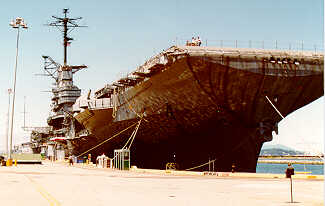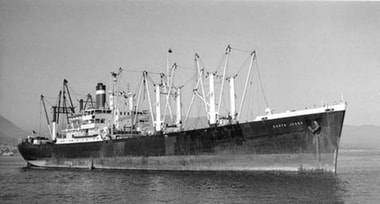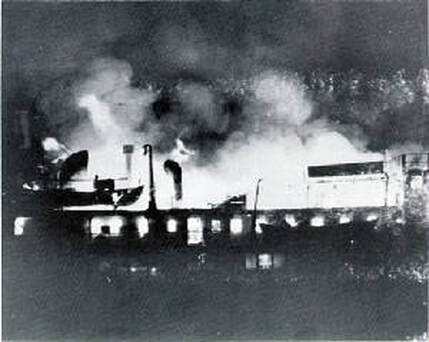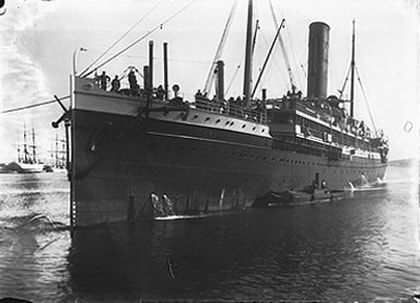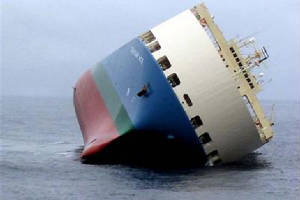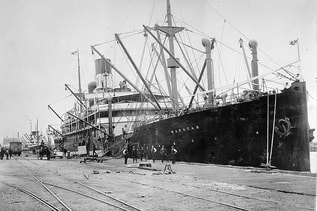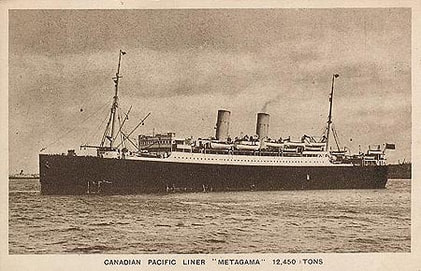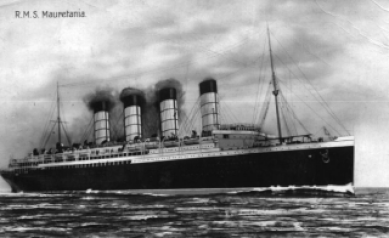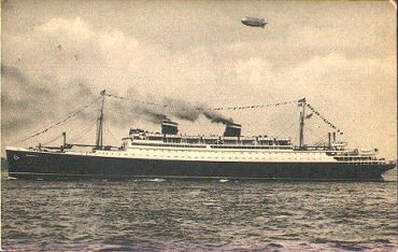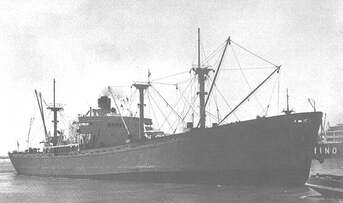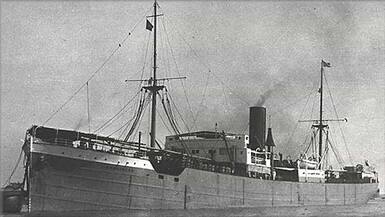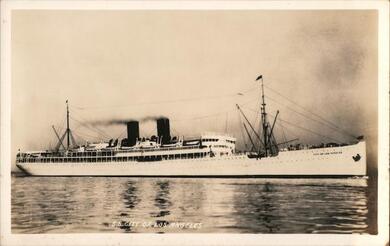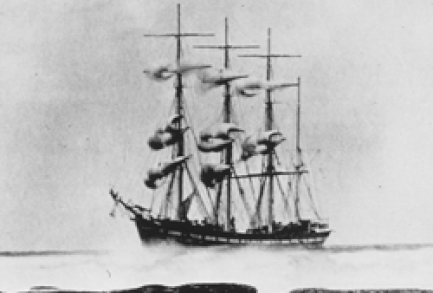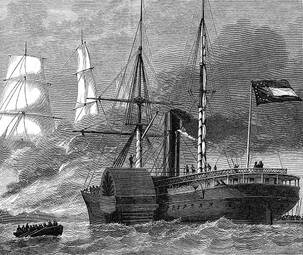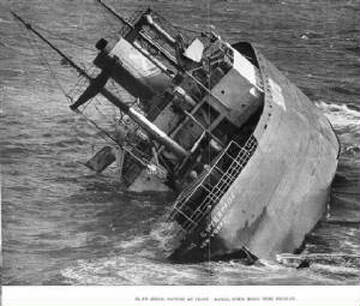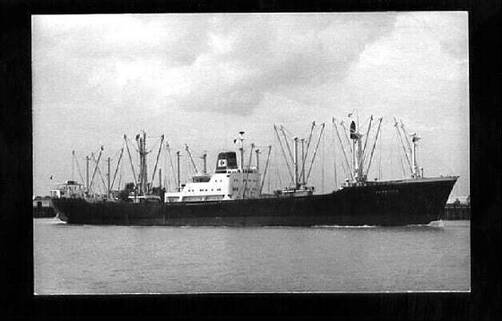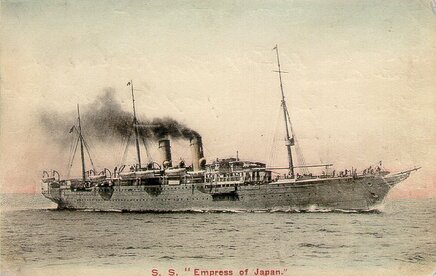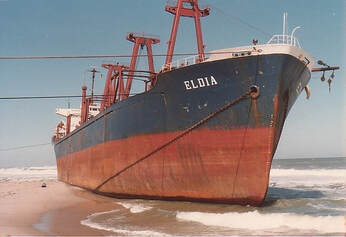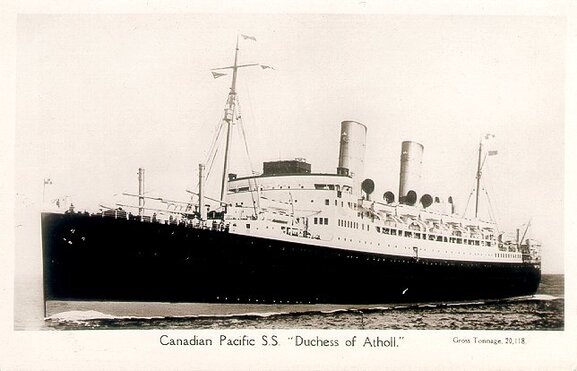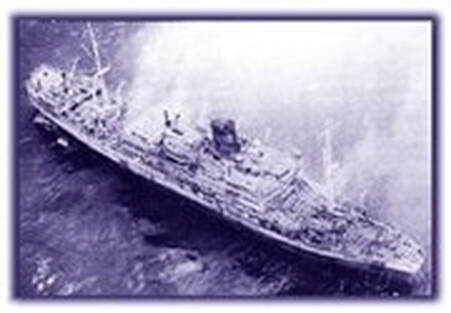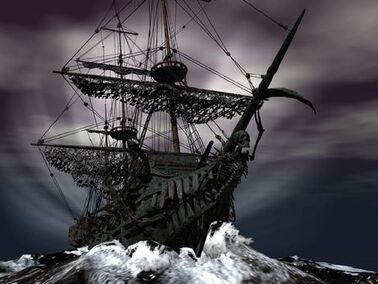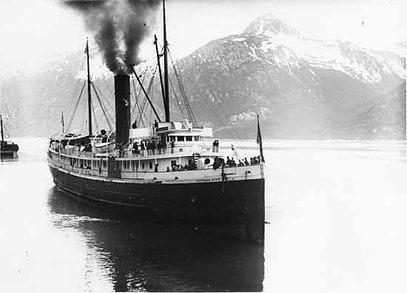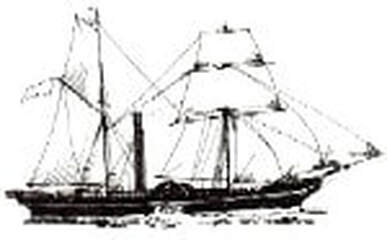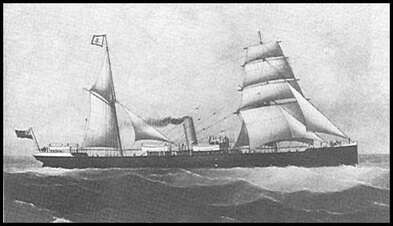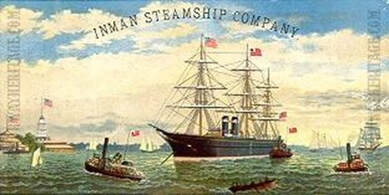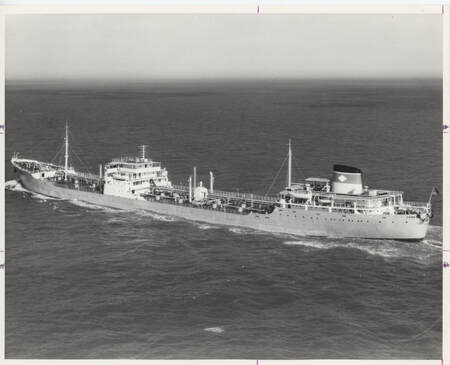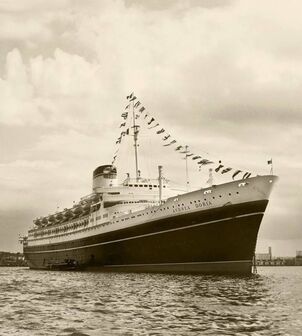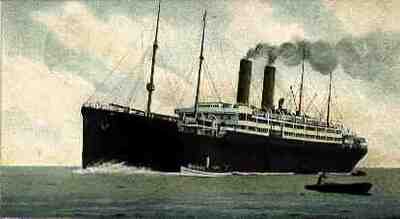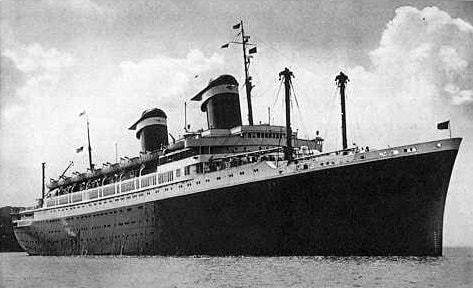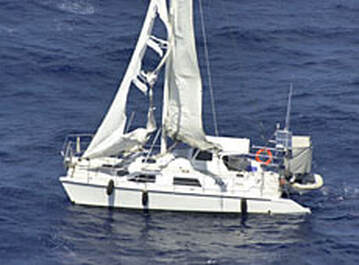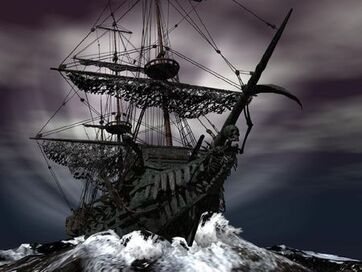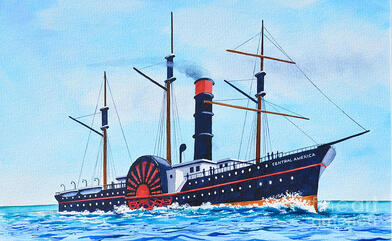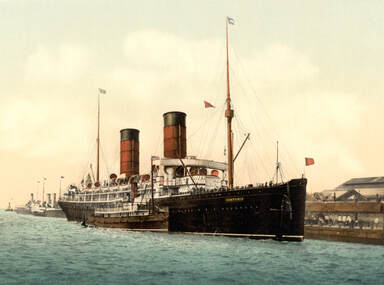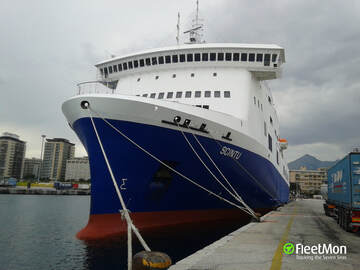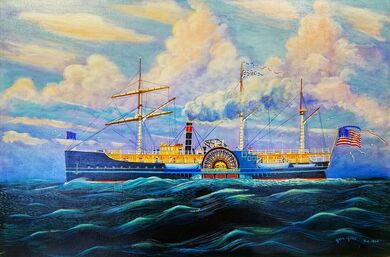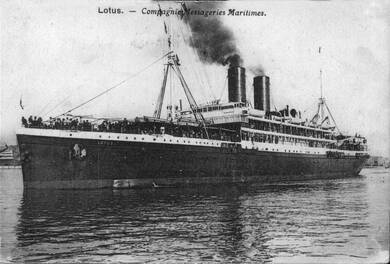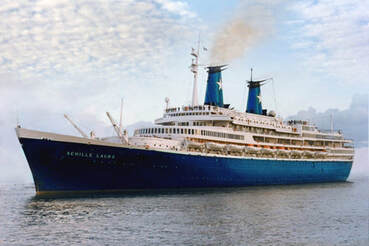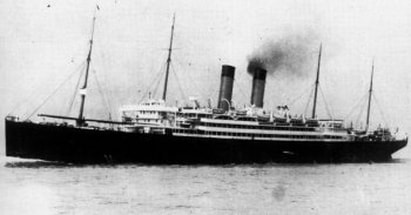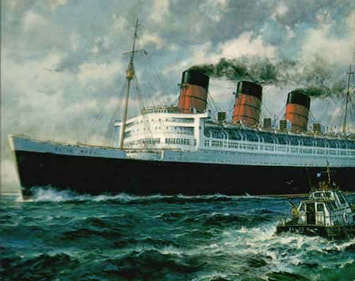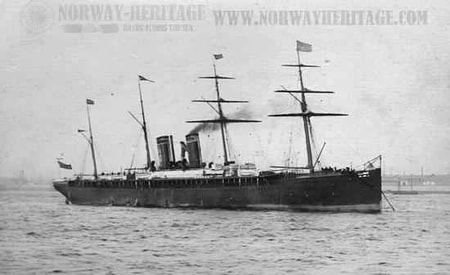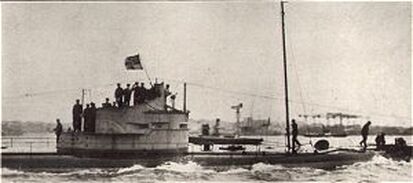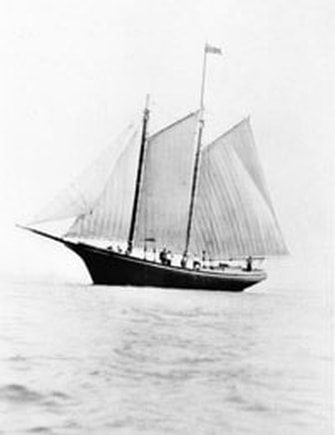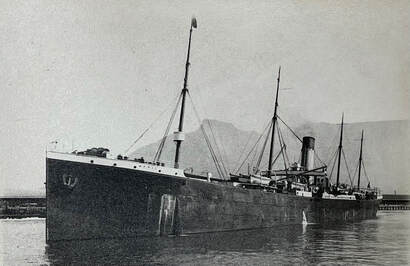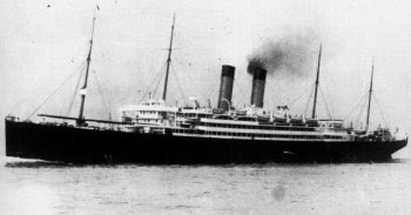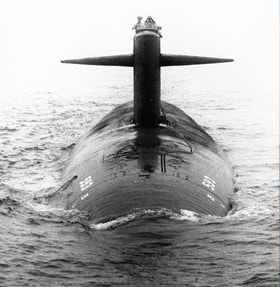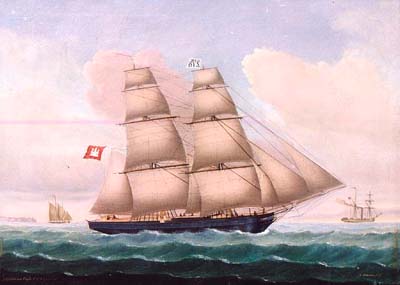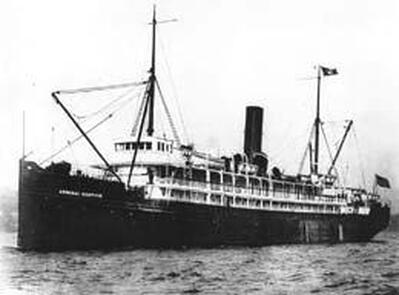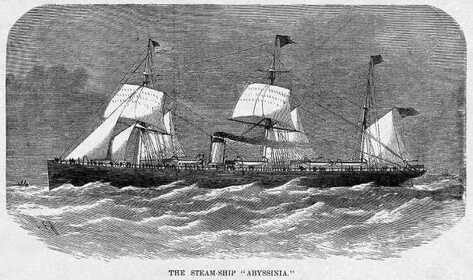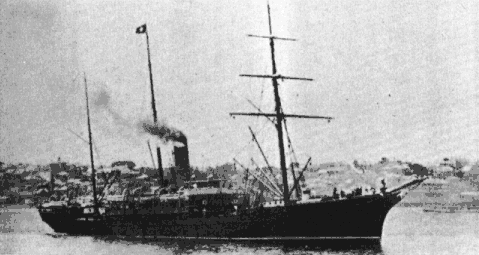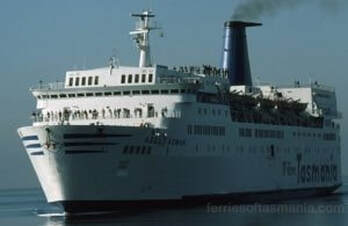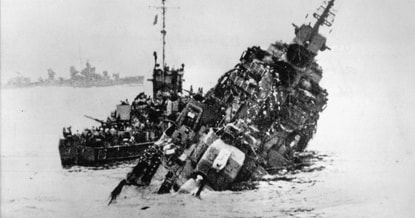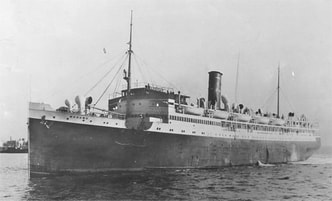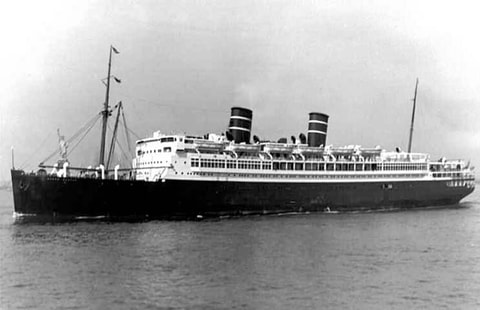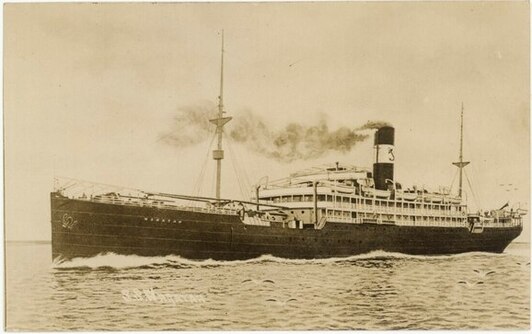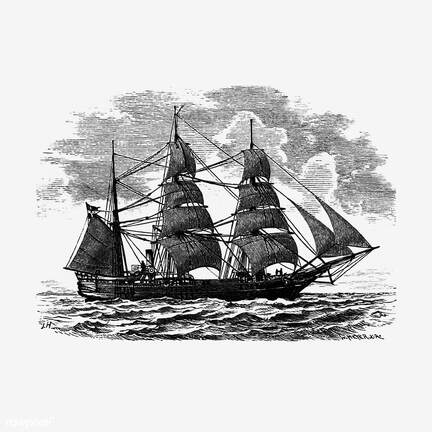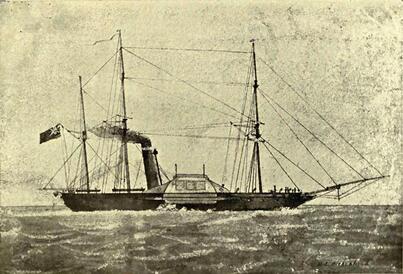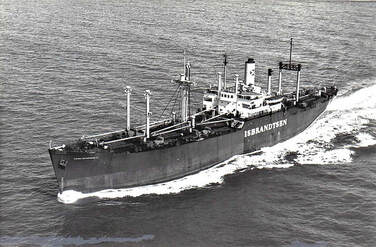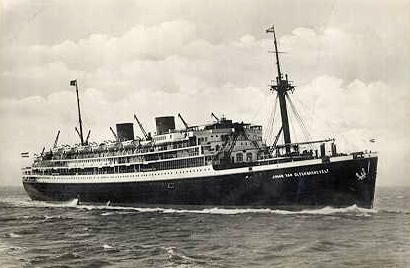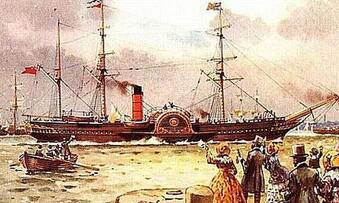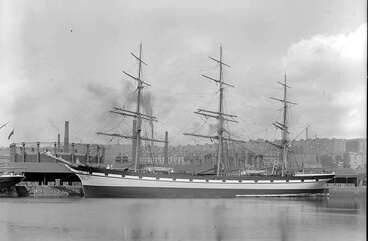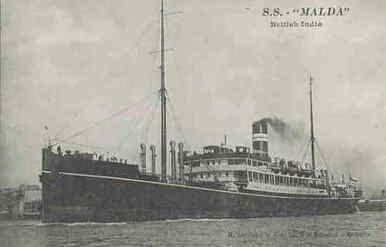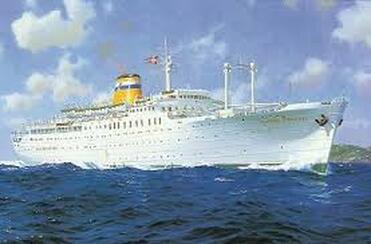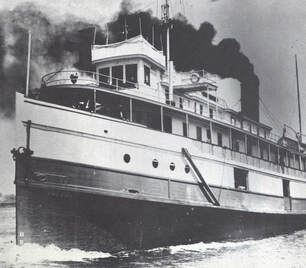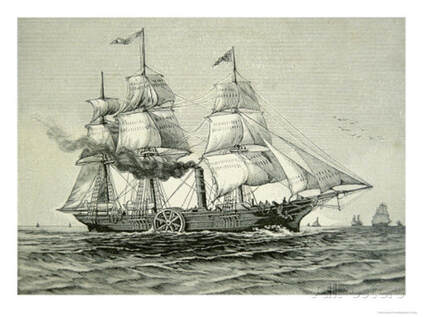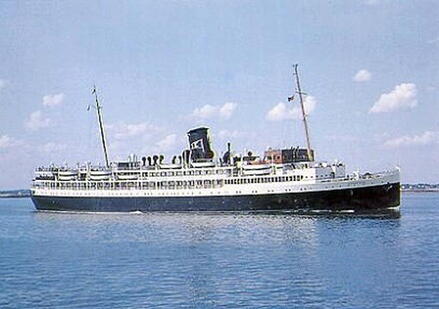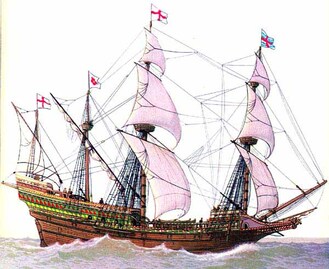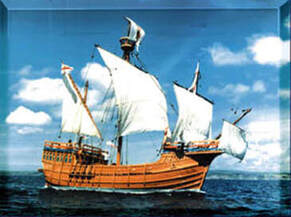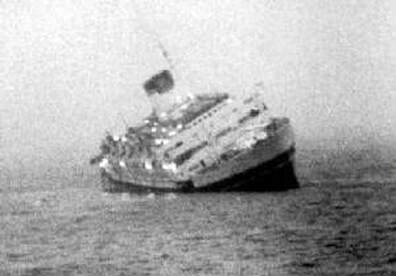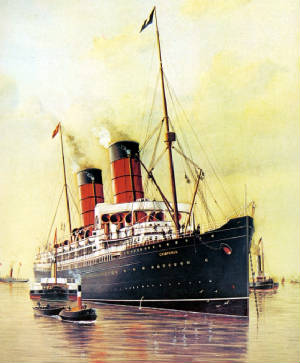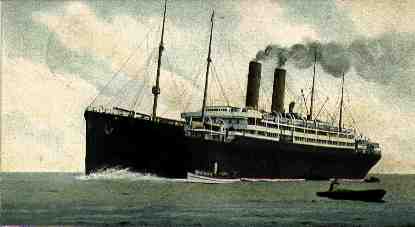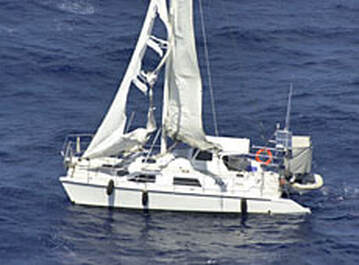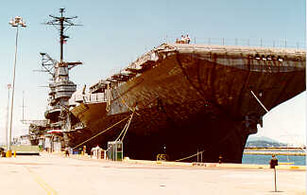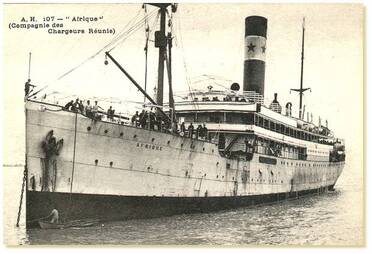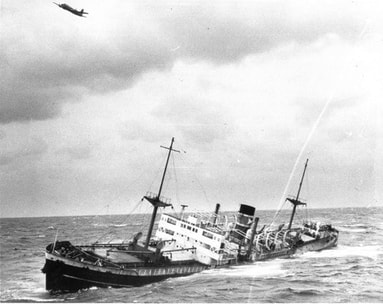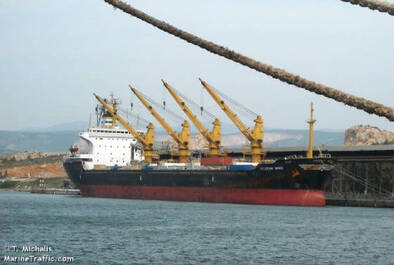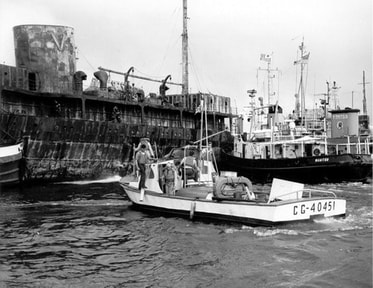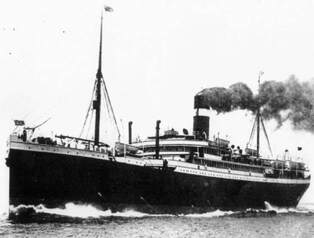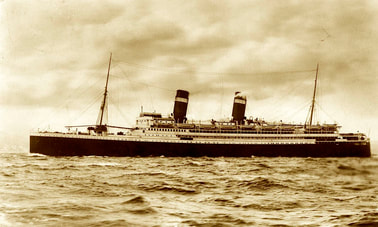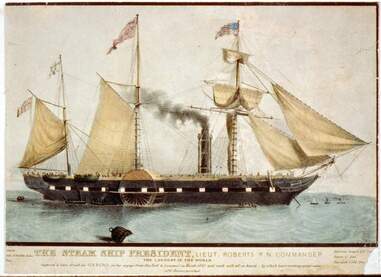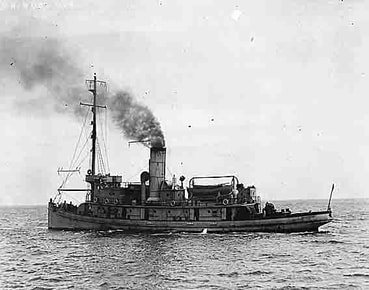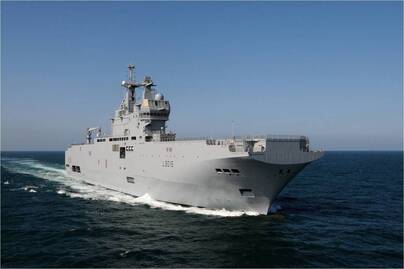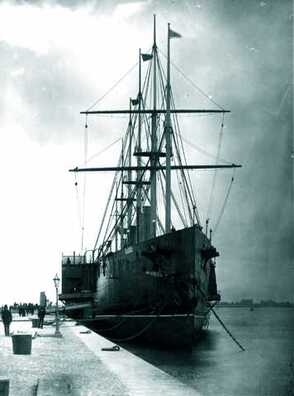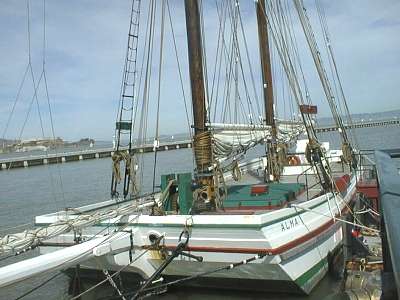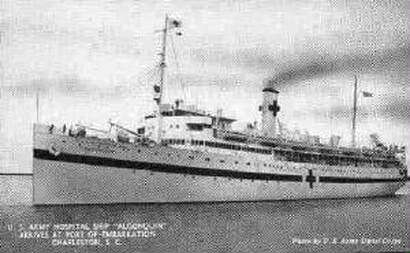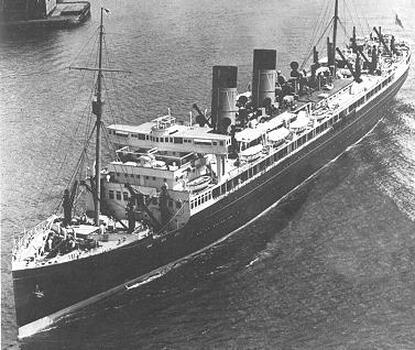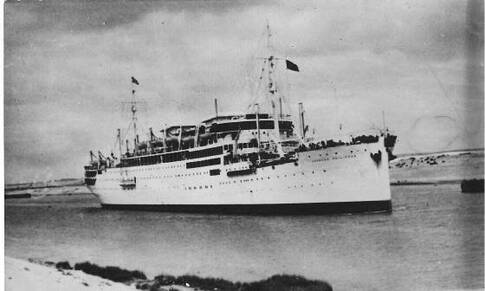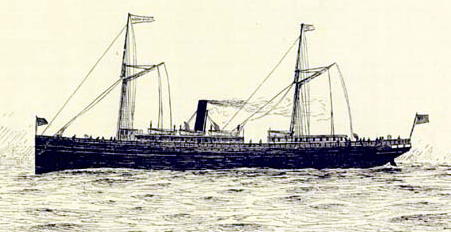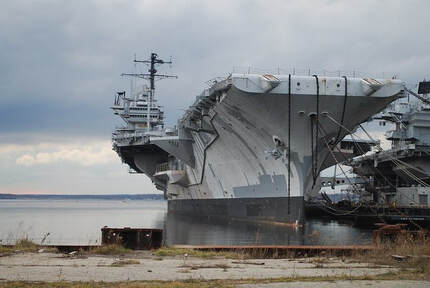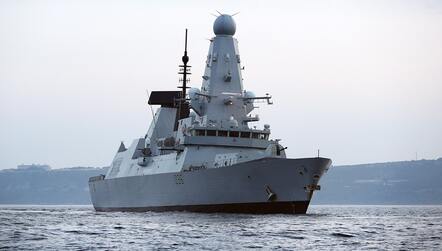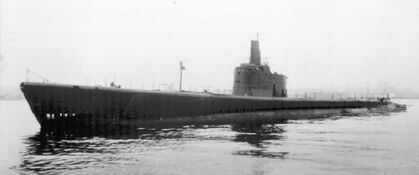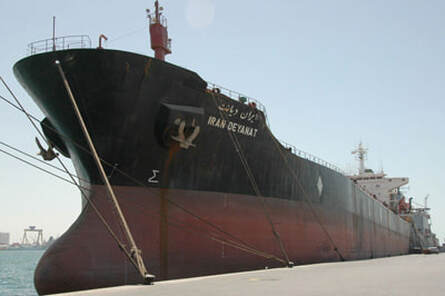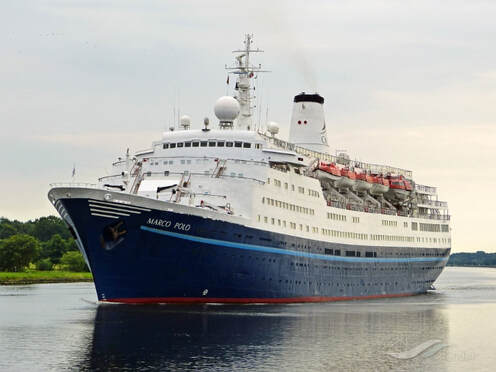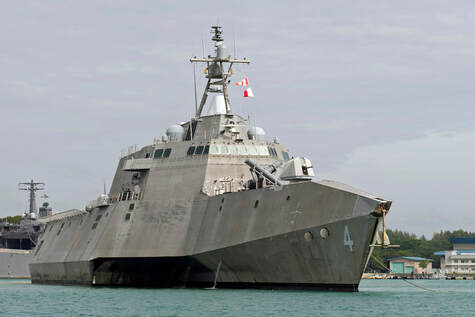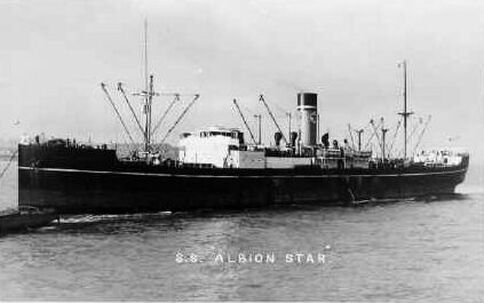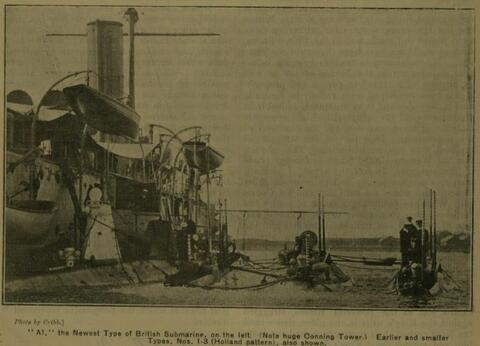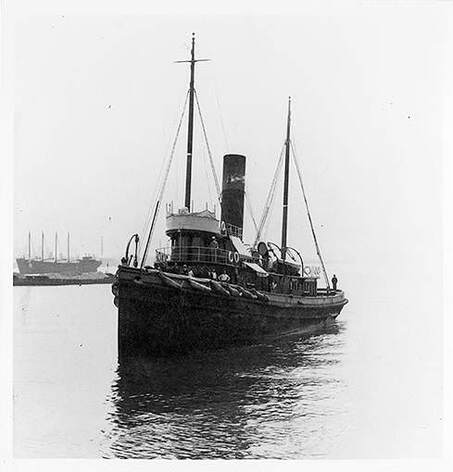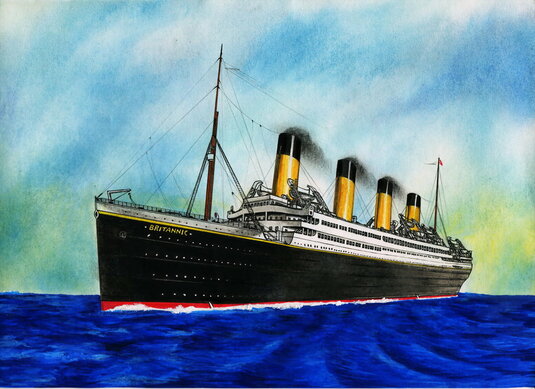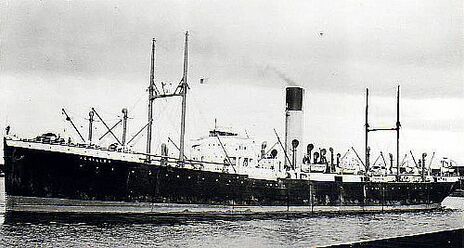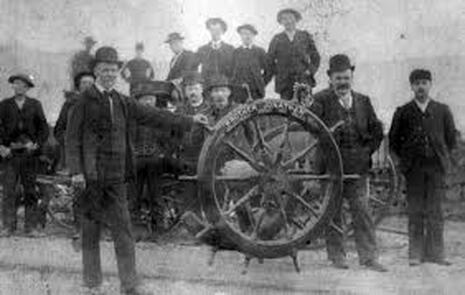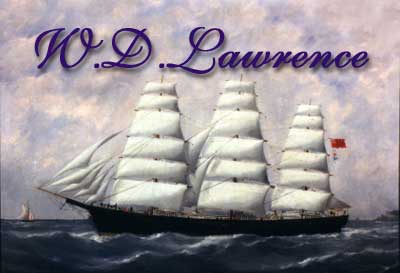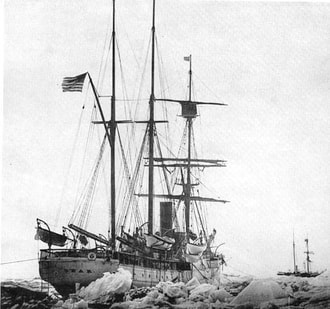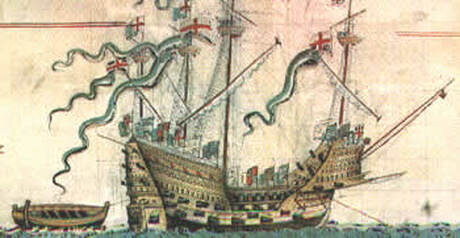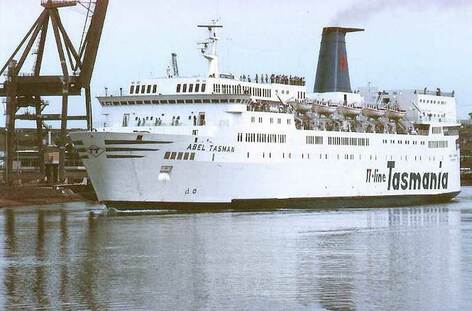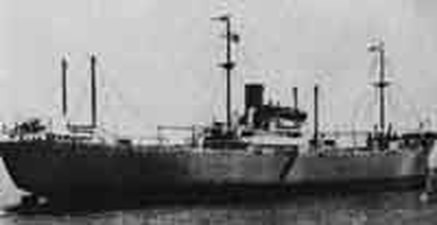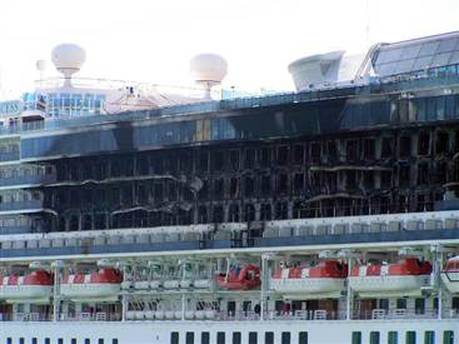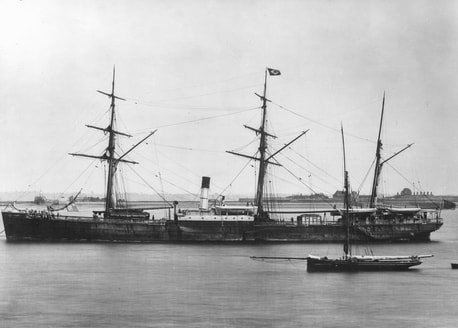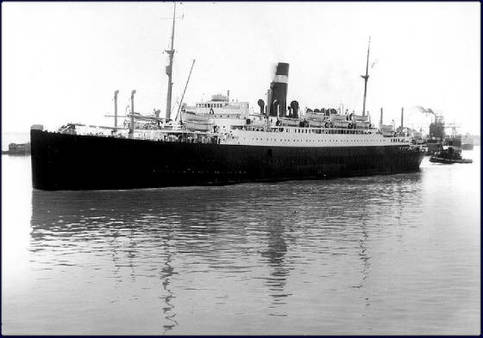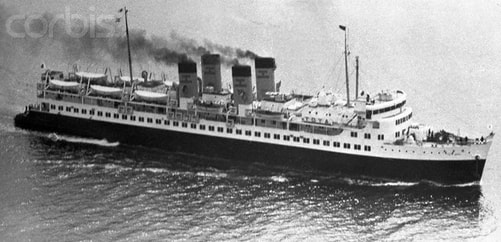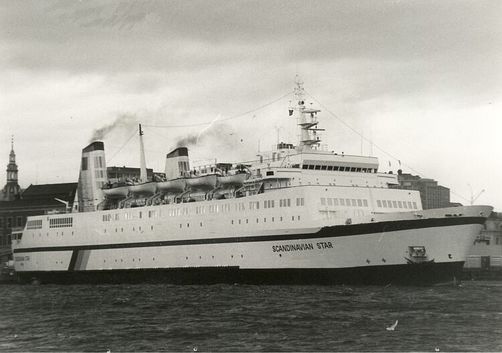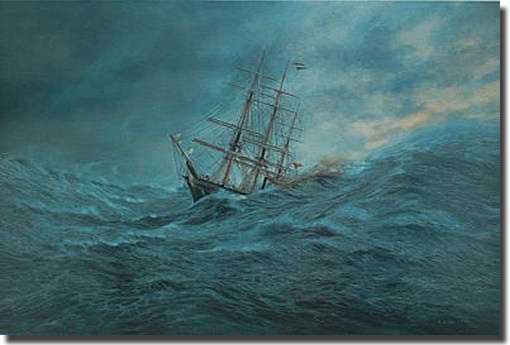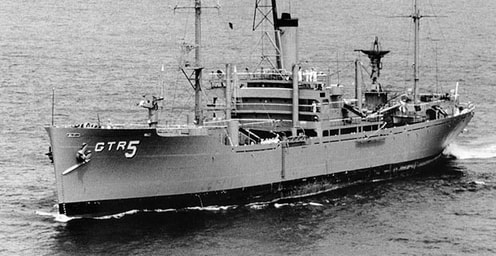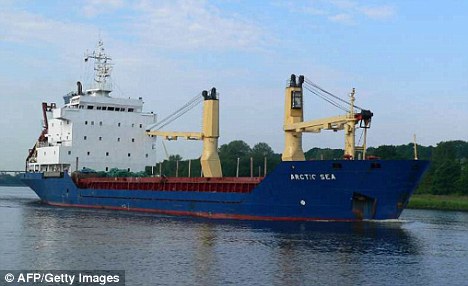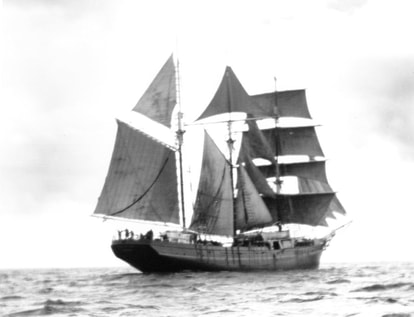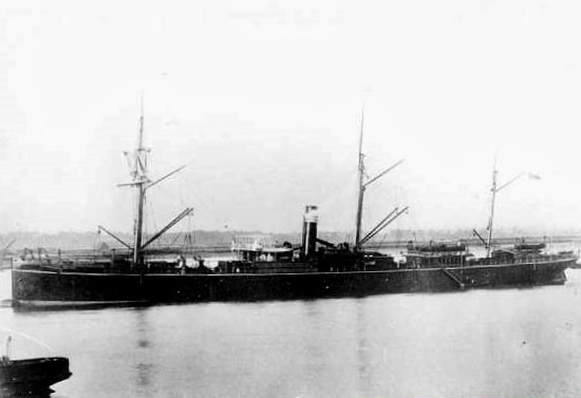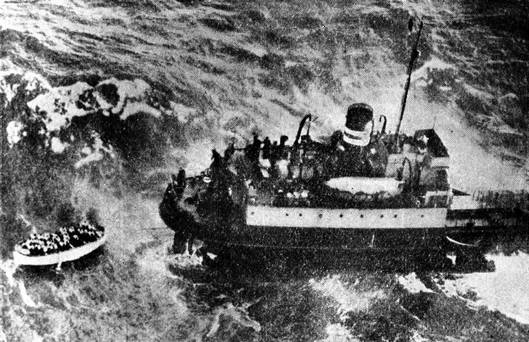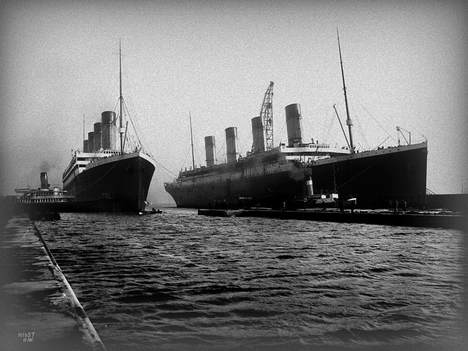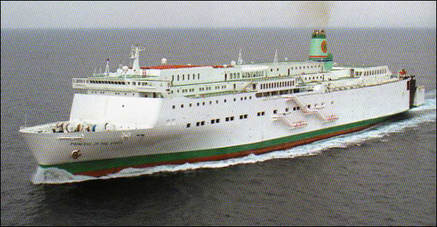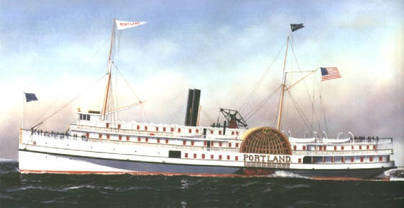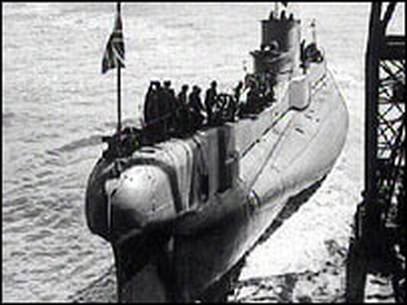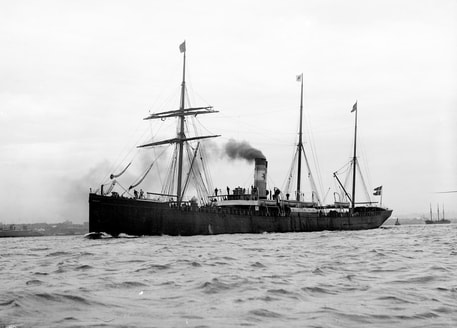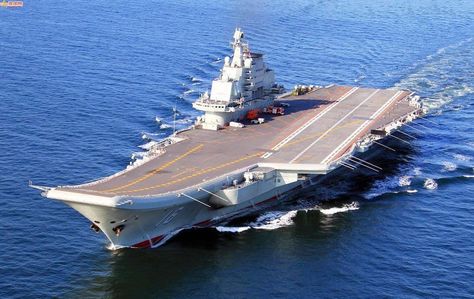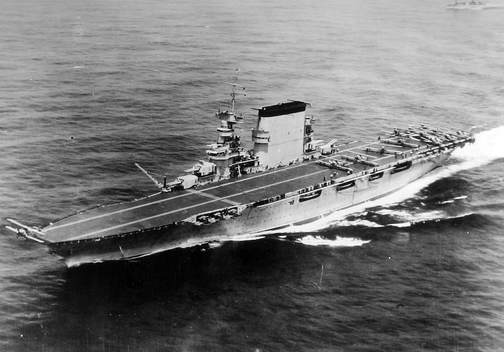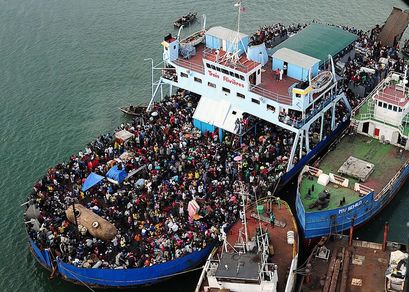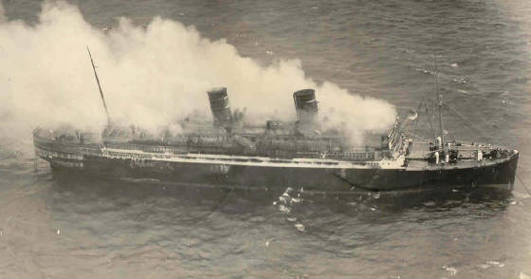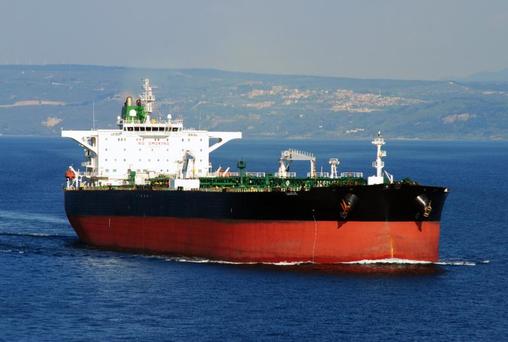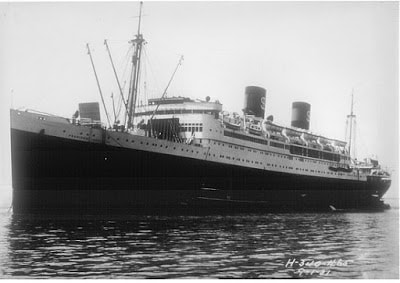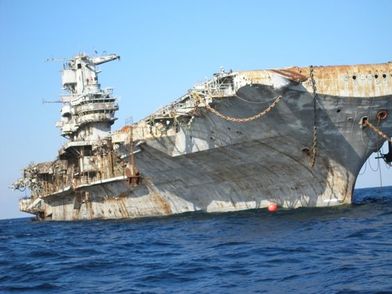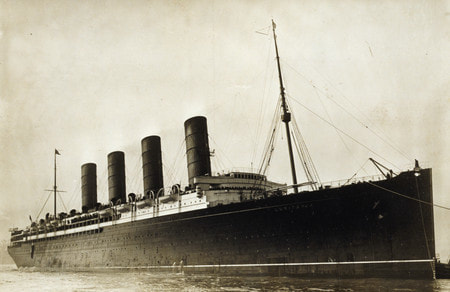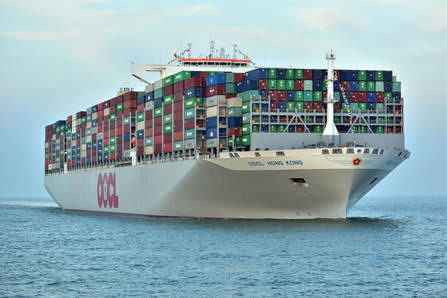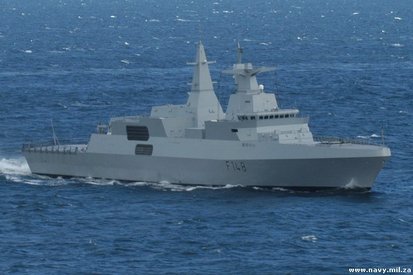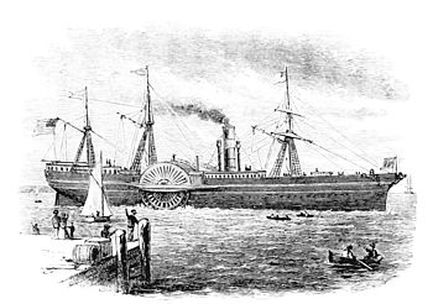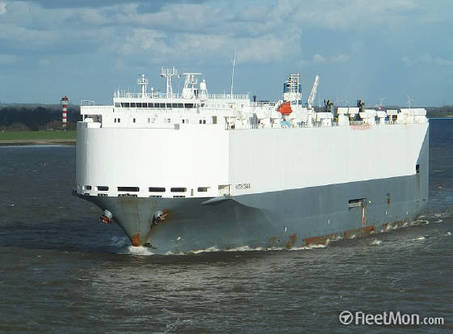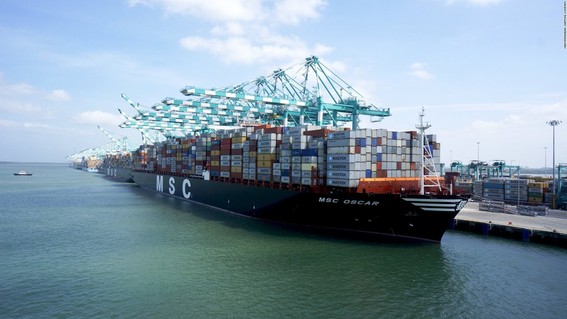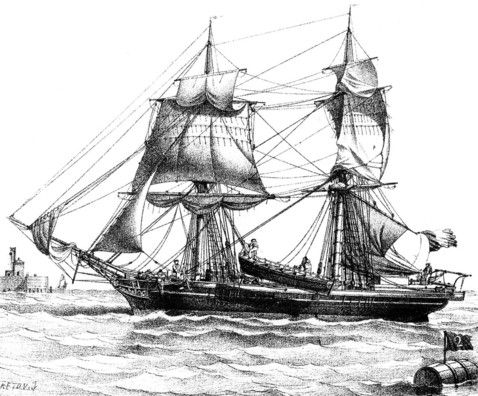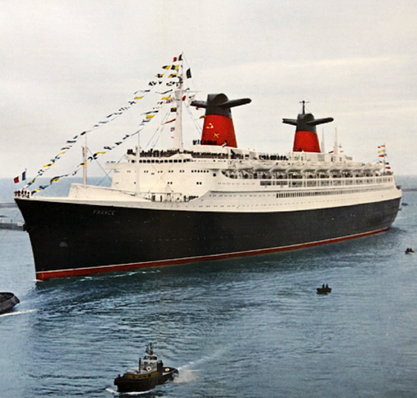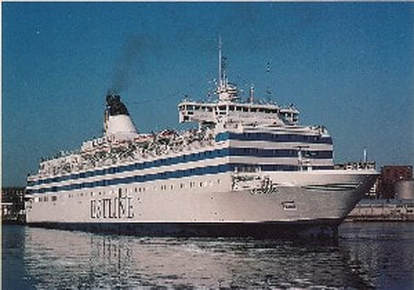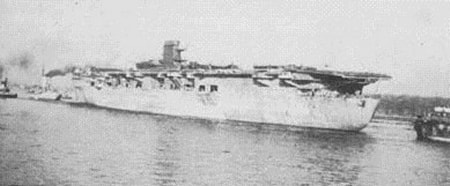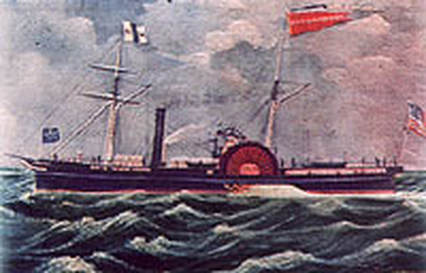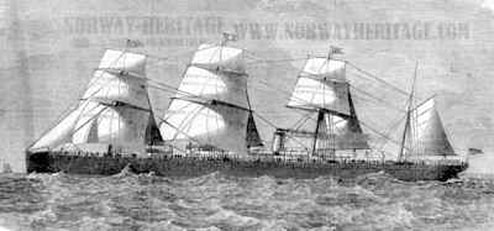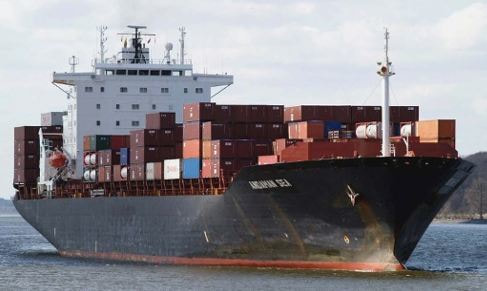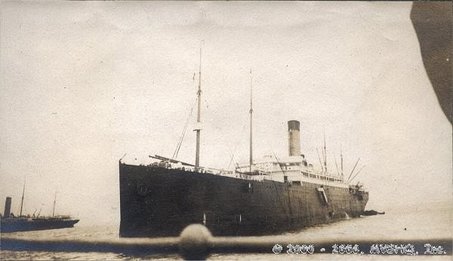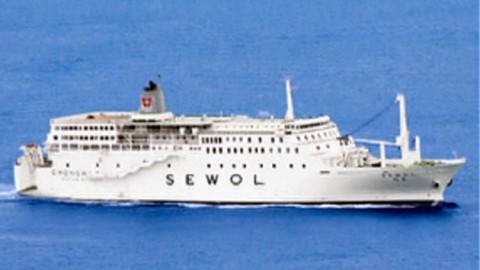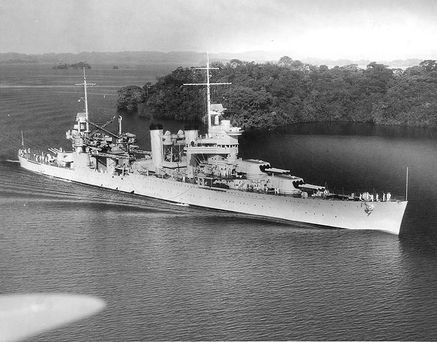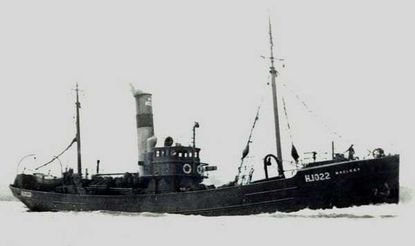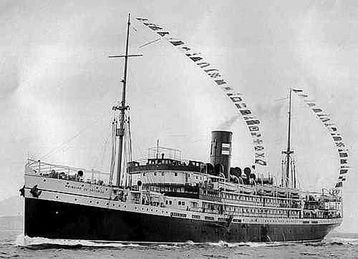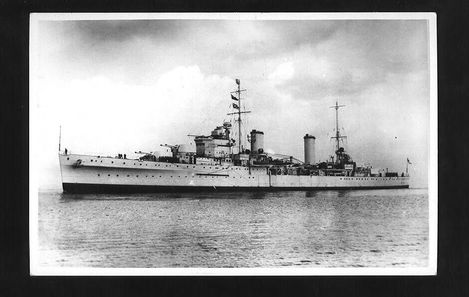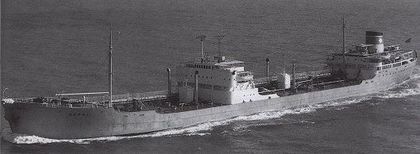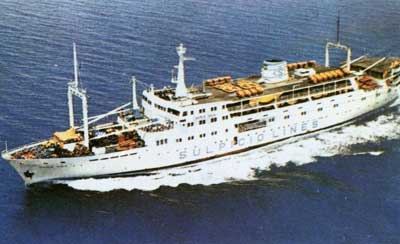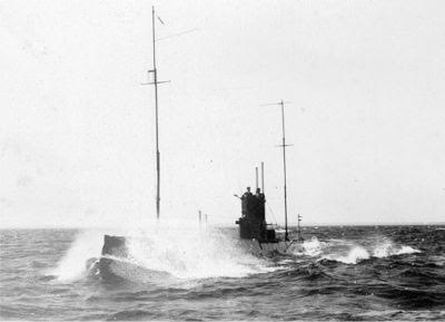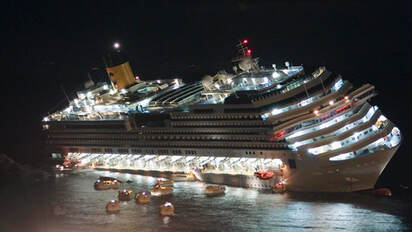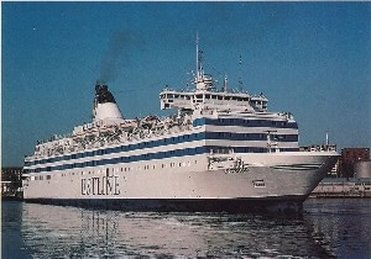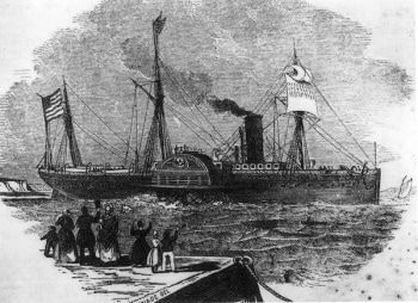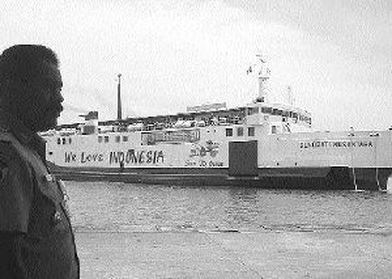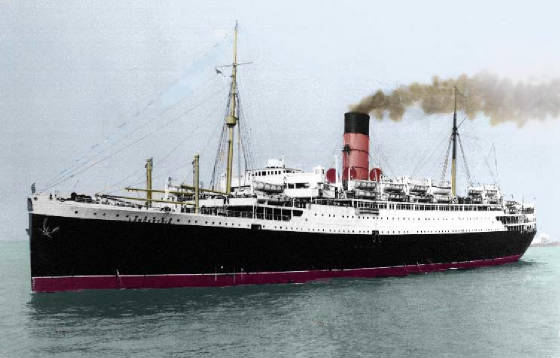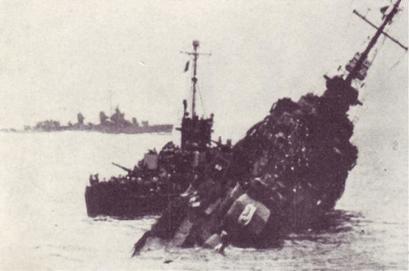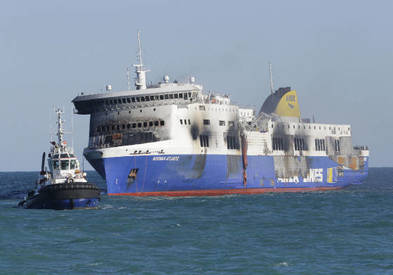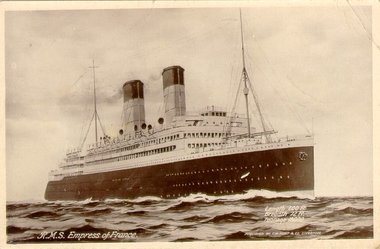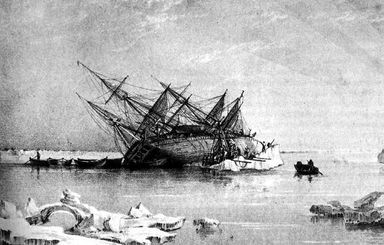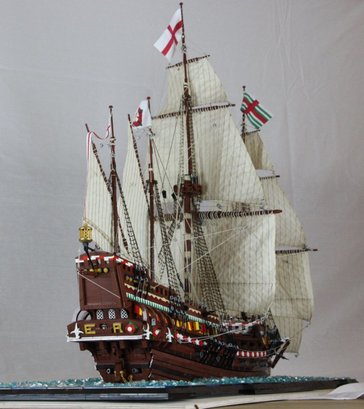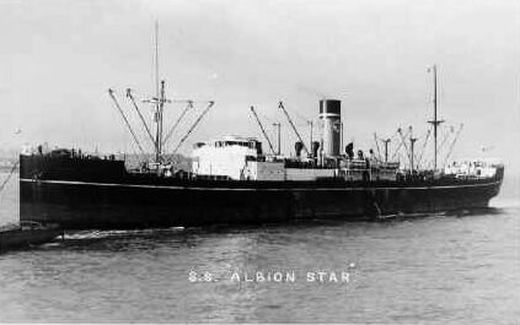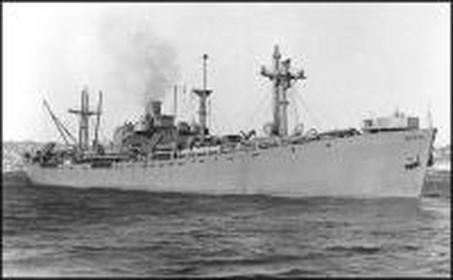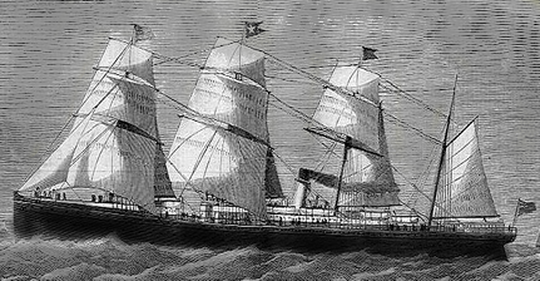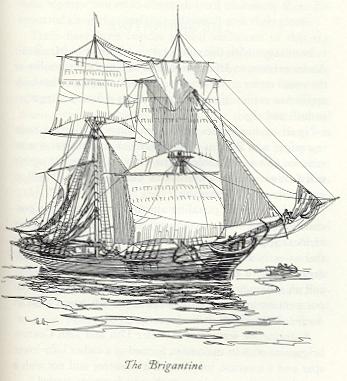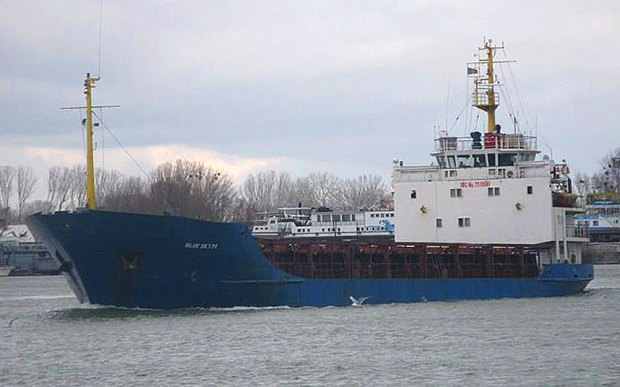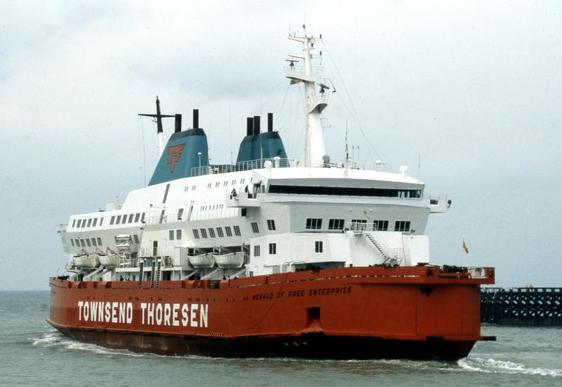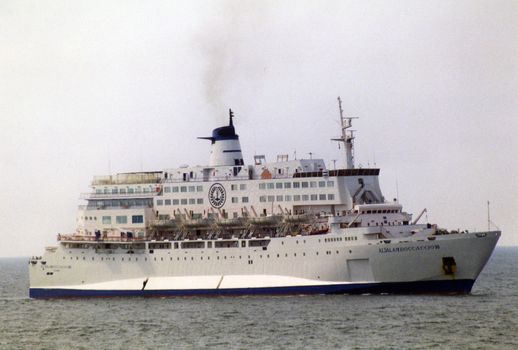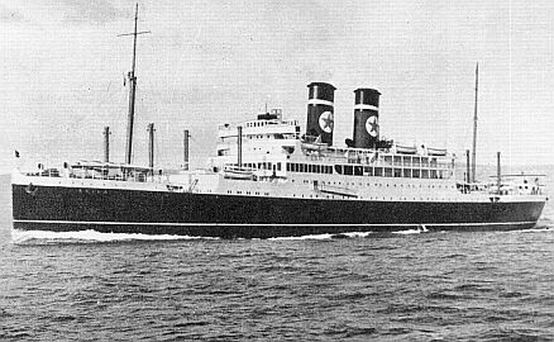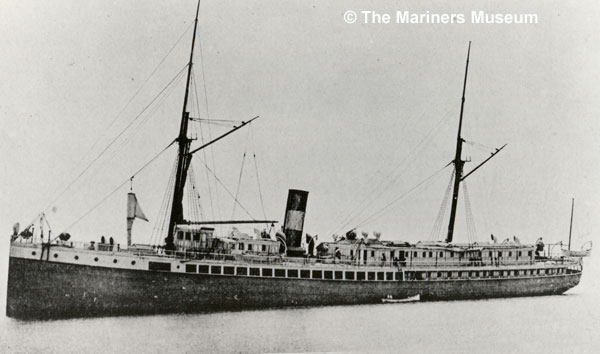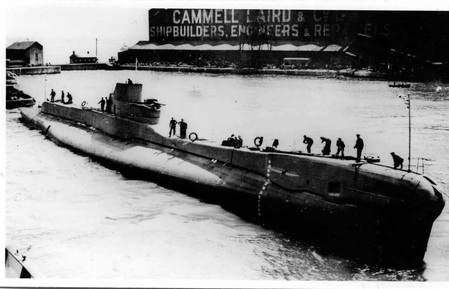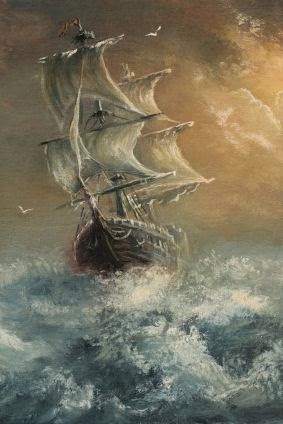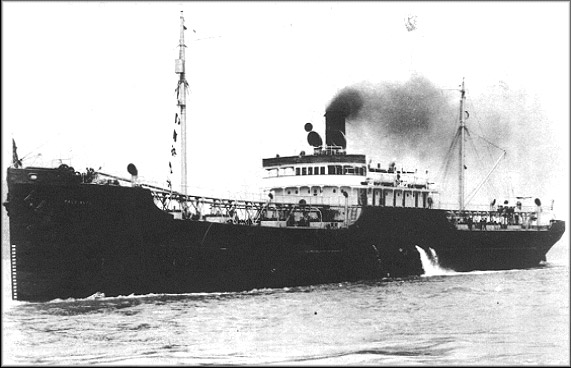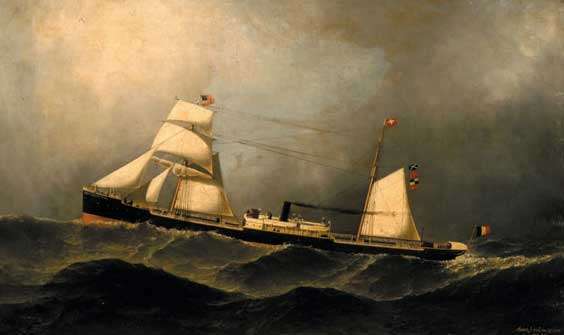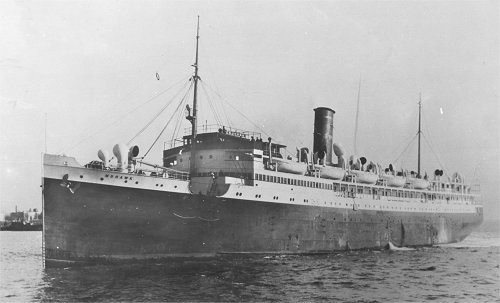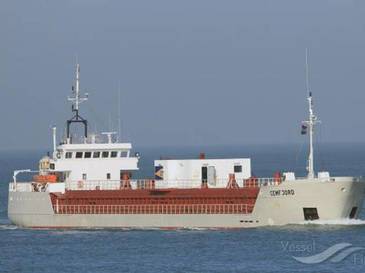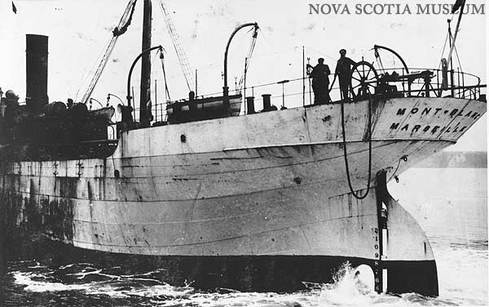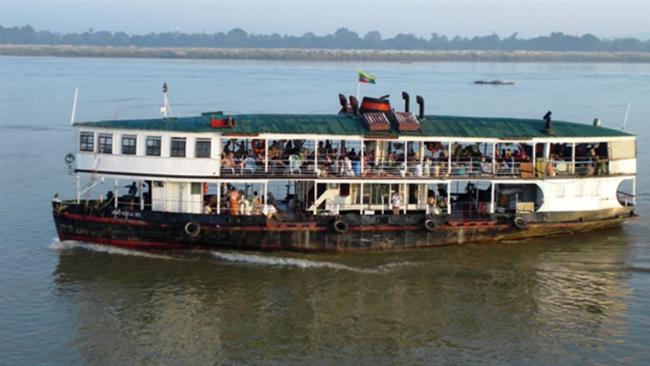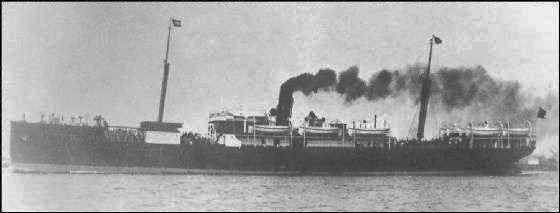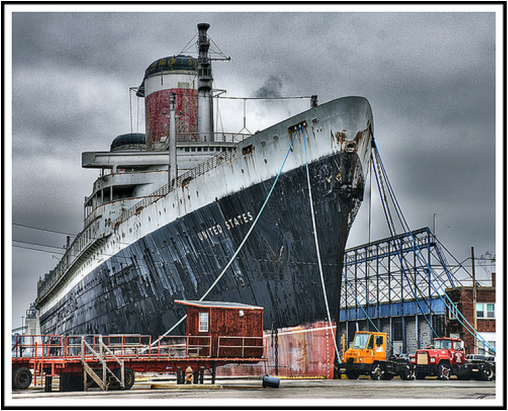On The Open Sea
Haunted Carrier USS Hornet
She is a decommissioned relic of World War II and the Cold War now, but in her day the aircraft carrier USS Hornet served with an almost unparalleled distinction. The pilots that flew from her decks are credited with destroying 1,310 Japanese aircraft and sinking or severely damaging 1,259,710 tons of enemy shipping. The Hornet was involved in nearly every Pacific amphibious landing after March, 1944 and her planes were involved in sinking the super Japanese battleship Yamato. Hornet pilots also made the first raids over Tokyo after Doolittle’s early attack in 1942.
She is a decommissioned relic of World War II and the Cold War now, but in her day the aircraft carrier USS Hornet served with an almost unparalleled distinction. The pilots that flew from her decks are credited with destroying 1,310 Japanese aircraft and sinking or severely damaging 1,259,710 tons of enemy shipping. The Hornet was involved in nearly every Pacific amphibious landing after March, 1944 and her planes were involved in sinking the super Japanese battleship Yamato. Hornet pilots also made the first raids over Tokyo after Doolittle’s early attack in 1942.
The Strange Story Of The Ourang Medan
As the story is told, two American vessels steaming in the Strait of Malacca in Indonesian waters sometime during the summer of 1947 picked up a distress radio signal from a Dutch merchant ship, the Ourang Medan. The radio operator on the Ourang Medan sent the following Morse code message: “All officers including captain are dead lying in chartroom and bridge. Possibly whole crew dead.” This was followed by a final message: “I die.” After that, the ship’s radio went dead.
As the story is told, two American vessels steaming in the Strait of Malacca in Indonesian waters sometime during the summer of 1947 picked up a distress radio signal from a Dutch merchant ship, the Ourang Medan. The radio operator on the Ourang Medan sent the following Morse code message: “All officers including captain are dead lying in chartroom and bridge. Possibly whole crew dead.” This was followed by a final message: “I die.” After that, the ship’s radio went dead.
Burning Of The Yarmouth Castle
An incompetent skipper and cowardly crew was blamed for the deaths of about a 100 passengers and crew members when the cruise ship Yarmouth Castle burned during a Caribbean cruise on Nov. 13, 1965. The fire that started around 1 a.m. in one of the cabins quickly spread through the wooden superstructure of the 39-year-old vessel, forcing 373 passengers and 174 crew members in a battle for their lives.
An incompetent skipper and cowardly crew was blamed for the deaths of about a 100 passengers and crew members when the cruise ship Yarmouth Castle burned during a Caribbean cruise on Nov. 13, 1965. The fire that started around 1 a.m. in one of the cabins quickly spread through the wooden superstructure of the 39-year-old vessel, forcing 373 passengers and 174 crew members in a battle for their lives.
Lost Steamship Omrah Victim Of War
The long list of names of fine steamships in service as troop carriers during the First World War included the Omrah, a vessel that today remains nearly forgotten in the historical record. Built by the Fairfield Shipbuilders in Glasgow in 1899, the Omrah was a 480-foot-long vessel with a single funnel, two masts and twin screws. She could reach a speed of 18 knots and was designed to carry 350 first and second class and up to 500 third-class passengers.
The long list of names of fine steamships in service as troop carriers during the First World War included the Omrah, a vessel that today remains nearly forgotten in the historical record. Built by the Fairfield Shipbuilders in Glasgow in 1899, the Omrah was a 480-foot-long vessel with a single funnel, two masts and twin screws. She could reach a speed of 18 knots and was designed to carry 350 first and second class and up to 500 third-class passengers.
Was The Cougar Ace A Top-Heavy Ship?
A dramatic rescue by helicopter of the 23 members of the listing automobile carrier Cougar Ace has revealed yet another incident involving a modern ship at sea just tipping over for undisclosed reasons. The 654-foot freighter was making its way across the Northern Pacific on its way to Canada with nearly 5,000 automobiles packed on its upper decks when the vessel began listing in what was described as “choppy seas.” The ship was not bucking a severe storm, or excessively high seas.
A dramatic rescue by helicopter of the 23 members of the listing automobile carrier Cougar Ace has revealed yet another incident involving a modern ship at sea just tipping over for undisclosed reasons. The 654-foot freighter was making its way across the Northern Pacific on its way to Canada with nearly 5,000 automobiles packed on its upper decks when the vessel began listing in what was described as “choppy seas.” The ship was not bucking a severe storm, or excessively high seas.
“Unsinkable” Waratah Disappeared On First Voyage
The world remembers the Titanic because of its great size and the fact that her builders boasted the ship was unsinkable. Yet the vessel sank with great loss of life on its maiden voyage across the North Atlantic. Nearly forgotten in naval history is the story of another “unsinkable” ship, the British liner Waratah, that also sank on its voyage from England to Australia and then back again.This ship, billed as the fine new flagship of the Blue Anchor Line, disappeared in 1909, three years before the Titanic disaster, with 211 souls and 6,500 tons of cargo during a return trip from Australia. Many believe it sank somewhere near the southern tip of Africa.
The world remembers the Titanic because of its great size and the fact that her builders boasted the ship was unsinkable. Yet the vessel sank with great loss of life on its maiden voyage across the North Atlantic. Nearly forgotten in naval history is the story of another “unsinkable” ship, the British liner Waratah, that also sank on its voyage from England to Australia and then back again.This ship, billed as the fine new flagship of the Blue Anchor Line, disappeared in 1909, three years before the Titanic disaster, with 211 souls and 6,500 tons of cargo during a return trip from Australia. Many believe it sank somewhere near the southern tip of Africa.
Remembering The Metagama
The steamship Metagama was a typical commercial seagoing vessel in her day. She was built by Barclay, Curie & Co. of Glasgow and launched in April, 1915, just in time to see duty as a troopship during World War I. England and Germany had been at war for nearly a year and the Canadians were already supplying troops for the war effort. The steamer was large for its day, at just over 500 feet. She offered accommodations for 520 first-class and 1,200 third class passengers. While designed to carry both passengers and freight for her owners, the Canadian Pacific Railway Co., the Metagama may have been pressed almost immediately into service as a troop carrier.
The steamship Metagama was a typical commercial seagoing vessel in her day. She was built by Barclay, Curie & Co. of Glasgow and launched in April, 1915, just in time to see duty as a troopship during World War I. England and Germany had been at war for nearly a year and the Canadians were already supplying troops for the war effort. The steamer was large for its day, at just over 500 feet. She offered accommodations for 520 first-class and 1,200 third class passengers. While designed to carry both passengers and freight for her owners, the Canadian Pacific Railway Co., the Metagama may have been pressed almost immediately into service as a troop carrier.
Lusitania's Forgotten Sister Ship Mauretania
History will remember the Lusitania because of the German torpedo that sent it to the bottom off England’s coast and helped spark American involvement in World War I. But the Lusitania’s more elegant sister ship, the Mauretania, which served faithfully throughout the war and carried thousands of passengers comfortably on North Atlantic crossings, today is all but forgotten. That is because the Mauretania was a lucky ship. Nothing, except a small fire that scorched some of the superstructure in 1921, ever happened to it.
History will remember the Lusitania because of the German torpedo that sent it to the bottom off England’s coast and helped spark American involvement in World War I. But the Lusitania’s more elegant sister ship, the Mauretania, which served faithfully throughout the war and carried thousands of passengers comfortably on North Atlantic crossings, today is all but forgotten. That is because the Mauretania was a lucky ship. Nothing, except a small fire that scorched some of the superstructure in 1921, ever happened to it.
Liner Manhattan Forever Altered After 1941 Grounding
The cruise liner Manhattan was a sleek 705-foot steamship operating for the United States Line from the day of its launch at Camden, New Jersey in 1931, until it got stuck on a stand bar off the coast of Florida in 1940. The double-stacked vessel boasted twin screws and a power plant that could achieve a speed of 20 knots. She offered accommodations for 582 in cabin class, 461 in tourist class and 196 in third class.
The cruise liner Manhattan was a sleek 705-foot steamship operating for the United States Line from the day of its launch at Camden, New Jersey in 1931, until it got stuck on a stand bar off the coast of Florida in 1940. The double-stacked vessel boasted twin screws and a power plant that could achieve a speed of 20 knots. She offered accommodations for 582 in cabin class, 461 in tourist class and 196 in third class.
Lampsis Cracks Apart At Sea
It was in the midst of a severe North Atlantic gale on January 10, 1966 that the skipper of the 441-foot Greek freighter Lampsis radioed the following: "I fear I may have to abandon ship at daybreak. Maybe sooner." The U.S. Coast Guard ship Androscoggin responded to the stricken vessel, about 700 miles East of Bermuda, after learning that the Lampsis cracks had developed in the ship's steel hull and the freighter was taking on water. The vessel was en route from Casablanca to Philadelphia with a cargo of manganese ore.
It was in the midst of a severe North Atlantic gale on January 10, 1966 that the skipper of the 441-foot Greek freighter Lampsis radioed the following: "I fear I may have to abandon ship at daybreak. Maybe sooner." The U.S. Coast Guard ship Androscoggin responded to the stricken vessel, about 700 miles East of Bermuda, after learning that the Lampsis cracks had developed in the ship's steel hull and the freighter was taking on water. The vessel was en route from Casablanca to Philadelphia with a cargo of manganese ore.
Kassandra Louloudis Torpedoed off U.S. Coast
Few people realize that German submarines were sinking ships right off the Atlantic coast of the United States during World War II. It was something that did not make newspaper headlines, for obvious security reasons. But it happened. Among the victims of these attacks was the freighter Kassandra Louloudis, flying a Greek flag, as it was steaming in an unprotected convoy with other ships just off the coast of North Carolina in March, 1942. The ship, under the command of Themistokles Mitias, was steaming from New York south along the coast, bound for Panama with a cargo of war materials bound for the Pacific theater.
Few people realize that German submarines were sinking ships right off the Atlantic coast of the United States during World War II. It was something that did not make newspaper headlines, for obvious security reasons. But it happened. Among the victims of these attacks was the freighter Kassandra Louloudis, flying a Greek flag, as it was steaming in an unprotected convoy with other ships just off the coast of North Carolina in March, 1942. The ship, under the command of Themistokles Mitias, was steaming from New York south along the coast, bound for Panama with a cargo of war materials bound for the Pacific theater.
Grosser Kurfurst alias Aeolus alias City of Los Angeles
Launched at Danzig in 1899 for North German Lloyd Line, the passenger liner Grosser Kerfurst steamed the oceans of the world under different flags and with three different names over a span of 37 years. Seized by the United States during World War I, she served as a troop transport under the name Aeolus, and then went to private ownership under the name City of Los Angeles and ran passenger service along the Pacific coast and on trips to the Hawaiian Islands.
Launched at Danzig in 1899 for North German Lloyd Line, the passenger liner Grosser Kerfurst steamed the oceans of the world under different flags and with three different names over a span of 37 years. Seized by the United States during World War I, she served as a troop transport under the name Aeolus, and then went to private ownership under the name City of Los Angeles and ran passenger service along the Pacific coast and on trips to the Hawaiian Islands.
Wreck Of The Barque Holyhead
The fine new barque Holyhead was on its maiden voyage from Liverpool to Victoria, Australia, when an error in navigation drove the ship to disaster on Point Lonsdale Reef on Feb. 12, 1890. Thus this ship joined a fleet of sunken vessels that still lie in the area where sport divers now go to play.
The Holyhead was an iron hulled vessel, especially constructed in the renowned shipyard of R. J. Evans and Co. in Liverpool for W. Thomas and Co.. She had two decks and a watertight bulkhead separating portions of the hull, and a poop deck, a raised aft deck typical of larger sailing ships of that day.
The fine new barque Holyhead was on its maiden voyage from Liverpool to Victoria, Australia, when an error in navigation drove the ship to disaster on Point Lonsdale Reef on Feb. 12, 1890. Thus this ship joined a fleet of sunken vessels that still lie in the area where sport divers now go to play.
The Holyhead was an iron hulled vessel, especially constructed in the renowned shipyard of R. J. Evans and Co. in Liverpool for W. Thomas and Co.. She had two decks and a watertight bulkhead separating portions of the hull, and a poop deck, a raised aft deck typical of larger sailing ships of that day.
Wreck Of The Steamship General Winfield Scott
The loss of the steamship General Winfield Scott on Anacapa Island along the Pacific Coast of North America, is perhaps the most famous of the shipwrecks in that part of the world. It wasn't famous for loss of life, since over 300 passengers and crew got away safely. The ship is remembered because it was carrying an estimated $1 million in gold bullion from San Francisco, bound for Panama and then on to New York. Thus the wreck became a treasure ship and it captured the attention of the newspapers of that day. The Scott, a 225-foot side-wheeled steam barge owned and operated by the Pacific Mail Steamship Company, was running in dense fog and under full steam when it ran hard into the side of Anacapa Island early in the morning on Dec. 2, 1853.
The loss of the steamship General Winfield Scott on Anacapa Island along the Pacific Coast of North America, is perhaps the most famous of the shipwrecks in that part of the world. It wasn't famous for loss of life, since over 300 passengers and crew got away safely. The ship is remembered because it was carrying an estimated $1 million in gold bullion from San Francisco, bound for Panama and then on to New York. Thus the wreck became a treasure ship and it captured the attention of the newspapers of that day. The Scott, a 225-foot side-wheeled steam barge owned and operated by the Pacific Mail Steamship Company, was running in dense fog and under full steam when it ran hard into the side of Anacapa Island early in the morning on Dec. 2, 1853.
High Drama On The Flying Enterprise
The World War II Liberty Ship Flying Enterprise was lost after it got caught in a late December hurricane in the mid-Atlantic in 1951. The ship took on an ominous 30 degree list after the cargo shifted in the rolling seas. Then a crack developed amidships across the main deck and 12 feet down each side of the hull and the engine room flooded. That happened on Christmas week. It took over two weeks for the Flying Enterprise to sink, however. In the meantime, the world was captivated by the news stories telling of the dramatic attempts to save the ship and tow it to safety.
The World War II Liberty Ship Flying Enterprise was lost after it got caught in a late December hurricane in the mid-Atlantic in 1951. The ship took on an ominous 30 degree list after the cargo shifted in the rolling seas. Then a crack developed amidships across the main deck and 12 feet down each side of the hull and the engine room flooded. That happened on Christmas week. It took over two weeks for the Flying Enterprise to sink, however. In the meantime, the world was captivated by the news stories telling of the dramatic attempts to save the ship and tow it to safety.
Fiery Freighter-Tanker Collision
Fog and the reckless actions of a pilot on the Norwegian freighter Fernview were blamed for a fiery collision with the tanker Dynafuel off the New England coast on Nov. 14, 1963. U. S. Coast Guard helicopters removed the injured sailors and surface craft evacuated all of the others and extinguished the fires that broke out on both vessels. The Coast Guard actions could not save the Dynafuel, however, which capsized and sank.
Fog and the reckless actions of a pilot on the Norwegian freighter Fernview were blamed for a fiery collision with the tanker Dynafuel off the New England coast on Nov. 14, 1963. U. S. Coast Guard helicopters removed the injured sailors and surface craft evacuated all of the others and extinguished the fires that broke out on both vessels. The Coast Guard actions could not save the Dynafuel, however, which capsized and sank.
The Pacific Liner Empress Of Japan
The Empress Of Japan is among the great liners of the past, long forgotten amid the grand carriers that crisscross our oceans today. But in her day this ship held the distinction of being the fastest ship on the North Pacific. Built during a transition from sailing ships to steamships offering passenger luxury, she was among the new liners of her day, setting standards that hinted at the elegance yet to come. There is little left to remember the Empress of Japan today. Very few photographs of this ship can even be found in the archives, although there is little doubt that she was a popular and well photographed ship among the passengers who walked her decks.
The Empress Of Japan is among the great liners of the past, long forgotten amid the grand carriers that crisscross our oceans today. But in her day this ship held the distinction of being the fastest ship on the North Pacific. Built during a transition from sailing ships to steamships offering passenger luxury, she was among the new liners of her day, setting standards that hinted at the elegance yet to come. There is little left to remember the Empress of Japan today. Very few photographs of this ship can even be found in the archives, although there is little doubt that she was a popular and well photographed ship among the passengers who walked her decks.
The Storm That Wrecked The Freighter Eldia
It was March 29, 1984, and the 471-foot Greek freighter Edlia was pounding its way south along the coast of Massachusetts, bound for Norfolk, Virginia, after unloading a cargo of sugar in Canada. The old ship's holds were empty so she was riding high on the water, the massive swells from a building storm causing the vessel to roll and pitch as her skipper, Ernesto Garces, 37, tried desperately to stabilize his ship. He ordered the ballast tanks pumped full of water and turned the ship's stem east into the teeth of the wind and sea.
It was March 29, 1984, and the 471-foot Greek freighter Edlia was pounding its way south along the coast of Massachusetts, bound for Norfolk, Virginia, after unloading a cargo of sugar in Canada. The old ship's holds were empty so she was riding high on the water, the massive swells from a building storm causing the vessel to roll and pitch as her skipper, Ernesto Garces, 37, tried desperately to stabilize his ship. He ordered the ballast tanks pumped full of water and turned the ship's stem east into the teeth of the wind and sea.
Duchess of Atholl Sunk By German Torpedo
Among the many ships lost during World War II was the liner Duchess of Atholl, sunk by a spray of torpedoes from a German U-Boat off the coast of Africa in October, 1942. The liner was serving as a troop ship for allied forces at the time. Those were the early years of the war when the skippers of the German submarines were still fighting a gentleman’s war. Survivor Charles Cusack said the ship sank slowly, giving the crew time to launch the lifeboats and stand off to watch the vessel go down by the stern.
Among the many ships lost during World War II was the liner Duchess of Atholl, sunk by a spray of torpedoes from a German U-Boat off the coast of Africa in October, 1942. The liner was serving as a troop ship for allied forces at the time. Those were the early years of the war when the skippers of the German submarines were still fighting a gentleman’s war. Survivor Charles Cusack said the ship sank slowly, giving the crew time to launch the lifeboats and stand off to watch the vessel go down by the stern.
Dara Disaster Caused By Mystery Bomb
Although classified as among the worst of the “peacetime” disasters involving a ship at sea, the MV Dara was mysteriously destroyed and 238 of her passengers killed by a bomb that someone planted in the bowels of the vessel. The sinking occurred April 8, 1961, while the Dara was anchored at sea, just off the coast of Dubai to ride out a storm. First Officer Peter Jordan said the explosion originated near the ship’s galley. The force of the blast went through the engine room bulkhead and up through two decks that included the passenger and main lounge. It disrupted all electrical, firefighting and steering gear leaving the ship at the mercy of the fire that swept the vessel.
Although classified as among the worst of the “peacetime” disasters involving a ship at sea, the MV Dara was mysteriously destroyed and 238 of her passengers killed by a bomb that someone planted in the bowels of the vessel. The sinking occurred April 8, 1961, while the Dara was anchored at sea, just off the coast of Dubai to ride out a storm. First Officer Peter Jordan said the explosion originated near the ship’s galley. The force of the blast went through the engine room bulkhead and up through two decks that included the passenger and main lounge. It disrupted all electrical, firefighting and steering gear leaving the ship at the mercy of the fire that swept the vessel.
Ghost Ship Lady Lovibond
The story of the Lady Lovibond is an old tale from the British Isles about a sailing ship. She was a three-mast schooner that went hard on Goodwin Sands on Friday the Thirteenth, February, 1748. The ship’s crew and 50 guests, all aboard to celebrate the wedding of Capt. Simon Peel, perished. As the story is told, the helmsman, a man called Rivers, was a very jealous man who was in love with the bride. While Captain Peel and his guests were below deck, Rivers purposefully drove the ship onto the treacherous sands while in a fit of jealous rage.
The story of the Lady Lovibond is an old tale from the British Isles about a sailing ship. She was a three-mast schooner that went hard on Goodwin Sands on Friday the Thirteenth, February, 1748. The ship’s crew and 50 guests, all aboard to celebrate the wedding of Capt. Simon Peel, perished. As the story is told, the helmsman, a man called Rivers, was a very jealous man who was in love with the bride. While Captain Peel and his guests were below deck, Rivers purposefully drove the ship onto the treacherous sands while in a fit of jealous rage.
Cottage City Wrecked On Canadian Pacific Coast
The wooden-hulled steamer Cottage City was marked as the first ship manufactured at the New England Shipbuilding Company in partnership with what was to become the mighty Bath Iron Works, both located on the Kennebec River at Bath, Maine, in 1890. To the manufacturers, the Cottage City was technically Hull 1, a way shipbuilders mark the line of vessels they create even before their future owners give these mighty ships their names. The Bath Iron Works went on to become a major builder of ships for the U.S. Navy during the great world wars and is still operating today.
The wooden-hulled steamer Cottage City was marked as the first ship manufactured at the New England Shipbuilding Company in partnership with what was to become the mighty Bath Iron Works, both located on the Kennebec River at Bath, Maine, in 1890. To the manufacturers, the Cottage City was technically Hull 1, a way shipbuilders mark the line of vessels they create even before their future owners give these mighty ships their names. The Bath Iron Works went on to become a major builder of ships for the U.S. Navy during the great world wars and is still operating today.
Steamship Clonmel Lost In Exploring Australian Shores
The new steamship Clonmel, the pride of the Australian colony, was wrecked in 1841 on a sandbar at the entrance to Port Phillip, a natural harbor that was later going to be known as the City of Port Albert. It was the Clonmel’s second voyage from Sydney to Port Phillip. The sidewheel steamship was imported to Australia as a new venture in shipping by investor Edye Manning only months before it wrecked.
The new steamship Clonmel, the pride of the Australian colony, was wrecked in 1841 on a sandbar at the entrance to Port Phillip, a natural harbor that was later going to be known as the City of Port Albert. It was the Clonmel’s second voyage from Sydney to Port Phillip. The sidewheel steamship was imported to Australia as a new venture in shipping by investor Edye Manning only months before it wrecked.
Steamer City of Portland Wrecked Off Maine Coast
An estimated 70 passengers escaped injury after the steamship City of Portland wrecked on a shoal off Rockland, Maine, during the early morning hours of May 8, 1884. The 1,000-ton vessel, with a Captain Lareom in command, was steaming from Boston to St. John, New-Brunswick, and had just made a stop at Portland, Maine, when the accident happened at Northwest Ledge, at Owl’s Head, at 3:15 a.m.
An estimated 70 passengers escaped injury after the steamship City of Portland wrecked on a shoal off Rockland, Maine, during the early morning hours of May 8, 1884. The 1,000-ton vessel, with a Captain Lareom in command, was steaming from Boston to St. John, New-Brunswick, and had just made a stop at Portland, Maine, when the accident happened at Northwest Ledge, at Owl’s Head, at 3:15 a.m.
Wreck Of The City Of Philadelphia
Among the early steamship disasters along the American coast was the City of Philadelphia, a vessel that was driven at full speed into a large boulder just off the coast of Newfoundland, at Cape Race, on September 24, 1854. This iron-hulled steamship was a new addition to the Liverpool and Philadelphia Steamship Company, later to be known as the Inman Line. Launched in Glasgow, Scotland that May, the City of Philadelphia was making her maiden voyage with some 600 passengers aboard at the time of the loss. She measured 294-feet in length.
Among the early steamship disasters along the American coast was the City of Philadelphia, a vessel that was driven at full speed into a large boulder just off the coast of Newfoundland, at Cape Race, on September 24, 1854. This iron-hulled steamship was a new addition to the Liverpool and Philadelphia Steamship Company, later to be known as the Inman Line. Launched in Glasgow, Scotland that May, the City of Philadelphia was making her maiden voyage with some 600 passengers aboard at the time of the loss. She measured 294-feet in length.
Tanker Stolt Dagali Wrecked In Atlantic Collision
The Norwegian Tanker Stolt Dagali was sliced in two by the Israeli Liner S. S. Shalom on Thanksgiving Day, 1964, just off Manasquan Inlet, New Jersey, in an area so well known for shipping disasters it bears the name Wreck Valley. Nineteen sailors died when they were caught in the aft section of the tanker. The accident cut the ship into two parts and the after portion of the ship, its engines and lights still operating, dropped straight into the sea. Workers in the engine room, those asleep in the crew's quarters, and those in the galley never had a chance. One woman was among those who perished.
The Norwegian Tanker Stolt Dagali was sliced in two by the Israeli Liner S. S. Shalom on Thanksgiving Day, 1964, just off Manasquan Inlet, New Jersey, in an area so well known for shipping disasters it bears the name Wreck Valley. Nineteen sailors died when they were caught in the aft section of the tanker. The accident cut the ship into two parts and the after portion of the ship, its engines and lights still operating, dropped straight into the sea. Workers in the engine room, those asleep in the crew's quarters, and those in the galley never had a chance. One woman was among those who perished.
Andrea Doria Lost When Helmsman Made Wrong Turn
The fine new Italian luxury liner Andrea Doria, the “Grande Dame of the Sea,” was enjoying popularity from the day it was launched in 1953 until it was sunk in a collision off Nantucket Island on July 25, 1956. For those three years, the 697-foot-long Andrea Doria was touted as the largest, fastest and safest of new passenger liners on the Atlantic crossing. It boasted eleven watertight compartments with bulkheads extending from A-Deck to the double hull. Thus, like the Titanic before her, the ship was considered unsinkable by her builders. She also was equipped with radar so it could be warned of nearby vessels, even in fog or dark of night. All of these safety features built into this great liner, yet the Andrea Doria was destined to become the last great liner to be lost near the end of the era of Atlantic crossings by sea.
The fine new Italian luxury liner Andrea Doria, the “Grande Dame of the Sea,” was enjoying popularity from the day it was launched in 1953 until it was sunk in a collision off Nantucket Island on July 25, 1956. For those three years, the 697-foot-long Andrea Doria was touted as the largest, fastest and safest of new passenger liners on the Atlantic crossing. It boasted eleven watertight compartments with bulkheads extending from A-Deck to the double hull. Thus, like the Titanic before her, the ship was considered unsinkable by her builders. She also was equipped with radar so it could be warned of nearby vessels, even in fog or dark of night. All of these safety features built into this great liner, yet the Andrea Doria was destined to become the last great liner to be lost near the end of the era of Atlantic crossings by sea.
The Amazing Story Of The Liner Amerika
At 700 feet in length, the German passenger liner Amerika was said to have been the largest ship in the world when launched in 1905 for the Hamburg-Amerika Line. The Germans spared no expense when they built this fine ship to compete with the British White Star liners in the Europe to New York North Atlantic runs. The Amerika’s very name was an announcement that this ship was a liner destined for trips from Germany to American ports. She offered accommodations for 420 first Class, 254 Second Class and 223 Third Class passengers, plus room for another 1,765 passengers in steerage. The ship carried 577 crew members. While designed to look much like the White Star liners Celtic and Cedric, the Amerika offered more luxury. Her passenger accommodation included suites with private bathrooms, electric elevators, a winter garden, electrical medicinal baths and a fine a la carte restaurant, the first of its kind on the North Atlantic.
At 700 feet in length, the German passenger liner Amerika was said to have been the largest ship in the world when launched in 1905 for the Hamburg-Amerika Line. The Germans spared no expense when they built this fine ship to compete with the British White Star liners in the Europe to New York North Atlantic runs. The Amerika’s very name was an announcement that this ship was a liner destined for trips from Germany to American ports. She offered accommodations for 420 first Class, 254 Second Class and 223 Third Class passengers, plus room for another 1,765 passengers in steerage. The ship carried 577 crew members. While designed to look much like the White Star liners Celtic and Cedric, the Amerika offered more luxury. Her passenger accommodation included suites with private bathrooms, electric elevators, a winter garden, electrical medicinal baths and a fine a la carte restaurant, the first of its kind on the North Atlantic.
The Luxury Liner America
At 723 feet, the American luxury liner S.S. America wasn’t the largest of her kind when she went into service in 1939, but this vessel was not only going to be a popular ship, she broke all the rules and was rated in her day as among the faster ships afloat on the high seas. She was so fast, at 24.9 knots, that when converted for service as a troop ship during World War II, the vessel never had an escort. She could outrun any naval vessel in service, including the German U-Boats that ran in Wolf Packs on the North Atlantic. Her biggest threat came from the air so the ship was equipped with a full range of anti-aircraft weaponry. Thus she had some teeth. When we say the America broke the rules, we meant that she was a modern ship from stem to stern. Her tilted funnels and graceful lines gave her the appearance of running at full speed even while anchored in a harbor. She was made of welded steel, aluminum and other materials never before been used in shipbuilding. Parts of her were prefabricated before delivered to the shipyard.
At 723 feet, the American luxury liner S.S. America wasn’t the largest of her kind when she went into service in 1939, but this vessel was not only going to be a popular ship, she broke all the rules and was rated in her day as among the faster ships afloat on the high seas. She was so fast, at 24.9 knots, that when converted for service as a troop ship during World War II, the vessel never had an escort. She could outrun any naval vessel in service, including the German U-Boats that ran in Wolf Packs on the North Atlantic. Her biggest threat came from the air so the ship was equipped with a full range of anti-aircraft weaponry. Thus she had some teeth. When we say the America broke the rules, we meant that she was a modern ship from stem to stern. Her tilted funnels and graceful lines gave her the appearance of running at full speed even while anchored in a harbor. She was made of welded steel, aluminum and other materials never before been used in shipbuilding. Parts of her were prefabricated before delivered to the shipyard.
Modern Mary Celeste Mystery Off Australian Coast
The yacht Kaz II was found in April, 2008, drifting off the north Queensland coast with nobody aboard. The owner and his two passengers were nowhere to be seen. The engine was still running but the gear was in neutral, the sails were set although one of them was damaged. The computers were running, there was food ready to be eaten on the table, and it looked as if the three men, Derek Batten, James Tunstead and his brother, Peter Tunstead, had no intension or reason for leaving the vessel. Click for Story
The yacht Kaz II was found in April, 2008, drifting off the north Queensland coast with nobody aboard. The owner and his two passengers were nowhere to be seen. The engine was still running but the gear was in neutral, the sails were set although one of them was damaged. The computers were running, there was food ready to be eaten on the table, and it looked as if the three men, Derek Batten, James Tunstead and his brother, Peter Tunstead, had no intension or reason for leaving the vessel. Click for Story
Ghost Ship Lady Lovibond
The story of the Lady Lovibond is an old tale from the British Isles about a sailing ship. She was a three-mast schooner that went hard on Goodwin Sands on Friday the Thirteenth, February, 1748. The ship’s crew and 50 guests, all aboard to celebrate the wedding of Capt. Simon Peel, perished. As the story is told, the helmsman, a man called Rivers, was a very jealous man who was in love with the bride. While Captain Peel and his guests were below deck, Rivers purposefully drove the ship onto the treacherous sands while in a fit of jealous rage.
The story of the Lady Lovibond is an old tale from the British Isles about a sailing ship. She was a three-mast schooner that went hard on Goodwin Sands on Friday the Thirteenth, February, 1748. The ship’s crew and 50 guests, all aboard to celebrate the wedding of Capt. Simon Peel, perished. As the story is told, the helmsman, a man called Rivers, was a very jealous man who was in love with the bride. While Captain Peel and his guests were below deck, Rivers purposefully drove the ship onto the treacherous sands while in a fit of jealous rage.
SS Central America - The Lost Ship of Gold
Among the great sea disasters is the foundering of the SS Central America, a 280-foot sidewheel steamer while caught in a hurricane off the East Coast of the United States in September, 1857. The Central America, under the command of Captain William Herndon, was steaming from Colon, Panama to New York with 477 passengers, a crew of 101, and a heavy cargo estimated at between 13 and 15 tons of gold recovered in the California gold rush. Click For Story
Among the great sea disasters is the foundering of the SS Central America, a 280-foot sidewheel steamer while caught in a hurricane off the East Coast of the United States in September, 1857. The Central America, under the command of Captain William Herndon, was steaming from Colon, Panama to New York with 477 passengers, a crew of 101, and a heavy cargo estimated at between 13 and 15 tons of gold recovered in the California gold rush. Click For Story
The Ill Fate Of The HMS Campania
The Campania was constructed in 1893 as a passenger liner for Cunard’s Liverpool to New York service. She began her career as a fast ship, capturing and holding the Blue Riband, a mark of being the fastest passenger liner on the North Atlantic, for the first year of operations. The ship was large for her day, measuring 622 feet from stem to stern. Her triple-expansion reciprocating engines and twin screws produced a general speed of 22 knots. She had the capacity to carry up to 2,000 passengers. The Campania was not a good-luck ship. In July 1900 she collided with and sank the baroque Embleton with the loss of 11 lives. Then in 1904 a rogue wave swept five steerage passengers overboard, marking the first time in history that the Cunard Line lost passengers because of an accident at sea.
The Campania was constructed in 1893 as a passenger liner for Cunard’s Liverpool to New York service. She began her career as a fast ship, capturing and holding the Blue Riband, a mark of being the fastest passenger liner on the North Atlantic, for the first year of operations. The ship was large for her day, measuring 622 feet from stem to stern. Her triple-expansion reciprocating engines and twin screws produced a general speed of 22 knots. She had the capacity to carry up to 2,000 passengers. The Campania was not a good-luck ship. In July 1900 she collided with and sank the baroque Embleton with the loss of 11 lives. Then in 1904 a rogue wave swept five steerage passengers overboard, marking the first time in history that the Cunard Line lost passengers because of an accident at sea.
Deadly Norman Atlantic Fire At Sea
The Italian car and passenger ferry Norman Atlantic caught fire and burned during a routine voyage in the Adriatic Sea, from Patras, Greece, to Ancona, Italy, during the early morning hours of December 28, 2014. At least 12 passengers out of an estimated 500 passengers and crew members were believed to have perished. The 610-foot-long ferry, under command of Captain Argilio Giacomazzi, had just left the port of Engouements, Greece, and was steaming north in the Strait of Otranto, off the Island of Corfu in stormy weather, when fire was discovered on the lower car deck.
The Italian car and passenger ferry Norman Atlantic caught fire and burned during a routine voyage in the Adriatic Sea, from Patras, Greece, to Ancona, Italy, during the early morning hours of December 28, 2014. At least 12 passengers out of an estimated 500 passengers and crew members were believed to have perished. The 610-foot-long ferry, under command of Captain Argilio Giacomazzi, had just left the port of Engouements, Greece, and was steaming north in the Strait of Otranto, off the Island of Corfu in stormy weather, when fire was discovered on the lower car deck.
The Brother Jonathan Treasure Trove
When the steamship Brother Jonathan set its course on July 28, 1865, from the gold fields of San Francisco for Portland, Oregon, it was carrying a fortune in gold coins. But it was also a damaged ship that had been improperly patched and was foolishly overloaded with cargo and passengers before it was sent to sea in a gale. Thus the Brother Jonathan was destined to wreck. The gale that developed the following day stressed the 13-year-old hull and an uncharted reef off the coast of Crescent City, California, doomed the ship and all but 19 of her 244 passengers and crew members to a watery grave.
When the steamship Brother Jonathan set its course on July 28, 1865, from the gold fields of San Francisco for Portland, Oregon, it was carrying a fortune in gold coins. But it was also a damaged ship that had been improperly patched and was foolishly overloaded with cargo and passengers before it was sent to sea in a gale. Thus the Brother Jonathan was destined to wreck. The gale that developed the following day stressed the 13-year-old hull and an uncharted reef off the coast of Crescent City, California, doomed the ship and all but 19 of her 244 passengers and crew members to a watery grave.
Steamer Lotus Remembered For International Legal Case
The French steamship Lotus was involved in a collision in 1926 with the Boz-Kourt, a Turkish steamer, in a region just north of Mitylene, Greece. The Turkish vessel was extensively damaged in the crash and eight Turkish sailors were killed. The case led to a criminal trial heard in the Court of International Justice, a judicial branch of the League of Nations before there was a United Nations.
The French steamship Lotus was involved in a collision in 1926 with the Boz-Kourt, a Turkish steamer, in a region just north of Mitylene, Greece. The Turkish vessel was extensively damaged in the crash and eight Turkish sailors were killed. The case led to a criminal trial heard in the Court of International Justice, a judicial branch of the League of Nations before there was a United Nations.
Hard Luck Ship Achille Lauro
The passenger liner Achille Lauro is best remembered as a ship hijacked by Palestinian terrorists and two days of highly publicized drama at Alexandria, Egypt in 1985. It was all highlighted by the murder of American wheelchair-bound passenger Leon Klinghoffer, whose body was thrown overboard in the midst of the crisis. The shipboard drama ended when the hijackers were surrendered to a representative of the Palestine Liberation Organization on Oct. 9, two days after the ship was seized. Most people don’t know that the Achille Lauro had a dark history prior to the Alexandria hijacking. She was the kind of vessel sailors sometimes refer to as a jinx ship.
The passenger liner Achille Lauro is best remembered as a ship hijacked by Palestinian terrorists and two days of highly publicized drama at Alexandria, Egypt in 1985. It was all highlighted by the murder of American wheelchair-bound passenger Leon Klinghoffer, whose body was thrown overboard in the midst of the crisis. The shipboard drama ended when the hijackers were surrendered to a representative of the Palestine Liberation Organization on Oct. 9, two days after the ship was seized. Most people don’t know that the Achille Lauro had a dark history prior to the Alexandria hijacking. She was the kind of vessel sailors sometimes refer to as a jinx ship.
White Star’s Liner Adriatic
At 726 feet in length, the White Star liner Adriatic was among the largest vessels on the high seas when it slid down the ways in 1907. That same day White Star’s rival steamship company, Cunard, launched the Mauretania, the first of its new leviathan fleet that included the Lusitania. While not as large as the Mauretania’s 70-feet, and about two knots an hour slower, the Adriatic nevertheless proved to be a profitable and popular liner serving the Atlantic crossing between England and New York. She was billed as the last of the Big Four-class of ships built in those years by the White Star Line
At 726 feet in length, the White Star liner Adriatic was among the largest vessels on the high seas when it slid down the ways in 1907. That same day White Star’s rival steamship company, Cunard, launched the Mauretania, the first of its new leviathan fleet that included the Lusitania. While not as large as the Mauretania’s 70-feet, and about two knots an hour slower, the Adriatic nevertheless proved to be a profitable and popular liner serving the Atlantic crossing between England and New York. She was billed as the last of the Big Four-class of ships built in those years by the White Star Line
The Haunting Of The Queen Mary
Among the most famous liners of the world is the Queen Mary, a Cunard Line ship that sailed the seas from 1936 to 1967, and now serves as a floating hotel at Long Beach, California. The Queen Mary was afloat for service as a troop ship during World War II and is well remembered for her years of service as one of the finest and largest passenger liners on the North Atlantic service. In spite of emerging from the war without being attacked, and after 31 years of operating with a fine safety record, the ship has gained a reputation as a haunted place.
Among the most famous liners of the world is the Queen Mary, a Cunard Line ship that sailed the seas from 1936 to 1967, and now serves as a floating hotel at Long Beach, California. The Queen Mary was afloat for service as a troop ship during World War II and is well remembered for her years of service as one of the finest and largest passenger liners on the North Atlantic service. In spite of emerging from the war without being attacked, and after 31 years of operating with a fine safety record, the ship has gained a reputation as a haunted place.
The Guion Line Steamship Alaska
There have been several vessels that carried the name Alaska over the years. This particular one was built by Scottish shipbuilders in Glasgow for the Guion Line of Liverpool and was destined to be the first steamship to cross the Atlantic in less than seven days. Launched in 1881, the Alaska was a 500-foot-long iron hulled vessel designed for both passenger and freight service on the Atlantic run between Liverpool, Queenstown and New York.
There have been several vessels that carried the name Alaska over the years. This particular one was built by Scottish shipbuilders in Glasgow for the Guion Line of Liverpool and was destined to be the first steamship to cross the Atlantic in less than seven days. Launched in 1881, the Alaska was a 500-foot-long iron hulled vessel designed for both passenger and freight service on the Atlantic run between Liverpool, Queenstown and New York.
Haunting of German Submarine U-65
The following is a ghost story that probably is not true because the information strays too far from the true record of U-65. But it is a fine story of a haunting and we offer it as a special read.
The Germans developed a powerful navy of submarines remembered as U-Boats during World War I that were extremely effective in blockading British ports and stopping the flow of vital supplies and manpower from the United States to assist in the Allied war effort. While the early submarines were dangerous places to work, and most men who served on them died at sea, it was said the sailors who served on one particular vessel, U-65, were more terrified of the ghost that haunted their ship than they were of confronting enemy forces at sea.
The following is a ghost story that probably is not true because the information strays too far from the true record of U-65. But it is a fine story of a haunting and we offer it as a special read.
The Germans developed a powerful navy of submarines remembered as U-Boats during World War I that were extremely effective in blockading British ports and stopping the flow of vital supplies and manpower from the United States to assist in the Allied war effort. While the early submarines were dangerous places to work, and most men who served on them died at sea, it was said the sailors who served on one particular vessel, U-65, were more terrified of the ghost that haunted their ship than they were of confronting enemy forces at sea.
Bad End For Gallant Sailing Ship
The schooner Agnes G. Donahue literally sailed the world for her Canadian owners. She was a small vessel at only 99 feet in length, but well-constructed and designed for the unsavory duty her owners required of her. They were seal hunters. In her search for prey it was said the Donahue made successful voyages around Cape Horn and the Cape of Good Hope, setting records as varied as any sailing ship ever to cruise the high seas. She chased the elusive seals as far away as Norway, South America and the Indian Ocean. As international seal hunting declined, the vessel was retired and sold to the Nova Scotia Clay Works and used as a barge. She was still on that job on September 10, 1913, laden with bricks and bound for Saint John when rotted hull opened and the Agnes G. Donahue was no more.
The schooner Agnes G. Donahue literally sailed the world for her Canadian owners. She was a small vessel at only 99 feet in length, but well-constructed and designed for the unsavory duty her owners required of her. They were seal hunters. In her search for prey it was said the Donahue made successful voyages around Cape Horn and the Cape of Good Hope, setting records as varied as any sailing ship ever to cruise the high seas. She chased the elusive seals as far away as Norway, South America and the Indian Ocean. As international seal hunting declined, the vessel was retired and sold to the Nova Scotia Clay Works and used as a barge. She was still on that job on September 10, 1913, laden with bricks and bound for Saint John when rotted hull opened and the Agnes G. Donahue was no more.
Steamer Afric A Casualty Of War
A torpedo from a German submarine destroyed the White Star Line's steamship Afric in the English Channel on February 12, 1917. She took 22 sailors to the bottom with her. The Afric was not a grandiose vessel, even though she was part of the mighty fleet of ships serving the White Star Line at the turn of the century. Clearly built for the commerce trade, the ship went into service in 189l.
A torpedo from a German submarine destroyed the White Star Line's steamship Afric in the English Channel on February 12, 1917. She took 22 sailors to the bottom with her. The Afric was not a grandiose vessel, even though she was part of the mighty fleet of ships serving the White Star Line at the turn of the century. Clearly built for the commerce trade, the ship went into service in 189l.
White Star’s First Steamship Adriatic
The Adriatic was the sixth steamship built for the new White Star Line’s trans-Atlantic fleet. What was considered state-of-the-art in 1871 for passenger ships would seem harsh by contemporary standards. The hull, framework, masts, yards, and even the decks, except for the floors and furniture, were all made of iron. The hull of the 452-foot-long Adriatic was given additional strength with six iron bulkheads that reached from the keel to the main deck, dividing the ship into seven compartments. It had four masts, with the iron mainmast towering at 150 feet. The iron yards and crosstrees were so heavy they had to be controlled by steam-powered winches. Six other steam winches were used for lifting cargo, setting sail and other operations of the ship. As the Adriatic was the largest ship in the fleet she thus became the line’s flagship until the Britannic was launched in 1874.
The Adriatic was the sixth steamship built for the new White Star Line’s trans-Atlantic fleet. What was considered state-of-the-art in 1871 for passenger ships would seem harsh by contemporary standards. The hull, framework, masts, yards, and even the decks, except for the floors and furniture, were all made of iron. The hull of the 452-foot-long Adriatic was given additional strength with six iron bulkheads that reached from the keel to the main deck, dividing the ship into seven compartments. It had four masts, with the iron mainmast towering at 150 feet. The iron yards and crosstrees were so heavy they had to be controlled by steam-powered winches. Six other steam winches were used for lifting cargo, setting sail and other operations of the ship. As the Adriatic was the largest ship in the fleet she thus became the line’s flagship until the Britannic was launched in 1874.
America’s Horrible Thresher Submarine Disaster
During the height of the Cold War, the U.S. Navy’s newest and most sophisticated nuclear attack submarine, USS Thresher, under the command of Comdr. Dean W. Axene, was conducting sea trials off the coast of New England when something went wrong. The 278-foot-long submarine sank in 8,400 feet of water, taking 16 officers, 96 enlisted men and 17 civilian technicians to a quick but terrible death. The Thresher had just been given an overhaul following a collision with a berthing tug at Port Canaveral, Florida, and was on deep-dive trials, with the Navy submarine rescue ship Skylark steaming overhead, when the accident happened shortly after 9 a.m. on April 10, 1963.
During the height of the Cold War, the U.S. Navy’s newest and most sophisticated nuclear attack submarine, USS Thresher, under the command of Comdr. Dean W. Axene, was conducting sea trials off the coast of New England when something went wrong. The 278-foot-long submarine sank in 8,400 feet of water, taking 16 officers, 96 enlisted men and 17 civilian technicians to a quick but terrible death. The Thresher had just been given an overhaul following a collision with a berthing tug at Port Canaveral, Florida, and was on deep-dive trials, with the Navy submarine rescue ship Skylark steaming overhead, when the accident happened shortly after 9 a.m. on April 10, 1963.
The Wreck Of The Brig Annie Jane
A concrete monument still stands on a bluff on the Island of Barra in the Outer Hebrides, marking the place where the bodies of 348 victims of the wreck of the sailing ship Annie Jane were buried in a single pit in the fall of 1853. That wreck just off the coast of Scotland is still marked among the worst shipwreck disasters in seafaring history. While other wrecks may have claimed nearly as many, if not more lives, few have produced a story of the kind of terror and consternation experienced by this one.
A concrete monument still stands on a bluff on the Island of Barra in the Outer Hebrides, marking the place where the bodies of 348 victims of the wreck of the sailing ship Annie Jane were buried in a single pit in the fall of 1853. That wreck just off the coast of Scotland is still marked among the worst shipwreck disasters in seafaring history. While other wrecks may have claimed nearly as many, if not more lives, few have produced a story of the kind of terror and consternation experienced by this one.
Admiral Sampson Lost In Collision Off Seattle
The Passenger Liner Admiral Sampson was carrying about 160 passengers and its crew when it left Seattle bound for Alaska on August 26, 1914. There was fog that day, and it was getting thicker by the minute as the steamer inched its way into the Pacific and then started northward. The ship’s captain, Zimro Moore, ordered the engines checked down to a crawl speed of three knots, set up extra lookouts, and ordered the ship’s whistle sounded at regular intervals. In spite of his precautions, the Admiral Sampson was struck broadside while passing Point No Point. The Princess Victoria, coming in with passengers on its way to Seattle, was also crawling at check speed, but the lookouts on both vessels either were not on their toes, or they simply failed to hear or see a warning.
The Passenger Liner Admiral Sampson was carrying about 160 passengers and its crew when it left Seattle bound for Alaska on August 26, 1914. There was fog that day, and it was getting thicker by the minute as the steamer inched its way into the Pacific and then started northward. The ship’s captain, Zimro Moore, ordered the engines checked down to a crawl speed of three knots, set up extra lookouts, and ordered the ship’s whistle sounded at regular intervals. In spite of his precautions, the Admiral Sampson was struck broadside while passing Point No Point. The Princess Victoria, coming in with passengers on its way to Seattle, was also crawling at check speed, but the lookouts on both vessels either were not on their toes, or they simply failed to hear or see a warning.
Cunard’s Abyssinia Burns At Sea
Among the early steamships serving the famed Cunard Line on the North Atlantic was the Abyssinia, one of a trilogy of ships built for the company in or about 1870. The sister ships were the Algeria and the Parthia. In its day, the Abyssinia was a formidable ship, constructed on an iron hull and measuring a remarkable 363.5 feet in length. She boasted accommodations for 120 first class passengers and could cram another 1,068 people in steerage. These were the common people, many of them migrants making their way to America from Europe.
Among the early steamships serving the famed Cunard Line on the North Atlantic was the Abyssinia, one of a trilogy of ships built for the company in or about 1870. The sister ships were the Algeria and the Parthia. In its day, the Abyssinia was a formidable ship, constructed on an iron hull and measuring a remarkable 363.5 feet in length. She boasted accommodations for 120 first class passengers and could cram another 1,068 people in steerage. These were the common people, many of them migrants making their way to America from Europe.
Historical Steamship Aberdeen
She was a modest steamship by today’s standards. The Aberdeen was 3,616 gross tons and measuring 362 feet in length. But it went down in history as the first steamship of Scotland’s Aberdeen Line, later coming under control of the great White Star Steamship Line. Actually, the Aberdeen Line was in existence long before the Aberdeen was constructed in 1881. The company, founded by George Thompson in 1825, operated a fleet of sailing ships that specialized in passenger and freight service across the North Atlantic into Canadian ports along the St. Lawrence River.
She was a modest steamship by today’s standards. The Aberdeen was 3,616 gross tons and measuring 362 feet in length. But it went down in history as the first steamship of Scotland’s Aberdeen Line, later coming under control of the great White Star Steamship Line. Actually, the Aberdeen Line was in existence long before the Aberdeen was constructed in 1881. The company, founded by George Thompson in 1825, operated a fleet of sailing ships that specialized in passenger and freight service across the North Atlantic into Canadian ports along the St. Lawrence River.
Australian Car Ferry Abel Tasman
The car ferry Abel Tasman is best remembered for its years of transporting cars and passengers across Bass Strait, between Melbourne and Hobart, on the island of Tasmania in the Indian Ocean.
The Abel Tasman was a work horse at 148.9 meters. Powered by twin diesels, she could carry up to 470 cars and as many as 1,800 passengers across the open waters at a speed of 21 knots. She could load and unload vehicles at both ends which allowed fast and efficient loading and unloading each time she docked.
The car ferry Abel Tasman is best remembered for its years of transporting cars and passengers across Bass Strait, between Melbourne and Hobart, on the island of Tasmania in the Indian Ocean.
The Abel Tasman was a work horse at 148.9 meters. Powered by twin diesels, she could carry up to 470 cars and as many as 1,800 passengers across the open waters at a speed of 21 knots. She could load and unload vehicles at both ends which allowed fast and efficient loading and unloading each time she docked.
Hard Luck Ship William D. Porter
We have posted the story about Admiral John McCrey and the day his command, the battleship Iowa was nearly struck by a friendly but accidentally fired torpedo while carrying President Franklin D. Roosevelt and his top military brass on a secret mission to Tahran during the height of World War II.
After receiving word that the torpedo was mistakenly fired in the Iowa’s direction, McCrey ordered the ship turned so hard that many of the officers on the battleship nearly lost their footing. The wayward missile slipped past the ship and exploded in the wake of the propellers.
We have posted the story about Admiral John McCrey and the day his command, the battleship Iowa was nearly struck by a friendly but accidentally fired torpedo while carrying President Franklin D. Roosevelt and his top military brass on a secret mission to Tahran during the height of World War II.
After receiving word that the torpedo was mistakenly fired in the Iowa’s direction, McCrey ordered the ship turned so hard that many of the officers on the battleship nearly lost their footing. The wayward missile slipped past the ship and exploded in the wake of the propellers.
Mohawk Takes 49 To Bottom After 1935 Collision
The Mohawk collision was the last in a string of three ship disasters that ruined the mighty Ward Line of passenger vessels in the midst of the Great Depression. The first was the Morro Castle fire off Asbury Park, and then the Havana grounded on a Florida reef. The ten-year-old steamship Mohawk, leased from the Clyde Line to replace the Morro Castle, sank on Jan. 24, 1935, after a steering problem caused the vessel to veer into the path of the Norwegian freighter Talisman off the New Jersey coast. Bitter cold, ice and snow hampered the evacuation of the 160 passengers that night, so 45 lives were lost, including Captain Joseph Wood and all but one of the ship’s officers.
The Mohawk collision was the last in a string of three ship disasters that ruined the mighty Ward Line of passenger vessels in the midst of the Great Depression. The first was the Morro Castle fire off Asbury Park, and then the Havana grounded on a Florida reef. The ten-year-old steamship Mohawk, leased from the Clyde Line to replace the Morro Castle, sank on Jan. 24, 1935, after a steering problem caused the vessel to veer into the path of the Norwegian freighter Talisman off the New Jersey coast. Bitter cold, ice and snow hampered the evacuation of the 160 passengers that night, so 45 lives were lost, including Captain Joseph Wood and all but one of the ship’s officers.
The Burning Of The Morro Castle
When launched in 1930 the Ward Line’s new passenger liner Morro Castle was considered the most elegant of any vessel afloat. Perhaps it was all of the fine varnished woodwork and tapestry that contributed to the fire that swept the ship just four years later, killing 137 passengers and crew members. To this day the Morro Castle disaster is ranked right up there with the Titanic, Lusitania and Empress of Ireland for notorious historical names of ships . . . not because the death rate was as high but because of the circumstances surrounding the fire.
When launched in 1930 the Ward Line’s new passenger liner Morro Castle was considered the most elegant of any vessel afloat. Perhaps it was all of the fine varnished woodwork and tapestry that contributed to the fire that swept the ship just four years later, killing 137 passengers and crew members. To this day the Morro Castle disaster is ranked right up there with the Titanic, Lusitania and Empress of Ireland for notorious historical names of ships . . . not because the death rate was as high but because of the circumstances surrounding the fire.
Ghost Ship Waratah Sailed Into Oblivion In 1909
The new 500-foot-long steamship Waratah was the flagship of the Blue Anchor Line, on the second leg of its second trip from England to Australia and back, when it disappeared with its full crew and 288 passengers somewhere off the South African coast in July, 1909. No trace of this vessel has ever been found. The Waratah, named for the emblem flower of New South Wales, Australia, was designed as a passenger and cargo liner. Her holds were designed to be used as dormitories for up to 700 immigrants making their way to Australia. On the way back the holds were converted to carry cargo. The ship was even fitted for carrying refrigerated foods. She could carry food and stores for a year at sea and even had an on-board desalination plant that could produce 5,500 gallons of fresh water a day.
The new 500-foot-long steamship Waratah was the flagship of the Blue Anchor Line, on the second leg of its second trip from England to Australia and back, when it disappeared with its full crew and 288 passengers somewhere off the South African coast in July, 1909. No trace of this vessel has ever been found. The Waratah, named for the emblem flower of New South Wales, Australia, was designed as a passenger and cargo liner. Her holds were designed to be used as dormitories for up to 700 immigrants making their way to Australia. On the way back the holds were converted to carry cargo. The ship was even fitted for carrying refrigerated foods. She could carry food and stores for a year at sea and even had an on-board desalination plant that could produce 5,500 gallons of fresh water a day.
Strange Prophetic Story By Edgar Allen Poe
There is a gruesome story in the records of sailing ships involving the Mignonette, a yawl commanded by a Captain Tom Dudley that left Southampton, England, in 1884 on a long voyage to Australia, and foundered in a hurricane in the South Atlantic. The crew of the Mignonette, Dudley, the mate, Edwin Stephens, and two deck hands, Edmund Brooks and Richard Parker, were cast adrift in an open boat, some sixteen hundred miles from land, with few provisions. After nineteen days in that boat, with no food or water, the crew became desperate. After Parker drank sea water and became delirious, the other crew members decided to kill and eat him.
There is a gruesome story in the records of sailing ships involving the Mignonette, a yawl commanded by a Captain Tom Dudley that left Southampton, England, in 1884 on a long voyage to Australia, and foundered in a hurricane in the South Atlantic. The crew of the Mignonette, Dudley, the mate, Edwin Stephens, and two deck hands, Edmund Brooks and Richard Parker, were cast adrift in an open boat, some sixteen hundred miles from land, with few provisions. After nineteen days in that boat, with no food or water, the crew became desperate. After Parker drank sea water and became delirious, the other crew members decided to kill and eat him.
The Great Birkenhead Disaster of 1852
The wreck of the early steamship Birkenhead and the loss of 441 British soldiers, their families and members of the ship's crew off the Western coast of Africa in 1852, was long remembered as one of England's worst disasters at sea. The Birkenhead, one of the first iron hulled paddle-wheeled steamships in service for the Royal Navy, was steaming south to Algoa Bay with 634 passengers and crew members when it wrecked on a submerged rock off Cape Danger.
The wreck of the early steamship Birkenhead and the loss of 441 British soldiers, their families and members of the ship's crew off the Western coast of Africa in 1852, was long remembered as one of England's worst disasters at sea. The Birkenhead, one of the first iron hulled paddle-wheeled steamships in service for the Royal Navy, was steaming south to Algoa Bay with 634 passengers and crew members when it wrecked on a submerged rock off Cape Danger.
High Drama On The Flying Enterprise
The World War II Liberty Ship Flying Enterprise was lost in 1951 after it was caught in a late December hurricane in the mid-Atlantic. The ship took on an ominous 30 degree list after the cargo shifted in the rolling seas. Then a crack developed amidships across the main deck and 12 feet down each side of the hull and the engine room flooded. That happened on Christmas week. It took over two weeks for the Flying Enterprise to sink, however. In the meantime, the world was captivated by the news stories telling of the dramatic attempts to save the ship and tow it to safety.
The World War II Liberty Ship Flying Enterprise was lost in 1951 after it was caught in a late December hurricane in the mid-Atlantic. The ship took on an ominous 30 degree list after the cargo shifted in the rolling seas. Then a crack developed amidships across the main deck and 12 feet down each side of the hull and the engine room flooded. That happened on Christmas week. It took over two weeks for the Flying Enterprise to sink, however. In the meantime, the world was captivated by the news stories telling of the dramatic attempts to save the ship and tow it to safety.
The Burning Of The Lakonia
What began as a Christmas festive cruise aboard the Greek liner Lakonia in 1963, ended in disaster when the 20,000-ton vessel caught fire and burned in the Atlantic Ocean, about 180 miles off the island of Madeira. The liner sailed from Southampton on December 19 with 1,022 passengers, bound for the Atlantic Islands. Three days later it was dead in the water and ablaze, with passengers escaping in the few lifeboats that could be launched, or jumping into the water to escape the flames, while nearby vessels raced to their rescue. An estimated 95 passengers and 33 crew members perished in the fire that consumed and eventually sank the ship.
What began as a Christmas festive cruise aboard the Greek liner Lakonia in 1963, ended in disaster when the 20,000-ton vessel caught fire and burned in the Atlantic Ocean, about 180 miles off the island of Madeira. The liner sailed from Southampton on December 19 with 1,022 passengers, bound for the Atlantic Islands. Three days later it was dead in the water and ablaze, with passengers escaping in the few lifeboats that could be launched, or jumping into the water to escape the flames, while nearby vessels raced to their rescue. An estimated 95 passengers and 33 crew members perished in the fire that consumed and eventually sank the ship.
First Cunard Steamship Britannia
The founding of the British and North American Royal Mail Steam Packet Company to carry mail between England and North America in 1839 signaled the beginning of what was to be the great Cunard Line of steamships. The genius behind the business was Samuel Cunard, of Halifax, Nova Scotia. He summoned marine engineer Robert Napier to design four steamships for his new line, and secured the financial backing from prominent businessmen James Donaldson, George Burns and David MacIver. The first steamship, launched in 1840, was the Britannia. It was soon followed by the Acadia, Caledonia and the Columbia.
The founding of the British and North American Royal Mail Steam Packet Company to carry mail between England and North America in 1839 signaled the beginning of what was to be the great Cunard Line of steamships. The genius behind the business was Samuel Cunard, of Halifax, Nova Scotia. He summoned marine engineer Robert Napier to design four steamships for his new line, and secured the financial backing from prominent businessmen James Donaldson, George Burns and David MacIver. The first steamship, launched in 1840, was the Britannia. It was soon followed by the Acadia, Caledonia and the Columbia.
Giant Ship William D. Lawrence
At 262 feet, the full-rigged sailing ship William D. Lawrence was a midget compared to the thousand-foot-long monsters dominating the waters of the world today. But when launched at Maitland, Nova Scotia in 1874, the vessel had the distinction of being one of the largest wooden hulled sailing ships ever built and certainly the largest ship of its kind ever built in Canada. Click For Story
At 262 feet, the full-rigged sailing ship William D. Lawrence was a midget compared to the thousand-foot-long monsters dominating the waters of the world today. But when launched at Maitland, Nova Scotia in 1874, the vessel had the distinction of being one of the largest wooden hulled sailing ships ever built and certainly the largest ship of its kind ever built in Canada. Click For Story
Steamship Malda; Victim Of War
The British cargo and passenger vessel Malda was a fine four-year-old ship operating in the British-India Steam Navigation Company fleet when it was sunk by a German submarine off Scilly Isles, near the English coast, on August 25, 1917. The 450-foot steel-hulled steamship, Captain Charles Davidson at the helm, was steaming from Boston to London with cargo and passengers. One report noted that 64 lives were lost in the sinking, although several lifeboats made it successfully to shore or were picked up by passing ships.
The British cargo and passenger vessel Malda was a fine four-year-old ship operating in the British-India Steam Navigation Company fleet when it was sunk by a German submarine off Scilly Isles, near the English coast, on August 25, 1917. The 450-foot steel-hulled steamship, Captain Charles Davidson at the helm, was steaming from Boston to London with cargo and passengers. One report noted that 64 lives were lost in the sinking, although several lifeboats made it successfully to shore or were picked up by passing ships.
Trained Crew Saved Passengers Of Viking Princess
Captain Otto Thorosen was lauded for the training he demanded of his Norwegian crew after fire swept his command, the passenger liner Viking Princess. All but two passengers and crew members escaped. The 536-foot-long liner was carrying 235 passengers and 259 crewmembers in the Caribbean when fire broke out in the engine room off Guantanamo Bay, Cuba on April 8, 1966.
Captain Otto Thorosen was lauded for the training he demanded of his Norwegian crew after fire swept his command, the passenger liner Viking Princess. All but two passengers and crew members escaped. The 536-foot-long liner was carrying 235 passengers and 259 crewmembers in the Caribbean when fire broke out in the engine room off Guantanamo Bay, Cuba on April 8, 1966.
Strange Disappearance of the Soo City
After a successful twenty-year career on the Great Lakes, the ornate passenger steamer Soo City met her end in a cloak of mystery on the North Atlantic. Nineteen sailors died when the ship disappeared sometimes between November 14 and December 4, 1908, while steaming from Quebec down the Atlantic coast. The first that anyone knew something happened was when wreckage began washing ashore December 4 near North Sidney, Nova Scotia.
After a successful twenty-year career on the Great Lakes, the ornate passenger steamer Soo City met her end in a cloak of mystery on the North Atlantic. Nineteen sailors died when the ship disappeared sometimes between November 14 and December 4, 1908, while steaming from Quebec down the Atlantic coast. The first that anyone knew something happened was when wreckage began washing ashore December 4 near North Sidney, Nova Scotia.
Savannah: First Steamboat To Cross The Atlantic
It should be said that a Savannah visionary named Captain Moses Rogers was born 20 to 30 years too soon. After inventor Robert Fulton successfully demonstrated the power of steam propulsion on the first American steamship Clermont on the Hudson River in 1807, Rogers launched a drive to build a steamship capable of crossing the Atlantic Ocean from Savannah to Europe. With the financial backing of Savannah businessmen, Rogers formed the Savannah Steamship Co., hired an iron maker to design and manufacture a steam engine, built the ship complete with paddle wheels, and in 1919, just 12 years after the Clermont made that historic journey, he set sail under both steam and wind power for Liverpool.
It should be said that a Savannah visionary named Captain Moses Rogers was born 20 to 30 years too soon. After inventor Robert Fulton successfully demonstrated the power of steam propulsion on the first American steamship Clermont on the Hudson River in 1807, Rogers launched a drive to build a steamship capable of crossing the Atlantic Ocean from Savannah to Europe. With the financial backing of Savannah businessmen, Rogers formed the Savannah Steamship Co., hired an iron maker to design and manufacture a steam engine, built the ship complete with paddle wheels, and in 1919, just 12 years after the Clermont made that historic journey, he set sail under both steam and wind power for Liverpool.
Burning Of The Yarmouth Castle
An incompetent skipper and untrained crew was blamed for the deaths of about a hundred passengers and crew members when the cruise ship Yarmouth Castle burned during a Caribbean cruise on Nov. 13, 1965. The fire that started around 1 a.m. in one of the cabins quickly spread through the wooden superstructure of the 39-year-old vessel, pitting 373 passengers and 174 crew members in a battle for their lives. The liner, commanded by Capt. Byron Vatsounas, was in the midst of its regular New York-to-Nassau run when crew members smelled smoke and began a search of the decks. It was first noticed when a crew member in the engine room caught a wisp of smoke and reported it to the Chief Engineer.
An incompetent skipper and untrained crew was blamed for the deaths of about a hundred passengers and crew members when the cruise ship Yarmouth Castle burned during a Caribbean cruise on Nov. 13, 1965. The fire that started around 1 a.m. in one of the cabins quickly spread through the wooden superstructure of the 39-year-old vessel, pitting 373 passengers and 174 crew members in a battle for their lives. The liner, commanded by Capt. Byron Vatsounas, was in the midst of its regular New York-to-Nassau run when crew members smelled smoke and began a search of the decks. It was first noticed when a crew member in the engine room caught a wisp of smoke and reported it to the Chief Engineer.
Last Fight For The Revenge
Back when the British Navy was the finest naval fleet in the world the Revenge was among the great ships that helped England rule the high seas. The Revenge was a 500-ton galleon built in 1577 by the leading English shipwright Matthew Baker. With its new "race-built" design, the Revenge was considered among the finest galleons in the world. The high poop deck, a feature of the older galleons, was replaced by a lower series of decks stepped down into the waist of the ship. It also had a lower forecastle forward. This made the Revenge the "long lean fighting machine" of its time. The ship was commanded by Sir Francis Drake against the Spanish Armada in 1588. The ship also had a long record of service in Ireland and the West Indies. The warship finally met its match in 1591 when, under the command of Sir Richard Grenville, it was destroyed in a battle with a Spanish armada in the Azores.
Back when the British Navy was the finest naval fleet in the world the Revenge was among the great ships that helped England rule the high seas. The Revenge was a 500-ton galleon built in 1577 by the leading English shipwright Matthew Baker. With its new "race-built" design, the Revenge was considered among the finest galleons in the world. The high poop deck, a feature of the older galleons, was replaced by a lower series of decks stepped down into the waist of the ship. It also had a lower forecastle forward. This made the Revenge the "long lean fighting machine" of its time. The ship was commanded by Sir Francis Drake against the Spanish Armada in 1588. The ship also had a long record of service in Ireland and the West Indies. The warship finally met its match in 1591 when, under the command of Sir Richard Grenville, it was destroyed in a battle with a Spanish armada in the Azores.
Wreck Of The Seahorse On The Irish Coast
The wreck of the English warship Seahorse just off Tramore, Ireland, in 1816, and the loss of 363 lives, made such a mark on the people of that coastal community that the tragedy has been embedded in the social structure of the town to this day. The Sea Horse was adopted as a symbol for the town and has been used as a logo for Waterford Crystal, produced there, since 1955. A monument to the disaster stall stands on Donneraile Walk and an Obelisk marks a burial plot at the Church of Ireland on Church Road.
The wreck of the English warship Seahorse just off Tramore, Ireland, in 1816, and the loss of 363 lives, made such a mark on the people of that coastal community that the tragedy has been embedded in the social structure of the town to this day. The Sea Horse was adopted as a symbol for the town and has been used as a logo for Waterford Crystal, produced there, since 1955. A monument to the disaster stall stands on Donneraile Walk and an Obelisk marks a burial plot at the Church of Ireland on Church Road.
Andrea Doria Lost When Helmsman Made Wrong Turn
The fine new Italian luxury liner Andrea Doria, the “Grande Dame of the Sea,” was enjoying popularity from the day it was launched in 1953 until it was sunk in a collision off Nantucket Island on July 25, 1956. For those three years, the 697-foot-long Andrea Doria was touted as the largest, fastest and safest of new passenger liners on the Atlantic crossing. It boasted eleven watertight compartments with bulkheads extending from A-Deck to the double hull. Thus, like the Titanic before her, the ship was considered unsinkable by her builders. She also was equipped with radar so it could be warned of nearby vessels, even in fog or dark of night. All of these safety features built into this great liner, yet the Andrea Doria was destined to become the last great liner to be lost near the end of the era of Atlantic crossings by sea.
The fine new Italian luxury liner Andrea Doria, the “Grande Dame of the Sea,” was enjoying popularity from the day it was launched in 1953 until it was sunk in a collision off Nantucket Island on July 25, 1956. For those three years, the 697-foot-long Andrea Doria was touted as the largest, fastest and safest of new passenger liners on the Atlantic crossing. It boasted eleven watertight compartments with bulkheads extending from A-Deck to the double hull. Thus, like the Titanic before her, the ship was considered unsinkable by her builders. She also was equipped with radar so it could be warned of nearby vessels, even in fog or dark of night. All of these safety features built into this great liner, yet the Andrea Doria was destined to become the last great liner to be lost near the end of the era of Atlantic crossings by sea.
The Ill Fate Of The HMS Campania
The Campania was constructed in 1893 as a passenger liner for Cunard’s Liverpool to New York service. She began her career as a fast ship, capturing and holding the Blue Riband, a mark of being the fastest passenger liner on the North Atlantic, for the first year of operations. The ship was large for her day, measuring 622 feet from stem to stern. Her triple-expansion reciprocating engines and twin screws produced a general speed of 22 knots. She had the capacity to carry up to 2,000 passengers. During World War I the Campania was converted to serve as the first aircraft carrier for the British Navy.
The Campania was constructed in 1893 as a passenger liner for Cunard’s Liverpool to New York service. She began her career as a fast ship, capturing and holding the Blue Riband, a mark of being the fastest passenger liner on the North Atlantic, for the first year of operations. The ship was large for her day, measuring 622 feet from stem to stern. Her triple-expansion reciprocating engines and twin screws produced a general speed of 22 knots. She had the capacity to carry up to 2,000 passengers. During World War I the Campania was converted to serve as the first aircraft carrier for the British Navy.
The Amazing Story Of The Liner Amerika
At 700 feet in length, the German passenger liner Amerika was said to have been the largest ship in the world when launched in 1905 for the Hamburg-Amerika Line. The ship only held that title for a year, but it was enough to establish it as an infamous vessel that gained even more world attention when it got involved in several deadly collisions. The Germans spared no expense when they built this fine ship to compete with the British White Star liners in the Europe to New York North Atlantic runs. The Amerika’s very name was an announcement that this ship was a liner destined for trips from Germany to American ports. She offered accommodations for 420 first Class, 254 Second Class and 223 Third Class passengers, plus room for another 1,765 passengers in steerage. The ship carried 577 crew members.
At 700 feet in length, the German passenger liner Amerika was said to have been the largest ship in the world when launched in 1905 for the Hamburg-Amerika Line. The ship only held that title for a year, but it was enough to establish it as an infamous vessel that gained even more world attention when it got involved in several deadly collisions. The Germans spared no expense when they built this fine ship to compete with the British White Star liners in the Europe to New York North Atlantic runs. The Amerika’s very name was an announcement that this ship was a liner destined for trips from Germany to American ports. She offered accommodations for 420 first Class, 254 Second Class and 223 Third Class passengers, plus room for another 1,765 passengers in steerage. The ship carried 577 crew members.
Modern Mary Celeste Mystery Off Australian Coast
The yacht Kaz II was found in April, 2008, drifting off the north Queensland coast with nobody aboard. The owner and his two passengers were nowhere to be seen. The engine was still running but the gear was in neutral, the sails were set although one of them was damaged. The computers were running, there was food ready to be eaten on the table, and it looked as if the three men, Derek Batten, James Tunstead and his brother, Peter Tunstead, had no intention or reason for leaving the vessel. The Kaz, a 36-foot catamaran, was in excellent operating condition. Three life jackets and the emergency beacon were still on board but the yacht's life boat was missing.
The yacht Kaz II was found in April, 2008, drifting off the north Queensland coast with nobody aboard. The owner and his two passengers were nowhere to be seen. The engine was still running but the gear was in neutral, the sails were set although one of them was damaged. The computers were running, there was food ready to be eaten on the table, and it looked as if the three men, Derek Batten, James Tunstead and his brother, Peter Tunstead, had no intention or reason for leaving the vessel. The Kaz, a 36-foot catamaran, was in excellent operating condition. Three life jackets and the emergency beacon were still on board but the yacht's life boat was missing.
Haunted Carrier USS Hornet
She is a decommissioned relic of World War II and the Cold War now, but in her day the aircraft carrier USS Hornet served with an almost unparalleled distinction. The pilots that flew from her decks are credited with destroying 1,310 Japanese aircraft and sinking or severely damaging 1,259,710 tons of enemy shipping. The Hornet was involved in nearly every Pacific amphibious landing after March, 1944 and her planes were involved in sinking the super Japanese battleship Yamato. Hornet pilots also made the first raids over Tokyo after Doolittle’s early attack in 1942. Over 300 sailors died on her decks. Many believe the old ship now is quite haunted.
She is a decommissioned relic of World War II and the Cold War now, but in her day the aircraft carrier USS Hornet served with an almost unparalleled distinction. The pilots that flew from her decks are credited with destroying 1,310 Japanese aircraft and sinking or severely damaging 1,259,710 tons of enemy shipping. The Hornet was involved in nearly every Pacific amphibious landing after March, 1944 and her planes were involved in sinking the super Japanese battleship Yamato. Hornet pilots also made the first raids over Tokyo after Doolittle’s early attack in 1942. Over 300 sailors died on her decks. Many believe the old ship now is quite haunted.
Fate Of French Steamship Afrique Was Sealed
A combination of factors sank the French steamship Afrique and killed most of its 602 passengers and crew members in the Bay of Biscay in the winter of 1920. The 390-foot-long liner was in its tenth year of service, on its fifty-eighth regular trip along the European/African coast, stopping at ports from its home port of Bordeaux, south to Dakar and northward, when the vessel developed engine trouble at about the time it got caught in a fierce winter storm in the Bay of Biscay on January 12.
A combination of factors sank the French steamship Afrique and killed most of its 602 passengers and crew members in the Bay of Biscay in the winter of 1920. The 390-foot-long liner was in its tenth year of service, on its fifty-eighth regular trip along the European/African coast, stopping at ports from its home port of Bordeaux, south to Dakar and northward, when the vessel developed engine trouble at about the time it got caught in a fierce winter storm in the Bay of Biscay on January 12.
The Ambassador Lost On The Master's First Command
One would think that the simple task of making sure all of the hatches were closed and sealed properly would have been the basic order of the day before the British Freighter Ambassador sailed from Philadelphia for a voyage across the North Atlantic to England with a cargo of grain. But the newly appointed master, just promoted from the position of First Mate, overlooked this basic task. And he consequently lost his ship after steaming into high seas and hurricane force winds about 660 miles southeast of Halifax, Nova Scotia.
One would think that the simple task of making sure all of the hatches were closed and sealed properly would have been the basic order of the day before the British Freighter Ambassador sailed from Philadelphia for a voyage across the North Atlantic to England with a cargo of grain. But the newly appointed master, just promoted from the position of First Mate, overlooked this basic task. And he consequently lost his ship after steaming into high seas and hurricane force winds about 660 miles southeast of Halifax, Nova Scotia.
Christmas Fire Kills Nine On Aegean Wind
The bulk carrier Aegean Wind was carrying 37,000 tons of iron ore from Brazil to Houston, Texas, when an early morning Christmas Day fire broke out in the engine room. The blaze quickly spread into the superstructure that included the mess hall and living quarters for the crew. Before the blaze was contained, nine members of the ship’s 24-man crew were dead, authorities said. At least five others were treated for burns after being removed from the still smoldering ship by helicopter. The Aegean Wind, a 607-foot-long vessel flying a Greek flag, was in the Caribbean about 100 miles north of Venezuela when the fire broke out early on Dec. 25, 2009. A company spokesman said crew members were in the mess hall when the fire started. Bodies were found in various sections of the ship.
The bulk carrier Aegean Wind was carrying 37,000 tons of iron ore from Brazil to Houston, Texas, when an early morning Christmas Day fire broke out in the engine room. The blaze quickly spread into the superstructure that included the mess hall and living quarters for the crew. Before the blaze was contained, nine members of the ship’s 24-man crew were dead, authorities said. At least five others were treated for burns after being removed from the still smoldering ship by helicopter. The Aegean Wind, a 607-foot-long vessel flying a Greek flag, was in the Caribbean about 100 miles north of Venezuela when the fire broke out early on Dec. 25, 2009. A company spokesman said crew members were in the mess hall when the fire started. Bodies were found in various sections of the ship.
Fiery Tanker Crash At New York
Errors in judgment by the navigators aboard two tanker ships carrying volatile cargo resulted in a collision, explosion and fire that consumed both tankers, two attending tugs and left 37 sailors dead and more than 20 injured in New York harbor on June 16, 1966. The fiery accident remains counted even today as among the deadliest shipwrecks in the history of New York Harbor. The tankers, the British MV Alva Cape was entering the harbor with a cargo of naphtha when it was struck amidships on the starboard side by the outgoing American tanker Texaco Massachusetts. The raging explosion and fire that resulted from the crash destroyed not only the tankers but the tugs Latin America and Esso Vermont.
Errors in judgment by the navigators aboard two tanker ships carrying volatile cargo resulted in a collision, explosion and fire that consumed both tankers, two attending tugs and left 37 sailors dead and more than 20 injured in New York harbor on June 16, 1966. The fiery accident remains counted even today as among the deadliest shipwrecks in the history of New York Harbor. The tankers, the British MV Alva Cape was entering the harbor with a cargo of naphtha when it was struck amidships on the starboard side by the outgoing American tanker Texaco Massachusetts. The raging explosion and fire that resulted from the crash destroyed not only the tankers but the tugs Latin America and Esso Vermont.
German Torpedoes Sank Montreal Woman Twice
There is a strange story about a prominent Montreal woman who died when the Lusitania was sunk by a German U-Boat. Her body was not sent to the bottom of the Atlantic until the Germans sank the Hesperian, the ship on which her recovered body was being shipped to Montreal. It seems that Frances Washington Stephens, the wife of George Washington Stevens, was traveling with friends aboard the Lusitania and drowned when that ship was torpedoed off the coast of Ireland on May 7, 1915. That sinking was carried out by the submarine U-20, commanded by Kapitanleutnant Walther Schwieger. Schwieger's sub was lying in wait when the Hesperian steamed from the English coast with Stephens' body aboard. Thus she was buried at sea.
There is a strange story about a prominent Montreal woman who died when the Lusitania was sunk by a German U-Boat. Her body was not sent to the bottom of the Atlantic until the Germans sank the Hesperian, the ship on which her recovered body was being shipped to Montreal. It seems that Frances Washington Stephens, the wife of George Washington Stevens, was traveling with friends aboard the Lusitania and drowned when that ship was torpedoed off the coast of Ireland on May 7, 1915. That sinking was carried out by the submarine U-20, commanded by Kapitanleutnant Walther Schwieger. Schwieger's sub was lying in wait when the Hesperian steamed from the English coast with Stephens' body aboard. Thus she was buried at sea.
The Allen Line's Mighty Alsatian
When she first entered the North Atlantic Service for the newly established Allen Line in 1913, the 571-foot-long Alsatian and her sister ship, the Calgarian, held the distinction of being the largest passenger liners operating between Canada and England. Both steamers were registered at about 18,000 tons, and both were designed to compete with the larger Cunard and White Star Lines in offering passenger comfort and luxury.
When she first entered the North Atlantic Service for the newly established Allen Line in 1913, the 571-foot-long Alsatian and her sister ship, the Calgarian, held the distinction of being the largest passenger liners operating between Canada and England. Both steamers were registered at about 18,000 tons, and both were designed to compete with the larger Cunard and White Star Lines in offering passenger comfort and luxury.
Great Liners And People That Sailed Off Into Oblivion
Ever since steamships began ferrying passengers between European ports and America, disasters of great horror have befallen ships at sea. Among the best remembered are the Titanic, the Lusitania and the Andrea Doria. These vessels met their end in dynamic fashion, with survivors living to tell their story. But there is a darker mystery lying deep under those Atlantic waves. There are many great liners that sailed off, never to be heard from again. Their fate and the fate of the thousands of passengers that filled their staterooms and decks, will never be known because they disappeared without a trace.
Ever since steamships began ferrying passengers between European ports and America, disasters of great horror have befallen ships at sea. Among the best remembered are the Titanic, the Lusitania and the Andrea Doria. These vessels met their end in dynamic fashion, with survivors living to tell their story. But there is a darker mystery lying deep under those Atlantic waves. There are many great liners that sailed off, never to be heard from again. Their fate and the fate of the thousands of passengers that filled their staterooms and decks, will never be known because they disappeared without a trace.
The Navy's Sea Tug Allegheny
From the day she was launched at Buffalo, New York in 1917, until the end of World War II, the 156-foot-long tug Allegheny (Fleet Tug No. 19) was active in escorting naval ships in and out of harbor, protecting the Eastern seaboard and assisting the Coast Guard in salvaging damaged vessels. She even participated in fighting fire at sea.
From the day she was launched at Buffalo, New York in 1917, until the end of World War II, the 156-foot-long tug Allegheny (Fleet Tug No. 19) was active in escorting naval ships in and out of harbor, protecting the Eastern seaboard and assisting the Coast Guard in salvaging damaged vessels. She even participated in fighting fire at sea.
France’s New Assault Ship Dixmude
Among the new and odd-looking naval ships now sailing the world’s oceans is the Dixmude, a French amphibious assault ship that serves as a helicopter carrier for the French Navy. Looking somewhat like an aircraft carrier, the 653-foot-long Dixmude carries mostly helicopters and landing vehicles plus a battalion of fighting men and women.
Among the new and odd-looking naval ships now sailing the world’s oceans is the Dixmude, a French amphibious assault ship that serves as a helicopter carrier for the French Navy. Looking somewhat like an aircraft carrier, the 653-foot-long Dixmude carries mostly helicopters and landing vehicles plus a battalion of fighting men and women.
Cursed Haunted Ship Great Eastern
If ever there was a ship with a curse on its haunted decks, it had to be Isambard Brunel’s colossal steamship Great Eastern. Although not considered large when compared to the super tankers and luxury liners plying the oceans today, Brunel’s steamship, launched on the Thames River at London in 1858, was 680 feet in length. Thus it was a monster for its time, an estimated six times larger than any ship ever built. Although steam powered ships were a relatively new innovation in its day, The Great Eastern boasted amazing engineering that is still being used. For example, the steamer was given a double iron hull, attached to a girder frame. It was driven by both paddle wheels on its sides, and a propeller. Click for Story
If ever there was a ship with a curse on its haunted decks, it had to be Isambard Brunel’s colossal steamship Great Eastern. Although not considered large when compared to the super tankers and luxury liners plying the oceans today, Brunel’s steamship, launched on the Thames River at London in 1858, was 680 feet in length. Thus it was a monster for its time, an estimated six times larger than any ship ever built. Although steam powered ships were a relatively new innovation in its day, The Great Eastern boasted amazing engineering that is still being used. For example, the steamer was given a double iron hull, attached to a girder frame. It was driven by both paddle wheels on its sides, and a propeller. Click for Story
The Alma Among America’s Historic Tall Ships
She isn’t a large vessel. But the 80-foot scow schooner Alma is a restored ship from the nation’s past. It is described as a wide, flat sailing boat with gaff-rigged sails. They were the kind of vessels used near the turn of the century to carry the kind of heavy cargo that trucks carry today, from town to town along the coastal and river fronts of the country. German shipbuilder Fred Siemer built the Alma on the shores of San Francisco Bay in 1891.
She isn’t a large vessel. But the 80-foot scow schooner Alma is a restored ship from the nation’s past. It is described as a wide, flat sailing boat with gaff-rigged sails. They were the kind of vessels used near the turn of the century to carry the kind of heavy cargo that trucks carry today, from town to town along the coastal and river fronts of the country. German shipbuilder Fred Siemer built the Alma on the shores of San Francisco Bay in 1891.
Algonquin Remembered As Wartime Hospital Ship
Many injured troops during World War II remember the steamship Algonquin as a vessel of refuge; a floating hospital protected by its white paint and large red cross that was respected even by the enemy. This vessel bearing the name Algonquin was originally one of four liners built in 1925 and 1926 for the old Clyde Steamship Company for excursions from New York to the Bahamas. The sister ships were the Mohawk, Seminole and Cherokee. All were almost identical, at 402 feet in length. The Mohawk was sunk in a collision with a freighter off New Jersey in 1935.
Many injured troops during World War II remember the steamship Algonquin as a vessel of refuge; a floating hospital protected by its white paint and large red cross that was respected even by the enemy. This vessel bearing the name Algonquin was originally one of four liners built in 1925 and 1926 for the old Clyde Steamship Company for excursions from New York to the Bahamas. The sister ships were the Mohawk, Seminole and Cherokee. All were almost identical, at 402 feet in length. The Mohawk was sunk in a collision with a freighter off New Jersey in 1935.
Monowai - A Steamship Of Many Faces
The best known of the steamships operating under the name Monowai was the second of two vessels for the Union Steamship Company of New Zealand from 1925 until it was scrapped in 1960. The vessels were named for an island off New Zealand. She served the British Admiralty as a troop carrier during the war. The ship served on her old run between New Zealand and Australia until its retirement in 1960. She was sold for scrap to a Hong Kong breaking company.
The best known of the steamships operating under the name Monowai was the second of two vessels for the Union Steamship Company of New Zealand from 1925 until it was scrapped in 1960. The vessels were named for an island off New Zealand. She served the British Admiralty as a troop carrier during the war. The ship served on her old run between New Zealand and Australia until its retirement in 1960. She was sold for scrap to a Hong Kong breaking company.
Liner Georges Philippar Burned Under Mysterious Circumstances
The fine new French liner Georges Philippar burned and sank in the Indian Ocean, near the Gulf of Aden on its maiden voyage to Japan and back. The fire which broke out in one of the staterooms left 54 of the passengers and crew members dead. Some believe the blaze was started to cover up the assassination of a controversial passenger, investigative journalist and author Albert Londres,who was known for exposing the dark side of French political and economic affairs.
The fine new French liner Georges Philippar burned and sank in the Indian Ocean, near the Gulf of Aden on its maiden voyage to Japan and back. The fire which broke out in one of the staterooms left 54 of the passengers and crew members dead. Some believe the blaze was started to cover up the assassination of a controversial passenger, investigative journalist and author Albert Londres,who was known for exposing the dark side of French political and economic affairs.
Algonquin Among First American Ships Lost In World War I
Historians remember the torpedoing of the White Star liner Lusitania as among the key events driving the United States to declare war against Germany. But the Lusitania, which went to the bottom in May, 1915, was not the first or last of a long list of vessels lost to German raiders and U-boats before President Woodrow Wilson and Congress agreed to join the war in April 1917. Strangely it was the sinking of the American steamship Algonquin, which went down west of Bishops, near the Scilly Islands, Great Britain, on March 12, 1917, that seemed to have been among the “last straws.”
Historians remember the torpedoing of the White Star liner Lusitania as among the key events driving the United States to declare war against Germany. But the Lusitania, which went to the bottom in May, 1915, was not the first or last of a long list of vessels lost to German raiders and U-boats before President Woodrow Wilson and Congress agreed to join the war in April 1917. Strangely it was the sinking of the American steamship Algonquin, which went down west of Bishops, near the Scilly Islands, Great Britain, on March 12, 1917, that seemed to have been among the “last straws.”
The Ghost That Stalks The Carrier Forrestal
He may still be there but now that the Navy carrier U.S.S. Forrestal is decommissioned George, the nickname of a ghost that stalked her decks is rarely seen these days. It was said the George, who usually appeared in khaki uniform like an officer or chief would wear, lurked in the ship’s storage areas below the waterline. One of these areas was once used as a ship’s morgue. While Navy officials thought the stories were “cute,” and allowed stories to be told about the Forrester ghost, many of the men serving the carrier saw nothing cute about it. They were often frightened by apparitions, flickering lights, strange sounds, locked doors opening, and voices on disconnected telephones. Many would not venture into certain areas of the ship alone.
He may still be there but now that the Navy carrier U.S.S. Forrestal is decommissioned George, the nickname of a ghost that stalked her decks is rarely seen these days. It was said the George, who usually appeared in khaki uniform like an officer or chief would wear, lurked in the ship’s storage areas below the waterline. One of these areas was once used as a ship’s morgue. While Navy officials thought the stories were “cute,” and allowed stories to be told about the Forrester ghost, many of the men serving the carrier saw nothing cute about it. They were often frightened by apparitions, flickering lights, strange sounds, locked doors opening, and voices on disconnected telephones. Many would not venture into certain areas of the ship alone.
HMS Defender
Among the newly launched ships in the British Royal Navy the Defender is a Daring-Class air-defense destroyer. While all of the odd attachments somewhat destroy the sleek lines of a naval sailing ship this vessel is loaded with the most modern weapons of war. Well hidden is its flight deck and its aircraft armed with anti submarine torpedoes, its various guns, missile launchers, harpoon guns and torpedo defense system. Tucked away in some of that odd shaped upper deck is the very latest in surveillance equipment, giving the ship the ability to fire with accuracy at enemy ships and coastal targets from beyond the horizon.
Among the newly launched ships in the British Royal Navy the Defender is a Daring-Class air-defense destroyer. While all of the odd attachments somewhat destroy the sleek lines of a naval sailing ship this vessel is loaded with the most modern weapons of war. Well hidden is its flight deck and its aircraft armed with anti submarine torpedoes, its various guns, missile launchers, harpoon guns and torpedo defense system. Tucked away in some of that odd shaped upper deck is the very latest in surveillance equipment, giving the ship the ability to fire with accuracy at enemy ships and coastal targets from beyond the horizon.
Wartime Loss Of Fighting Submarine USS Albacore
The World War II submarine USS Albacore, under the command of Lt. Commander Hugh R. Rimmer, had been an active fighting force in the Pacific Theater during the campaign against the Japanese Navy. From the time she entered the war in August, 1942, until the day she disappeared on patrol this 311-foot-long raider of the deep was credited with sinking 13 Japanese ships including the light cruiser Tenryu, the destroyer Sazanami and a carrier Taiho. Albacore won four Presidential Unit Citations and ninth battle stars.
The World War II submarine USS Albacore, under the command of Lt. Commander Hugh R. Rimmer, had been an active fighting force in the Pacific Theater during the campaign against the Japanese Navy. From the time she entered the war in August, 1942, until the day she disappeared on patrol this 311-foot-long raider of the deep was credited with sinking 13 Japanese ships including the light cruiser Tenryu, the destroyer Sazanami and a carrier Taiho. Albacore won four Presidential Unit Citations and ninth battle stars.
Did Somalia Pirates Pay The Ultimate Price After Seizing Iranian Ship?
There is a report that the daring pirates of Somalia got into serious trouble in the fall of 2008 after they hijacked the Iran Deyanat, an Iranian merchant ship, then began dying of a mysterious illness.
It is a wild story that is somewhat hard to believe since only the pirates got sick and the 29 members of the ship’s crew remained perfectly healthy. Yet the web rumor mill is laced with copies of this story making it appear factual. As the story is told, 40 pirates captured the ship on Aug. 21, 2008, as it was sailing from Nanjing China to Rotterdam with a cargo of iron ore and “industrial products.” The pirates began suffering from skin burns, hair loss, severe illness and some of them reportedly died after attempting to force open some of the shipping containers on the vessel.
There is a report that the daring pirates of Somalia got into serious trouble in the fall of 2008 after they hijacked the Iran Deyanat, an Iranian merchant ship, then began dying of a mysterious illness.
It is a wild story that is somewhat hard to believe since only the pirates got sick and the 29 members of the ship’s crew remained perfectly healthy. Yet the web rumor mill is laced with copies of this story making it appear factual. As the story is told, 40 pirates captured the ship on Aug. 21, 2008, as it was sailing from Nanjing China to Rotterdam with a cargo of iron ore and “industrial products.” The pirates began suffering from skin burns, hair loss, severe illness and some of them reportedly died after attempting to force open some of the shipping containers on the vessel.
Alexandr Pushkin Still Sailing The Open Seas
The Russian passenger liner Alexandr Pushkin is still afloat today, but under new owners and a new name. She sails today as the Marco Polo under the British flag and owned by the Orient Line. The Alexandr Pushkin was built at the Mathias Thesen shipyard in Wismar, East Germany, for the Baltic Shipping Company in 1965. Designed to offer regular trans-Atlantic service between Montreal and Lenningrad, the ship was built with an extra thick hull to deal with navigation through ice. It also was designed for possible use as a troopship so offers large provision and stores areas, including fuel tanks for trips up to 10,000 nautical miles. At 578 feet, she isn’t the largest of the passenger ships on the high seas, but the fact that the vessel is literally an icebreaker makes it possible for her new owners to use it to offer cruises anywhere in the world, including Antarctica.
The Russian passenger liner Alexandr Pushkin is still afloat today, but under new owners and a new name. She sails today as the Marco Polo under the British flag and owned by the Orient Line. The Alexandr Pushkin was built at the Mathias Thesen shipyard in Wismar, East Germany, for the Baltic Shipping Company in 1965. Designed to offer regular trans-Atlantic service between Montreal and Lenningrad, the ship was built with an extra thick hull to deal with navigation through ice. It also was designed for possible use as a troopship so offers large provision and stores areas, including fuel tanks for trips up to 10,000 nautical miles. At 578 feet, she isn’t the largest of the passenger ships on the high seas, but the fact that the vessel is literally an icebreaker makes it possible for her new owners to use it to offer cruises anywhere in the world, including Antarctica.
Modern Class Navy Warship Coronado
Since she joined the new class of Naval warships in 2015 the Independence-class littoral combat ship Coronado has been proving her potential worth in waters throughout the world. Designed for use by the U.S. Army in defeating coastal threats and providing approachable access for naval missions, this amazing 418-foot-long ship can be equipped with deadly cannon, various aircraft and fighting Marines in combat situations.
Since she joined the new class of Naval warships in 2015 the Independence-class littoral combat ship Coronado has been proving her potential worth in waters throughout the world. Designed for use by the U.S. Army in defeating coastal threats and providing approachable access for naval missions, this amazing 418-foot-long ship can be equipped with deadly cannon, various aircraft and fighting Marines in combat situations.
The Meat Ship Albion Star
The Vestey family of Liverpool was involved in growing and butchering beef and they expanded their business ventures half-way around the world with the help of a small fleet of refrigerated ships.
Because of large cattle ranches in Argentina, the Vesteys were the first to transport beef in refrigerated ships from there and South America to the United Kingdom. Thus was the origin of the old Blue Star Line which was registered in 1911.
The Vestey family of Liverpool was involved in growing and butchering beef and they expanded their business ventures half-way around the world with the help of a small fleet of refrigerated ships.
Because of large cattle ranches in Argentina, the Vesteys were the first to transport beef in refrigerated ships from there and South America to the United Kingdom. Thus was the origin of the old Blue Star Line which was registered in 1911.
First British Naval Submarine A-1 Rammed And Sunk
The first British designed submarine was HMS A-1, the lead ship of the first British A-class of submarines. (The A stood for Amphibian.) The A-1 was the only submarine to have a single bow torpedo tube. The A-1 was a very unlucky ship. It was sunk twice, the first time taking its entire crew to the bottom with it in 1904. The sub went down in shallow water, however, was recovered, rebuilt and put back in service, only to be sunk a second time in 1911. The second time the vessel was unmanned so there were no casualties.
The first British designed submarine was HMS A-1, the lead ship of the first British A-class of submarines. (The A stood for Amphibian.) The A-1 was the only submarine to have a single bow torpedo tube. The A-1 was a very unlucky ship. It was sunk twice, the first time taking its entire crew to the bottom with it in 1904. The sub went down in shallow water, however, was recovered, rebuilt and put back in service, only to be sunk a second time in 1911. The second time the vessel was unmanned so there were no casualties.
Conestoga Mystery Solved After 95 Years
The USS Conestoga was a 170-foot Navy tugboat that went missing in June, 1921, while towing a barge of coal from Mare Island, California, to Pearl Harbor. Commanded by Lt. Ernest Larkin Jones, the tug was scheduled to duty as a station ship at Tutuila, American Samoa. But the vessel went missing with its entire crew of 56 sailors.
The USS Conestoga was a 170-foot Navy tugboat that went missing in June, 1921, while towing a barge of coal from Mare Island, California, to Pearl Harbor. Commanded by Lt. Ernest Larkin Jones, the tug was scheduled to duty as a station ship at Tutuila, American Samoa. But the vessel went missing with its entire crew of 56 sailors.
Mighty Britannic Never Saw its Intended Glory
At 882 feet, nine inches, the White Star Liner Britannic was two inches longer than her sister ship, the Titanic. Except for some changes in the hull and bulkheads, it was supposed to be a spitting image of her sister ships, the Titanic and Olympic. But the Britannic was the last of the White Star’s Olympic Class liners to be launched and world events prevented it from ever appearing as the great ship she was envisioned to be.
At 882 feet, nine inches, the White Star Liner Britannic was two inches longer than her sister ship, the Titanic. Except for some changes in the hull and bulkheads, it was supposed to be a spitting image of her sister ships, the Titanic and Olympic. But the Britannic was the last of the White Star’s Olympic Class liners to be launched and world events prevented it from ever appearing as the great ship she was envisioned to be.
England’s Blue Funnel Ship Achilles
The Achilles was among the later steamships built for the once great Ocean Steamship Company that carried mostly freight between England and the Far East between 1852 and 1941. Built in 1920, the Achilles was launched as a 528-foot-long cargo vessel but because of world unrest, was quickly put into service in various war efforts. In December, 1926 the steamer transported 1,000 troops and horses to Shanghai during what was known as the China Affair. When World War II broke out, Achilles was sold to the British Admiralty and converted for use as a destroyer depot ship and used to supply other naval vessels operating in the North Atlantic and later the Mediterranean. She was armed with four by four inch guns and carried a ship’s complement of 674. The ship’s name was changed at that time to HMS Blenheim. The vessel survived the war and was scrapped at Barrow, England in 1948.
The Achilles was among the later steamships built for the once great Ocean Steamship Company that carried mostly freight between England and the Far East between 1852 and 1941. Built in 1920, the Achilles was launched as a 528-foot-long cargo vessel but because of world unrest, was quickly put into service in various war efforts. In December, 1926 the steamer transported 1,000 troops and horses to Shanghai during what was known as the China Affair. When World War II broke out, Achilles was sold to the British Admiralty and converted for use as a destroyer depot ship and used to supply other naval vessels operating in the North Atlantic and later the Mediterranean. She was armed with four by four inch guns and carried a ship’s complement of 674. The ship’s name was changed at that time to HMS Blenheim. The vessel survived the war and was scrapped at Barrow, England in 1948.
The Brother Jonathan Treasure Trove
When the steamship Brother Jonathan set its course on July 28, 1865, from the gold fields of San Francisco for Portland, Oregon, it was carrying a fortune in gold coins. But it was also a damaged ship that had been improperly patched, and was foolishly overloaded with cargo and passengers before it was sent to sea in a gale. Thus the Brother Jonathan was destined to wreck. The gale that developed the following day stressed the 13-year-old hull and an uncharted reef off the coast of Crescent City, California, doomed the ship and all but 19 of her 244 passengers and crew members to a watery grave.
When the steamship Brother Jonathan set its course on July 28, 1865, from the gold fields of San Francisco for Portland, Oregon, it was carrying a fortune in gold coins. But it was also a damaged ship that had been improperly patched, and was foolishly overloaded with cargo and passengers before it was sent to sea in a gale. Thus the Brother Jonathan was destined to wreck. The gale that developed the following day stressed the 13-year-old hull and an uncharted reef off the coast of Crescent City, California, doomed the ship and all but 19 of her 244 passengers and crew members to a watery grave.
Giant Ship William D. Lawrence
At 262 feet, the full-rigged sailing ship William D. Lawrence was a midget compared to the thousand-foot-long monsters dominating the waters of the world today. But when launched at Maitland, Nova Scotia in 1874, the vessel had the distinction of being one of the largest wooden hulled sailing ships ever built and certainly the largest ship of its kind ever built in Canada. The builder, William D. Lawrence, was the owner and operator of a modest Canadian shipping company.
At 262 feet, the full-rigged sailing ship William D. Lawrence was a midget compared to the thousand-foot-long monsters dominating the waters of the world today. But when launched at Maitland, Nova Scotia in 1874, the vessel had the distinction of being one of the largest wooden hulled sailing ships ever built and certainly the largest ship of its kind ever built in Canada. The builder, William D. Lawrence, was the owner and operator of a modest Canadian shipping company.
The Amazing Story Of The U.S. Cutter Bear
The early steamship Bear, utilized by the United States Revenue Service at the turn of the century, was involved in a daring rescue of several hundred men, the crews of eight stranded whaling ships, caught in the ice at Point Barrow, Alaska, in late 1897. Captain David H. Jarvis, the commander of the Bear, came up with a daring plan to save the men after the whaling companies appealed to President William McKinley for help. In November, Jarvis set sail on the Bear with a crew of volunteers willing to participate in the daring rescue. The plan was to reach the frozen ice, then round up a herd of reindeer and drive them across the tundra to the stranded whalers as a food supply. The men set out on Dec. 16, 1897, and utilized dog sleds, reindeer sleds, snowshoes and skis. They traveled 1,500 miles from Cape Vancouver to Point Barrow and successfully rounded up and delivered 382 reindeer. This was not the first time the Bear made headlines as a rescue ship in the far north regions of the world. During its years of service, this ship became a legend in its own time.
The early steamship Bear, utilized by the United States Revenue Service at the turn of the century, was involved in a daring rescue of several hundred men, the crews of eight stranded whaling ships, caught in the ice at Point Barrow, Alaska, in late 1897. Captain David H. Jarvis, the commander of the Bear, came up with a daring plan to save the men after the whaling companies appealed to President William McKinley for help. In November, Jarvis set sail on the Bear with a crew of volunteers willing to participate in the daring rescue. The plan was to reach the frozen ice, then round up a herd of reindeer and drive them across the tundra to the stranded whalers as a food supply. The men set out on Dec. 16, 1897, and utilized dog sleds, reindeer sleds, snowshoes and skis. They traveled 1,500 miles from Cape Vancouver to Point Barrow and successfully rounded up and delivered 382 reindeer. This was not the first time the Bear made headlines as a rescue ship in the far north regions of the world. During its years of service, this ship became a legend in its own time.
Mary Rose Was World’s First Active Gunship
While it was the second ship of the English Navy to carry cannon that could be fired on enemy ships at sea, the 126-foot –long Tudor carrack warship Mary Rose was the first to openly engage in battle and was designed to fire a full broadside of cannon. The ship was originally equipped with 78 guns and later was refitted to carry 91 cannon. She was King Henry VIII’s pride of the English naval fleet and served as flagship under Admiral Sir Edward Howard. During her 35-year career the Mary Rose was actively engaged in the Italian Wars and later battles against the French at the Battle of St. Mathieu and a lengthy blockade of the French ships at Brest.
While it was the second ship of the English Navy to carry cannon that could be fired on enemy ships at sea, the 126-foot –long Tudor carrack warship Mary Rose was the first to openly engage in battle and was designed to fire a full broadside of cannon. The ship was originally equipped with 78 guns and later was refitted to carry 91 cannon. She was King Henry VIII’s pride of the English naval fleet and served as flagship under Admiral Sir Edward Howard. During her 35-year career the Mary Rose was actively engaged in the Italian Wars and later battles against the French at the Battle of St. Mathieu and a lengthy blockade of the French ships at Brest.
Australian Car Ferry Abel Tasman
The car ferry Abel Tasman is best remembered for its years of transporting cars and passengers across Bass Strait, between Melbourne and Hobart, on the island of Tasmania in the Indian Ocean. The ship was the first ferry owned by the Tasmania Transport Commission, established in 1985. The ferry remained in service for this line until 1993 when it was replaced by a larger vessel, the Spirit of Tasmania. The Abel Tasman was a work horse at 148.9 meters. Powered by twin diesels, she could carry up to 470 cars and as many as 1,800 passengers across the open waters at a speed of 21 knots. She could load and unload vehicles at both ends which allowed fast and efficient loading and unloading each time she docked.
The car ferry Abel Tasman is best remembered for its years of transporting cars and passengers across Bass Strait, between Melbourne and Hobart, on the island of Tasmania in the Indian Ocean. The ship was the first ferry owned by the Tasmania Transport Commission, established in 1985. The ferry remained in service for this line until 1993 when it was replaced by a larger vessel, the Spirit of Tasmania. The Abel Tasman was a work horse at 148.9 meters. Powered by twin diesels, she could carry up to 470 cars and as many as 1,800 passengers across the open waters at a speed of 21 knots. She could load and unload vehicles at both ends which allowed fast and efficient loading and unloading each time she docked.
Swedish Freighter Akka Wrecked Off Scotland
At 442 feet the Swedish-built freight carrier Akka wasn't a giant of the seas, nor was it an impressive vessel when wedged among the other carriers in the ports she called. Built in 1942, the Akka served her owners, Grangesberg Oxelosund Trafik as an iron ore carrier for 14 years until she ran on the rocks of the coast of Scotland on April 9, 1956, tore open her hull, and sank so fast that three crew members were killed right away and three others so badly injured they died before they could get to a hospital.
At 442 feet the Swedish-built freight carrier Akka wasn't a giant of the seas, nor was it an impressive vessel when wedged among the other carriers in the ports she called. Built in 1942, the Akka served her owners, Grangesberg Oxelosund Trafik as an iron ore carrier for 14 years until she ran on the rocks of the coast of Scotland on April 9, 1956, tore open her hull, and sank so fast that three crew members were killed right away and three others so badly injured they died before they could get to a hospital.
Princess Cruise Ship Fire Could Have Been A Disaster
In 2006 the Princess Cruise Ship industry was having a run of bad fortune. A few weeks before its new flagship, the Crown Princess almost capsized at sea with over 3,000 passengers aboard, the Star Princess was swept by a serious fire that left one man dead and 11 other guests suffering from smoke inhalation. The fire, believed to have been started by a cigarette in one of the passenger cabins aboard the 109,000-ton ship at 3:10 a.m., caught most passengers in their beds. It swept about 100 cabins and blackened a large portion of the superstructure amidship on the port side. That the ship’s crew was trained for fighting fire and responded with a professional skill can be credited for not only saving the ship, but perhaps the lives of many of the other 2,690 passengers. Richard Liffidge, 75, of Georgia, died of heart failure, the ship’s personnel said.
In 2006 the Princess Cruise Ship industry was having a run of bad fortune. A few weeks before its new flagship, the Crown Princess almost capsized at sea with over 3,000 passengers aboard, the Star Princess was swept by a serious fire that left one man dead and 11 other guests suffering from smoke inhalation. The fire, believed to have been started by a cigarette in one of the passenger cabins aboard the 109,000-ton ship at 3:10 a.m., caught most passengers in their beds. It swept about 100 cabins and blackened a large portion of the superstructure amidship on the port side. That the ship’s crew was trained for fighting fire and responded with a professional skill can be credited for not only saving the ship, but perhaps the lives of many of the other 2,690 passengers. Richard Liffidge, 75, of Georgia, died of heart failure, the ship’s personnel said.
The Steamer Ajax And The Blue Funnel Line
More is known about the Blue Funnel Line than could be found about one of the company’s first steamships, the Ajax. The line was legally known as the Ocean Steam Ship Company. The line profited from the development of a new two-cylinder compound steam engine and the opening of the Suez Canal. That is because its trade route was from Liverpool East to Asian ports.
More is known about the Blue Funnel Line than could be found about one of the company’s first steamships, the Ajax. The line was legally known as the Ocean Steam Ship Company. The line profited from the development of a new two-cylinder compound steam engine and the opening of the Suez Canal. That is because its trade route was from Liverpool East to Asian ports.
The Peculiar Decision To Torpedo The Athenia
The British liner Athenia held the distinction of being the first British ship sunk by German U-boats in World War II. Of the 1,103 souls aboard the vessel, 98 passengers and 19 crew members were killed. The burning questions that prevailed from the day the Athenia was torpedoed off the Irish coast on September 3, 1939, was not only why the liner was destroyed, but who did it. England and France had just declared war against Nazi Germany so most people believed the Germans were responsible. But the Germans denied any involvement and blamed the British, saying it was a propaganda measure designed to draw the United States and Canada into the war against Germany.
The British liner Athenia held the distinction of being the first British ship sunk by German U-boats in World War II. Of the 1,103 souls aboard the vessel, 98 passengers and 19 crew members were killed. The burning questions that prevailed from the day the Athenia was torpedoed off the Irish coast on September 3, 1939, was not only why the liner was destroyed, but who did it. England and France had just declared war against Nazi Germany so most people believed the Germans were responsible. But the Germans denied any involvement and blamed the British, saying it was a propaganda measure designed to draw the United States and Canada into the war against Germany.
Toya Maru Among Major World Ship Disasters
The Toya Maru was sunk in the Sea of Japan when caught in a major typhoon on September 26, 1954. The disaster made headlines around the world because the vessel, a ferry carrying an estimated 1,300 passengers across the Tsugaru Strait foundered and took an estimated 1,128 souls to the bottom with it.
The Toya Maru was sunk in the Sea of Japan when caught in a major typhoon on September 26, 1954. The disaster made headlines around the world because the vessel, a ferry carrying an estimated 1,300 passengers across the Tsugaru Strait foundered and took an estimated 1,128 souls to the bottom with it.
Arson Fire Ravaged The Scandinavian Star
A suspected arson fire, an untrained crew and a poorly designed ship were forces that worked together to destroy the Danish-owned ferry Scandinavian Star and kill an estimated 158 passengers in the Skagerrak Strait off Norway during the early hours of April 7, 1990. The ferry left Oslo on its fatal run at 9:45 p.m. the previous night under the command of Captain Hugo Larsen. It carried a crew of 99 and 383 passengers. During the early morning hours of April 7, a small fire was discovered and quickly extinguished in a pile of bedding outside Cabin 416 on the port side of Deck 4. Within 15 minutes, at about 2 a.m., a second fire broke out in the aft section of the starboard corridor of Deck 3. This fire was not discovered in time and it was soon out of control. Both fires were believed to have been deliberately set.
A suspected arson fire, an untrained crew and a poorly designed ship were forces that worked together to destroy the Danish-owned ferry Scandinavian Star and kill an estimated 158 passengers in the Skagerrak Strait off Norway during the early hours of April 7, 1990. The ferry left Oslo on its fatal run at 9:45 p.m. the previous night under the command of Captain Hugo Larsen. It carried a crew of 99 and 383 passengers. During the early morning hours of April 7, a small fire was discovered and quickly extinguished in a pile of bedding outside Cabin 416 on the port side of Deck 4. Within 15 minutes, at about 2 a.m., a second fire broke out in the aft section of the starboard corridor of Deck 3. This fire was not discovered in time and it was soon out of control. Both fires were believed to have been deliberately set.
Over 450 Perish When Royal Charter Wrecks On English Coast
The Royal Charter was an impressive early steamship built in 1855 at a time when the great clipper ships still ruled the high seas. She was designed like a clipper with a 235-foot-long iron hull, three tall masts and a winged messenger figurehead. While equipped to sail, the ship also was equipped with a 200 horsepower engine that allowed her to maintain speed even when the wind stopped blowing. The half-clipper, half-steamer was built for the Liverpool & Australian Steam Navigation Co., and placed on a regular run between Liverpool and Melbourne, Australia. This ship was fast for its time, with its owners boasting that it could make the trip in just 59 days, a full 30 days ahead of its competitors.
The Royal Charter was an impressive early steamship built in 1855 at a time when the great clipper ships still ruled the high seas. She was designed like a clipper with a 235-foot-long iron hull, three tall masts and a winged messenger figurehead. While equipped to sail, the ship also was equipped with a 200 horsepower engine that allowed her to maintain speed even when the wind stopped blowing. The half-clipper, half-steamer was built for the Liverpool & Australian Steam Navigation Co., and placed on a regular run between Liverpool and Melbourne, Australia. This ship was fast for its time, with its owners boasting that it could make the trip in just 59 days, a full 30 days ahead of its competitors.
Attack On The USS Liberty
The USS Liberty was a technical research ship operating in the Mediterranean Sea just off the Sinai Peninsula during Israel’s Six-Day-War in June, 1967. The ship was attacked without provocation by Israeli Air Force jet fighters and Israeli Navy motor torpedo boats. A torpedo tore into the starboard side of the Liberty and the air gun attacks, not only strafing the ship but sailors attempting to escape in lifeboats left 34 crew members dead and 171 others wounded. The ship was not sunk because the attack was apparently called off. Israel apologized for the incident, claiming the Liberty was mistaken for an Egyptian ship.
The USS Liberty was a technical research ship operating in the Mediterranean Sea just off the Sinai Peninsula during Israel’s Six-Day-War in June, 1967. The ship was attacked without provocation by Israeli Air Force jet fighters and Israeli Navy motor torpedo boats. A torpedo tore into the starboard side of the Liberty and the air gun attacks, not only strafing the ship but sailors attempting to escape in lifeboats left 34 crew members dead and 171 others wounded. The ship was not sunk because the attack was apparently called off. Israel apologized for the incident, claiming the Liberty was mistaken for an Egyptian ship.
Mystery Of The “Hijacked” Arctic Sea
Among the strange stories of the open sea was the disappearance in July, 2009 of the Russian-manned cargo ship Arctic Sea while carrying $1.8 million in timber from Finland to Algeria. Stories of a hijacking abounded before the vessel went missing. And that sparked a massive search by the Russian Navy. On Aug. 17, the Russians announced that the ship was found off the Cape Verde Islands and that all 15 crew members were alive and well. Also on board were eight alleged hijackers, all of them ethnic Russians, who were arrested. This is not the end of the story, however.
Among the strange stories of the open sea was the disappearance in July, 2009 of the Russian-manned cargo ship Arctic Sea while carrying $1.8 million in timber from Finland to Algeria. Stories of a hijacking abounded before the vessel went missing. And that sparked a massive search by the Russian Navy. On Aug. 17, the Russians announced that the ship was found off the Cape Verde Islands and that all 15 crew members were alive and well. Also on board were eight alleged hijackers, all of them ethnic Russians, who were arrested. This is not the end of the story, however.
Sinking Of The Barkentine Abeona
The tall ship Abeona foundered in the open Atlantic, off the Canadian coast, while sailing from Perth Ambuy to Halifax in September, 1877, with a cargo of coal. The barkentine, under command of Capt. Charles E. Byrnes, got caught in a severe Atlantic gale and began taking on water. A story in the Boston Globe told how during the height of the storm the Abeona came upon the fishing schooner Goodluck, which was hove to and waiting for better weather. Captain Goodwin, master of the schooner, said the Abeona was sailing under reefed lower topsail, her decks awash, and was obviously in a sinking condition. Goodwin said he saw through the gloom that men were laboring at the hand-operated pump, and the traditional distress signal flag was snapping in the rigging.
The tall ship Abeona foundered in the open Atlantic, off the Canadian coast, while sailing from Perth Ambuy to Halifax in September, 1877, with a cargo of coal. The barkentine, under command of Capt. Charles E. Byrnes, got caught in a severe Atlantic gale and began taking on water. A story in the Boston Globe told how during the height of the storm the Abeona came upon the fishing schooner Goodluck, which was hove to and waiting for better weather. Captain Goodwin, master of the schooner, said the Abeona was sailing under reefed lower topsail, her decks awash, and was obviously in a sinking condition. Goodwin said he saw through the gloom that men were laboring at the hand-operated pump, and the traditional distress signal flag was snapping in the rigging.
The Quetta Disaster Of 1890
The British merchant ship Quetta was steaming from Australia to England with merchandise and 292 passengers and crew members aboard when it struck an uncharted rock in Adolphus Channel and plunged to the bottom in less than five minutes. In spite of the speed at which the 380-foot iron steamer sank, two life boats were either launched or floated off and 158 people survived. There were 134 who perished. The disaster occurred on Feb. 28, 1890 as the British India Steam Navigation Company’s steamship, under the command of Captain Alfred Sanders, was on the first leg of a journey to London after taking on freight and passengers at Melbourne, Sydney and Brisbane.
The British merchant ship Quetta was steaming from Australia to England with merchandise and 292 passengers and crew members aboard when it struck an uncharted rock in Adolphus Channel and plunged to the bottom in less than five minutes. In spite of the speed at which the 380-foot iron steamer sank, two life boats were either launched or floated off and 158 people survived. There were 134 who perished. The disaster occurred on Feb. 28, 1890 as the British India Steam Navigation Company’s steamship, under the command of Captain Alfred Sanders, was on the first leg of a journey to London after taking on freight and passengers at Melbourne, Sydney and Brisbane.
Sinking of the Princess Victoria
A fierce gale that swept the North Channel between the United Kingdom and Ireland on January 31, 1953, flooded the UK coast and sank the passenger and car ferry Princess Victoria. The vessel was on a twenty-mile trip from Stranraer, Scotland to Larne, Northern Ireland. A total of 531 people perished in that storm, 133 of them on the Princess Victoria. The sinking was rated the worst maritime disaster in UK waters since World War II.
A fierce gale that swept the North Channel between the United Kingdom and Ireland on January 31, 1953, flooded the UK coast and sank the passenger and car ferry Princess Victoria. The vessel was on a twenty-mile trip from Stranraer, Scotland to Larne, Northern Ireland. A total of 531 people perished in that storm, 133 of them on the Princess Victoria. The sinking was rated the worst maritime disaster in UK waters since World War II.
The Titanic Conspiracy Story
Most people know about the Titanic disaster of April 14, 1912 that claimed 1,503 lives after the ship . . . that largest liner in the world in its day . . . struck an iceberg in the North Atlantic and sank. Details of this disaster have been described in graphic detail in Hollywood films, books and television documentaries. Divers have since found and explored the wreck. Many of the artifacts from the ship are on display in various world museums. What few people know, however, is that there is a strange alternative conspiracy theory about this disaster outlined by researcher Robin Gardiner in his book “Titanic: The Ship That Never Sank.” Gardner suggests in his book that the Titanic Disaster was, in reality, an attempt at a massive insurance scam that somehow went terribly bad.
Most people know about the Titanic disaster of April 14, 1912 that claimed 1,503 lives after the ship . . . that largest liner in the world in its day . . . struck an iceberg in the North Atlantic and sank. Details of this disaster have been described in graphic detail in Hollywood films, books and television documentaries. Divers have since found and explored the wreck. Many of the artifacts from the ship are on display in various world museums. What few people know, however, is that there is a strange alternative conspiracy theory about this disaster outlined by researcher Robin Gardiner in his book “Titanic: The Ship That Never Sank.” Gardner suggests in his book that the Titanic Disaster was, in reality, an attempt at a massive insurance scam that somehow went terribly bad.
The Princess Of The Stars Horror
No one knows why Captain Florencio Marimon and owners of the 633-foot Sulpicio Line passenger ferry Princess of the Stars decided to steam out into the teeth of an oncoming typhoon that capsized the ship and claimed over 800 lives that fateful day. Whatever the reason, the 24-year-old vessel, laden with over 700 passengers, 121 crew members and a strange cargo of highly toxic pesticide, ignored the storm warnings and left the safety of Manila Bay on June 21, 2008 on what was to have been a routine 22-hour trip south to Cebu City on Cebu Island.
No one knows why Captain Florencio Marimon and owners of the 633-foot Sulpicio Line passenger ferry Princess of the Stars decided to steam out into the teeth of an oncoming typhoon that capsized the ship and claimed over 800 lives that fateful day. Whatever the reason, the 24-year-old vessel, laden with over 700 passengers, 121 crew members and a strange cargo of highly toxic pesticide, ignored the storm warnings and left the safety of Manila Bay on June 21, 2008 on what was to have been a routine 22-hour trip south to Cebu City on Cebu Island.
The Great Portland Disaster of 1898
Among the worst shipwreck disasters along the New England coast was the loss of the steamship Portland in a furious November gale in 1898. The sinking claimed the lives of all 176 passengers and crew members. It was a tragedy that could have been avoided. The Portland, a 291-foot-long steamship, was among the grand passenger and freight haulers operating along the Atlantic coast in its day. With a beam of 42 feet, the ship offered spacious comfort to passengers.
Among the worst shipwreck disasters along the New England coast was the loss of the steamship Portland in a furious November gale in 1898. The sinking claimed the lives of all 176 passengers and crew members. It was a tragedy that could have been avoided. The Portland, a 291-foot-long steamship, was among the grand passenger and freight haulers operating along the Atlantic coast in its day. With a beam of 42 feet, the ship offered spacious comfort to passengers.
England’s Thetis Submarine Disaster
Ninety-nine sailors, technical engineers and naval officials died on the newly built submarine Thetis in 1939 because of a deadly series of blunders during the ship’s sea trials in Liverpool Bay. The incident remains the Royal Navy’s worst ever submarine disaster, even to this day. The 270-foot submarine was launched in June, 1938 and was still going through sea trials when the disaster happened on June 1, just one year later.
Ninety-nine sailors, technical engineers and naval officials died on the newly built submarine Thetis in 1939 because of a deadly series of blunders during the ship’s sea trials in Liverpool Bay. The incident remains the Royal Navy’s worst ever submarine disaster, even to this day. The 270-foot submarine was launched in June, 1938 and was still going through sea trials when the disaster happened on June 1, just one year later.
The Great Norge Disaster Of 1904
The sinking of the Danish steamship Norge in the North Atlantic and the loss of 635 passengers and crew members has held the distinction of being among the worst peacetime disasters in Denmark’s naval history. It happened on June 28, 1904, as the 24-year-old vessel, carrying over 700 emigrants making their way from Scandinavia to New York, got in fog and collided with Rockall, a massive rock formation in mid-ocean.
The sinking of the Danish steamship Norge in the North Atlantic and the loss of 635 passengers and crew members has held the distinction of being among the worst peacetime disasters in Denmark’s naval history. It happened on June 28, 1904, as the 24-year-old vessel, carrying over 700 emigrants making their way from Scandinavia to New York, got in fog and collided with Rockall, a massive rock formation in mid-ocean.
The Carrier With No Name
The Chinese navy is currently conducting sea trials on the first commercially built aircraft carrier and the second carrier to join the nation’s fleet. While launched with much fanfare at a Dalian shipyard, but at the time of this writing the vessel remained unnamed even though it is now at sea. The lack of a name makes it difficult to make reference to this massive 1,033-foot long ship. Chinese President Xi Jinping has been actively involved in modernizing the Chinese military that includes developing modern naval, air and missile forces.
The Chinese navy is currently conducting sea trials on the first commercially built aircraft carrier and the second carrier to join the nation’s fleet. While launched with much fanfare at a Dalian shipyard, but at the time of this writing the vessel remained unnamed even though it is now at sea. The lack of a name makes it difficult to make reference to this massive 1,033-foot long ship. Chinese President Xi Jinping has been actively involved in modernizing the Chinese military that includes developing modern naval, air and missile forces.
Sinking of the Carrier Lexington
The USS Lexington was among the first aircraft carriers to join the United States naval fleet. Launched at Quincy, Mass. In 1925, this ship and her sister carrier, the Saratoga, were assigned to the Pacific Fleet where they developed carrier tactics that included staging a mock attack on Pearl Harbor in 1932. Both the Lexington and Saratoga were at sea when the Japanese struck Pearl Harbor so they were key elements in the nation’s counter attacks those first months in the Pacific Theater. Lexington was severely crippled by Japanese aircraft during the Battle of Coral Sea in May, 1942. A total of 2,735 crewmen were safely removed from the burning ship before the destroyer Phelps scuttled it by firing five torpedoes into the hull. Another 216 sailors died.
The USS Lexington was among the first aircraft carriers to join the United States naval fleet. Launched at Quincy, Mass. In 1925, this ship and her sister carrier, the Saratoga, were assigned to the Pacific Fleet where they developed carrier tactics that included staging a mock attack on Pearl Harbor in 1932. Both the Lexington and Saratoga were at sea when the Japanese struck Pearl Harbor so they were key elements in the nation’s counter attacks those first months in the Pacific Theater. Lexington was severely crippled by Japanese aircraft during the Battle of Coral Sea in May, 1942. A total of 2,735 crewmen were safely removed from the burning ship before the destroyer Phelps scuttled it by firing five torpedoes into the hull. Another 216 sailors died.
Overloaded Haitian Ferry Neptune Claimed Over 1,000
They said it was just a rain squall that sank the rusty old ferry Neptune but the overloaded 150-foot vessel foundered off the southern peninsula of Haiti during the early morning hours of Feb. 17, 1993, taking over 1,000 souls to a watery death. An estimated 300 more passengers and crew members survived, many of them floating to shore alive or being rescued at sea.
They said it was just a rain squall that sank the rusty old ferry Neptune but the overloaded 150-foot vessel foundered off the southern peninsula of Haiti during the early morning hours of Feb. 17, 1993, taking over 1,000 souls to a watery death. An estimated 300 more passengers and crew members survived, many of them floating to shore alive or being rescued at sea.
The Incredible Morro Castle Disaster
The strange chain of events that led to the fire that destroyed the four-year-old Ward Line cruise ship Morro Castle and killed 137 passengers and crew members was so incredible a writer of contemporary horror stories may not have conceived of them all. It happened in the early morning hours of Saturday, September 8, 1934, the final day of the cruise, as the popular liner was completing a trip to New York from Havana, Cuba.
The strange chain of events that led to the fire that destroyed the four-year-old Ward Line cruise ship Morro Castle and killed 137 passengers and crew members was so incredible a writer of contemporary horror stories may not have conceived of them all. It happened in the early morning hours of Saturday, September 8, 1934, the final day of the cruise, as the popular liner was completing a trip to New York from Havana, Cuba.
Oil Tanker Sanchi Destroyed In Collision
The Iranian oil tanker Sanchi, owned by the National Iranian Tanker Co., was destroyed in an explosion and fire after it collided with the grain carrier CF Crystal off the coast of China on January 6, 2018. All 32 members of the ship’s crew were killed. The Sanchi was carrying nearly a million barrels of condensate, an ultra-light crude oil, from Iran to Hanwha Total, a South Korean petrochemical company.
The Iranian oil tanker Sanchi, owned by the National Iranian Tanker Co., was destroyed in an explosion and fire after it collided with the grain carrier CF Crystal off the coast of China on January 6, 2018. All 32 members of the ship’s crew were killed. The Sanchi was carrying nearly a million barrels of condensate, an ultra-light crude oil, from Iran to Hanwha Total, a South Korean petrochemical company.
War Casualty: The Liner Coolidge
Among the many fine ships lost during World War II was the SS. President Coolidge, a fine liner sunk by mines while serving as a troop ship at Vanuatu, New Hebrides, in October, 1942. The 653-foot-long wreck today lies on its side in shallow water where it serves as a popular recreational dive site. The Coolidge and her sister ship, SS President Hoover, were launched in 1931 and 1930 respectively for the Dollar Steamship Lines. The Coolidge later was owned and operated by the American President Lines until its conversion as a troop ship in 1941. Its route as a pleasure vessel took it across the Pacific Ocean from San Francisco to Asian ports of call that included Kobe, Shanghai and Manila. Thus it was impossible for this ship to escape involvement in that ugly war.
Among the many fine ships lost during World War II was the SS. President Coolidge, a fine liner sunk by mines while serving as a troop ship at Vanuatu, New Hebrides, in October, 1942. The 653-foot-long wreck today lies on its side in shallow water where it serves as a popular recreational dive site. The Coolidge and her sister ship, SS President Hoover, were launched in 1931 and 1930 respectively for the Dollar Steamship Lines. The Coolidge later was owned and operated by the American President Lines until its conversion as a troop ship in 1941. Its route as a pleasure vessel took it across the Pacific Ocean from San Francisco to Asian ports of call that included Kobe, Shanghai and Manila. Thus it was impossible for this ship to escape involvement in that ugly war.
USS Oriskany – The Mighty O
The Oriskany was a post-World War II aircraft carrier commissioned by the Navy in 1950. The ship saw action during the Korean and Vietnam Wars then was decommissioned in 1976. After sitting idle for the next 40 years and old carrier was sunk off the Florida coast, in the Gulf of Mexico to serve as an artificial reef.
The Oriskany was a post-World War II aircraft carrier commissioned by the Navy in 1950. The ship saw action during the Korean and Vietnam Wars then was decommissioned in 1976. After sitting idle for the next 40 years and old carrier was sunk off the Florida coast, in the Gulf of Mexico to serve as an artificial reef.
Divers Find Military Cargo In The Lusitania’s Hold
A century-old controversy over the reasons a German U-boat torpedoed and sunk the Cunard liner Lusitania on May 7, 1915 was partly solved when an Irish dive team recovered samples of a cargo of military rifle shells from the wreck. The team, led by Eoin McGarry, was guided by a remote-controlled vehicle to reach the Lusitania which lies about 300 feet deep just 12 miles off the coast of Ireland. Recovered were Remington .303s, the official military rifle cartridge of the British military in 1915.
A century-old controversy over the reasons a German U-boat torpedoed and sunk the Cunard liner Lusitania on May 7, 1915 was partly solved when an Irish dive team recovered samples of a cargo of military rifle shells from the wreck. The team, led by Eoin McGarry, was guided by a remote-controlled vehicle to reach the Lusitania which lies about 300 feet deep just 12 miles off the coast of Ireland. Recovered were Remington .303s, the official military rifle cartridge of the British military in 1915.
Hong Kong: Largest Ship in the World
The newly launched container ship Hong Kong of the Orient Overseas (International) Limited Shipping Company, is now claiming to be the world’s largest commercial carrier at 1,311 feet in length. Launched on December 31, 2016 at the Samsung Heavy Industries, Geoje shipyard in South Korea, this massive machine was delivered for service in May, 2017 for service on the company’s Asia-Europe trade line under the flag of Hong Kong. It has the capacity of carrying up to 21,413 twenty-foot equivalent units, (TEUs) or what we perceive as the freight boxes that fit on the rear of highway trucks.
The newly launched container ship Hong Kong of the Orient Overseas (International) Limited Shipping Company, is now claiming to be the world’s largest commercial carrier at 1,311 feet in length. Launched on December 31, 2016 at the Samsung Heavy Industries, Geoje shipyard in South Korea, this massive machine was delivered for service in May, 2017 for service on the company’s Asia-Europe trade line under the flag of Hong Kong. It has the capacity of carrying up to 21,413 twenty-foot equivalent units, (TEUs) or what we perceive as the freight boxes that fit on the rear of highway trucks.
South African Warship Mendi
The SAS Mendi is a relatively new addition to the South African Navy. The 397-foot warship was launched in 2003, was commissioned in 2007 and has since been active in various deployments including an anti-piracy campaign in South African waters.
The SAS Mendi is a relatively new addition to the South African Navy. The 397-foot warship was launched in 2003, was commissioned in 2007 and has since been active in various deployments including an anti-piracy campaign in South African waters.
Bad Years For Steamers Independence
The years 1852-53-54 proved to be the consecutive years that three American steamships named Independence were destroyed with loss of life. Two were destroyed by fire and explosion. Over 150 passengers and crew members perished when the steamer Independence went aground on Maryetta Island, California on February 16, 1853. Another seven persons died when the boiler exploded, destroying the propeller Independence near Sault Ste. Marie, Lake Superior, on November 22, 1854. Both ships were among the new breed of early steamships that were beginning to replace sailing ships on the world seas. Both were wooden hulled vessels with early and unpredictable steam powered boilers that were responsible for the disasters. An untold number of passengers and crew members perished when a steamship named Independence stranded in shallow water in high seas on the Gulf of Mexico, while making passage from New Orleans to Galveston on April 26, 1852.
The years 1852-53-54 proved to be the consecutive years that three American steamships named Independence were destroyed with loss of life. Two were destroyed by fire and explosion. Over 150 passengers and crew members perished when the steamer Independence went aground on Maryetta Island, California on February 16, 1853. Another seven persons died when the boiler exploded, destroying the propeller Independence near Sault Ste. Marie, Lake Superior, on November 22, 1854. Both ships were among the new breed of early steamships that were beginning to replace sailing ships on the world seas. Both were wooden hulled vessels with early and unpredictable steam powered boilers that were responsible for the disasters. An untold number of passengers and crew members perished when a steamship named Independence stranded in shallow water in high seas on the Gulf of Mexico, while making passage from New Orleans to Galveston on April 26, 1852.
Listing Hoegh Osaka Safely Back In Port
The Norwegian car transport ship Hoegh Osaka made sensational news January 3, 2015 when it took on a serious list and forced its crew to drive it aground off the Isle of Wight at the start of a trip from Southampton, England, to Germany. The 590-foot freighter made a spectacular site as it lay almost on its side for four days in the English Channel. The ship was loaded with 1,400 new cars that included 1,200 Jaguars and Land Rovers plus heavy construction equipment. All of the vehicles were strapped down and those that were not flooded were probably salvaged.
The Norwegian car transport ship Hoegh Osaka made sensational news January 3, 2015 when it took on a serious list and forced its crew to drive it aground off the Isle of Wight at the start of a trip from Southampton, England, to Germany. The 590-foot freighter made a spectacular site as it lay almost on its side for four days in the English Channel. The ship was loaded with 1,400 new cars that included 1,200 Jaguars and Land Rovers plus heavy construction equipment. All of the vehicles were strapped down and those that were not flooded were probably salvaged.
MSC Oscar – Among Largest Ships In the World
Meet the new breed of ocean-going cargo carriers; she is the Mediterranean Shipping Company’s motor vehicle Oscar, to date among the newest and classified as one of the largest ships in the world. Oh yes, it is an ugly ship. But it is huge, measuring 1, 297 feet in length and capable of carrying 197,362 tons of freight. And yes, those are freight containers loaded on the top deck, each one designed to fit on the bed of an operating eighteen-wheeler truck that will receive the freight in port and carry it to an inland destination. The ship also has a refrigerated hold that will fit 1,800 containers of perishable food.
Meet the new breed of ocean-going cargo carriers; she is the Mediterranean Shipping Company’s motor vehicle Oscar, to date among the newest and classified as one of the largest ships in the world. Oh yes, it is an ugly ship. But it is huge, measuring 1, 297 feet in length and capable of carrying 197,362 tons of freight. And yes, those are freight containers loaded on the top deck, each one designed to fit on the bed of an operating eighteen-wheeler truck that will receive the freight in port and carry it to an inland destination. The ship also has a refrigerated hold that will fit 1,800 containers of perishable food.
Lady of the Lake Disaster Of 1833
Almost a century before the great steamship Titanic met its end by striking an iceberg in the North Atlantic, the Scottish brig Lady of the Lake lost a battle with ice in about the same area, taking about 197 souls to the bottom with it. The wooden hulled sailing ship, under the command of Captain John Grant, was sailing from Belfast to Quebec with 231 people on board when it got tangled up in a large field of ice about 250 miles off Capt St. Francis, Newfoundland, on the morning of May 10, 1833.
Almost a century before the great steamship Titanic met its end by striking an iceberg in the North Atlantic, the Scottish brig Lady of the Lake lost a battle with ice in about the same area, taking about 197 souls to the bottom with it. The wooden hulled sailing ship, under the command of Captain John Grant, was sailing from Belfast to Quebec with 231 people on board when it got tangled up in a large field of ice about 250 miles off Capt St. Francis, Newfoundland, on the morning of May 10, 1833.
The Fate of the Great Liner La France
When launched by the wife of the late French President Charles De Gaulle on May 11, 1960, the 1,027-foot-long liner La France was the longest and considered among the finest liners in the world. She held that title until the Queen Mary 2 came on the scene in 2004. The La France remained among the finest and most popular liners operating on the Atlantic crossing until the oil crisis drove the cost of fuel from $3 to $12 a barrel in 1973. By that time the La France had completed 377 crossings and 93 cruises, carried a total of 588,024 passengers on trans-Atlantic crossings and 113,872 passengers on cruises, and steamed for a total of 1,860,000 nautical miles.
When launched by the wife of the late French President Charles De Gaulle on May 11, 1960, the 1,027-foot-long liner La France was the longest and considered among the finest liners in the world. She held that title until the Queen Mary 2 came on the scene in 2004. The La France remained among the finest and most popular liners operating on the Atlantic crossing until the oil crisis drove the cost of fuel from $3 to $12 a barrel in 1973. By that time the La France had completed 377 crossings and 93 cruises, carried a total of 588,024 passengers on trans-Atlantic crossings and 113,872 passengers on cruises, and steamed for a total of 1,860,000 nautical miles.
A Contemporary Disaster - The Estonia
During the 14 years it sailed the seas, the Swedish car-ferry Estonian bore four different names, was owned by even more different shipping companies, and suffered numerous mishaps prior to the disaster on September 28, 1994 that claimed 852 lives.
During the 14 years it sailed the seas, the Swedish car-ferry Estonian bore four different names, was owned by even more different shipping companies, and suffered numerous mishaps prior to the disaster on September 28, 1994 that claimed 852 lives.
Graf Zeppelin; Hitler's Aircraft Carrier
Polish divers in the Baltic recently found the ruins of the Graf Zeppelin, Germany’s only aircraft carrier afloat during World War II. Few have heard about this ship because it never participated in the war, even though it was launched in 1938. That is because the German high command never had the carrier completed, but concentrated their efforts on building a U-Boat fleet. The ship’s guns were removed and used for coastal defenses in Norway.
Polish divers in the Baltic recently found the ruins of the Graf Zeppelin, Germany’s only aircraft carrier afloat during World War II. Few have heard about this ship because it never participated in the war, even though it was launched in 1938. That is because the German high command never had the carrier completed, but concentrated their efforts on building a U-Boat fleet. The ship’s guns were removed and used for coastal defenses in Norway.
The Brother Jonathan Treasure Trove
When the steamship Brother Jonathan set its course on July 28, 1865, from the gold fields of San Francisco for Portland, Oregon, it was carrying a fortune in gold coins. But it was also a damaged ship that had been improperly patched, and was foolishly overloaded with cargo and passengers before it was sent out to sea in a gale. Thus the Brother Jonathan was destined to wreck. The gale that developed the following day stressed the 13-year-old hull and an uncharted reef off the coast of Crescent City, California, doomed the ship and all but 19 of her 244 passengers and crew members to a watery grave.
When the steamship Brother Jonathan set its course on July 28, 1865, from the gold fields of San Francisco for Portland, Oregon, it was carrying a fortune in gold coins. But it was also a damaged ship that had been improperly patched, and was foolishly overloaded with cargo and passengers before it was sent out to sea in a gale. Thus the Brother Jonathan was destined to wreck. The gale that developed the following day stressed the 13-year-old hull and an uncharted reef off the coast of Crescent City, California, doomed the ship and all but 19 of her 244 passengers and crew members to a watery grave.
The Great Atlantic Disaster Of 1873
During the early years of steamboats, there were two major disasters involving luxury liners bearing the name Atlantic. The first happened on Lake Erie in 1852 when a side-wheeled steamship Atlantic collided with the Ogdenburg and sank off Long Point. An estimated 250 passengers and crew members perished. Then in 1873, the White Star Line’s fine new steamship Atlantic got caught in a storm on the North Atlantic, attempted to escape into Halifax harbor, struck a large rock and sank, taking more than half of the 900 souls on its decks to their deaths.
During the early years of steamboats, there were two major disasters involving luxury liners bearing the name Atlantic. The first happened on Lake Erie in 1852 when a side-wheeled steamship Atlantic collided with the Ogdenburg and sank off Long Point. An estimated 250 passengers and crew members perished. Then in 1873, the White Star Line’s fine new steamship Atlantic got caught in a storm on the North Atlantic, attempted to escape into Halifax harbor, struck a large rock and sank, taking more than half of the 900 souls on its decks to their deaths.
New Zealand’s Rena Disaster
The 774-foot MV Rena was a relatively new container ship when it went aground on a reef near Tauranga, New Zealand, on October 5, 2011. Like all running container ships the Rena’s decks were stacked with packaged freight carefully designed to be lifted away by giant wrenches in port and dropped on waiting trucks for delivery. When the Rena first drove its hull into the rocks the first problem was oil leakage. The oil was saturating the waters and the local coastline and endangering the local wildlife. Also large container boxes laden with freight began falling from the tilting decks into the sea. Then storms struck in the midst of salvage operations. By January 2012 the wreck cracked and broken into two parts.
The 774-foot MV Rena was a relatively new container ship when it went aground on a reef near Tauranga, New Zealand, on October 5, 2011. Like all running container ships the Rena’s decks were stacked with packaged freight carefully designed to be lifted away by giant wrenches in port and dropped on waiting trucks for delivery. When the Rena first drove its hull into the rocks the first problem was oil leakage. The oil was saturating the waters and the local coastline and endangering the local wildlife. Also large container boxes laden with freight began falling from the tilting decks into the sea. Then storms struck in the midst of salvage operations. By January 2012 the wreck cracked and broken into two parts.
The Republic Disaster of 1909
The White Star Line lost its fine liner Republic in 1909 only four years prior to the Titanic disaster. Fortunately, because of fine seamanship, the collision that claimed this steamer resulted in the loss of only nine lives. The 570-foot steamship was leaving New York harbor in the early hours of January 22 with 525 passengers and 297 crew members when it was struck broadside by the Italian liner Florida in heavy fog just off Nantucket Island.
The White Star Line lost its fine liner Republic in 1909 only four years prior to the Titanic disaster. Fortunately, because of fine seamanship, the collision that claimed this steamer resulted in the loss of only nine lives. The 570-foot steamship was leaving New York harbor in the early hours of January 22 with 525 passengers and 297 crew members when it was struck broadside by the Italian liner Florida in heavy fog just off Nantucket Island.
South Korea’s Sewol Disaster
Authorities blamed a sifted cargo caused by a sudden turn for the capsizing and sinking of the 479-foot-long ferry Sewol and the deaths of 303 passengers off the South Korean coast on April 16, 2014. Many of the dead were students and teachers from the Danwon High School, near Seoul, who were on the voyage from Hanja to Jeju, a popular tourist spot. Two civilian divers, who were searching for bodies in the sunken wreck, later were killed. Also the school vice principal committed suicide over the incident.
Authorities blamed a sifted cargo caused by a sudden turn for the capsizing and sinking of the 479-foot-long ferry Sewol and the deaths of 303 passengers off the South Korean coast on April 16, 2014. Many of the dead were students and teachers from the Danwon High School, near Seoul, who were on the voyage from Hanja to Jeju, a popular tourist spot. Two civilian divers, who were searching for bodies in the sunken wreck, later were killed. Also the school vice principal committed suicide over the incident.
Loss of Heavy Cruiser Vincennes
Among the great fighting ships of the U.S. Navy during the Pacific Theater in World War II was the heavy cruiser USS Vincennes, sunk during the Battle of Savo Island in August, 1942. A total of 332 sailors out of an estimated compliment of 866 perished in the battle. Launched at the Bethlehem Shipyard in Massachusetts in 1936, the ship bore the name of Vincennes, Indiana throughout her career during those turbulent war years. She was 588 feet in length and was equipped with four aircraft that could be launched from catapults plus an armament ranging from big 55 caliber cannons to 20 and 25 millimeter anti-aircraft guns.
Among the great fighting ships of the U.S. Navy during the Pacific Theater in World War II was the heavy cruiser USS Vincennes, sunk during the Battle of Savo Island in August, 1942. A total of 332 sailors out of an estimated compliment of 866 perished in the battle. Launched at the Bethlehem Shipyard in Massachusetts in 1936, the ship bore the name of Vincennes, Indiana throughout her career during those turbulent war years. She was 588 feet in length and was equipped with four aircraft that could be launched from catapults plus an armament ranging from big 55 caliber cannons to 20 and 25 millimeter anti-aircraft guns.
The Wreck of the Steamer Macleay
The Macleay was a small steel-hulled 28-year-old cargo ship, one of many vessels of its kind that were busy at the turn of the century hauling freight between ports along the Australian coast. On its final trip the Macleay was carrying coal, some general cargo and three horses from Newcastle bound for Clarence River and Grafton when it ran into fog, slammed into Boondelbah Island reef, turned on its side and sank in ten minutes. Only two of the 18-member crew survived.
The Macleay was a small steel-hulled 28-year-old cargo ship, one of many vessels of its kind that were busy at the turn of the century hauling freight between ports along the Australian coast. On its final trip the Macleay was carrying coal, some general cargo and three horses from Newcastle bound for Clarence River and Grafton when it ran into fog, slammed into Boondelbah Island reef, turned on its side and sank in ten minutes. Only two of the 18-member crew survived.
445 Perished In Prince of Asturias Disaster
Many of the 445 passengers and crew members who died on the Spanish liner Principe De Asturias were trapped in their cabins when the 460-foot vessel struck a reef off the coast of Brazil, tore open its bottom and sank in less than five minutes. Most of the victims were asleep when the disaster happened at 4:20 a.m. on March 5, 1916. The fine two-year-old steamship, the pride of the Pinillos Izquierdo fleet, destroyed itself on the reef while it sliced at full speed through fog on its way from Barcelona to Buenos Aires.
Many of the 445 passengers and crew members who died on the Spanish liner Principe De Asturias were trapped in their cabins when the 460-foot vessel struck a reef off the coast of Brazil, tore open its bottom and sank in less than five minutes. Most of the victims were asleep when the disaster happened at 4:20 a.m. on March 5, 1916. The fine two-year-old steamship, the pride of the Pinillos Izquierdo fleet, destroyed itself on the reef while it sliced at full speed through fog on its way from Barcelona to Buenos Aires.
Legendary Sea Battle Between Sydney And Kormoran
During the early years of World War II, the Australian Cruiser Sydney II and a German raider Karmoran engaged in a lonely shooting battle off the Western coast of Australia that sank both ships and created an unsolved mystery. While 341 of the German raider's complement of 390 were rescued by passing ships, the Sydney was lost that day with all 645 hands, and no one has ever been able to explain why. The ship was last seen by the German crew steaming off into the west, its forward deck ablaze. Not a single lifeboat or body was to be found.
During the early years of World War II, the Australian Cruiser Sydney II and a German raider Karmoran engaged in a lonely shooting battle off the Western coast of Australia that sank both ships and created an unsolved mystery. While 341 of the German raider's complement of 390 were rescued by passing ships, the Sydney was lost that day with all 645 hands, and no one has ever been able to explain why. The ship was last seen by the German crew steaming off into the west, its forward deck ablaze. Not a single lifeboat or body was to be found.
Tanker Stolt Dagali Wrecked In Atlantic Collision
The Norwegian Tanker Stolt Dagali was sliced in two by the Israeli Liner S. S. Shalom on Thanksgiving Day, 1964, just off Manasquan Inlet, New Jersey, in an area so well known for shipping disasters it bears the name Wreck Valley. Nineteen sailors died when they were caught in the aft section of the tanker. The accident lead to one of the most complex cases of marine litigation ever heard by the international courts.
The Norwegian Tanker Stolt Dagali was sliced in two by the Israeli Liner S. S. Shalom on Thanksgiving Day, 1964, just off Manasquan Inlet, New Jersey, in an area so well known for shipping disasters it bears the name Wreck Valley. Nineteen sailors died when they were caught in the aft section of the tanker. The accident lead to one of the most complex cases of marine litigation ever heard by the international courts.
Worst Marine Disaster Ever: The Dona Paz
American and European marine researchers like to point to the mass death tolls surrounding the Titanic, Sultana, Empress of Ireland, Mount Blanc and General Slocum disasters as among the worst marine disasters. But a collision and fire that destroyed and sank the Philippine ferry Dona Paz in Tablas Strait on December 20, 1987, appears to be the granddaddy of all disasters at sea. It is overshadowed only by the wartime ship sinkings that were deliberately committed as acts of war. While the numbers may never be completely known, it is believed that over 4,000 people died in that disaster.
American and European marine researchers like to point to the mass death tolls surrounding the Titanic, Sultana, Empress of Ireland, Mount Blanc and General Slocum disasters as among the worst marine disasters. But a collision and fire that destroyed and sank the Philippine ferry Dona Paz in Tablas Strait on December 20, 1987, appears to be the granddaddy of all disasters at sea. It is overshadowed only by the wartime ship sinkings that were deliberately committed as acts of war. While the numbers may never be completely known, it is believed that over 4,000 people died in that disaster.
England’s Thetis Submarine Disaster
Ninety-nine sailors, technical engineers and naval officials died on the newly built submarine Thetis in 1939 because of a deadly series of blunders during the ship’s sea trials in Liverpool Bay. The incident remains the Royal Navy’s worst ever submarine disaster, even to this day.
Ninety-nine sailors, technical engineers and naval officials died on the newly built submarine Thetis in 1939 because of a deadly series of blunders during the ship’s sea trials in Liverpool Bay. The incident remains the Royal Navy’s worst ever submarine disaster, even to this day.
The Infamous Fate Of Costa Concordia
The Costa Concordia became an infamous wreck off the Italian coast of Isola del Giglio after its master foolishly drove it on the rocks on January 13, 2012. Salvagers only in 2016 managed to turn the 952-foot-long monster upright, get it riding on massive pontoons, and pull it away to be cut up for scrap. There were about 4200 passengers and crew on the seven-year-old cruise ship when it wrecked. Thirty-two people perished as the ship turned on its side and sank in shallow water.
The Costa Concordia became an infamous wreck off the Italian coast of Isola del Giglio after its master foolishly drove it on the rocks on January 13, 2012. Salvagers only in 2016 managed to turn the 952-foot-long monster upright, get it riding on massive pontoons, and pull it away to be cut up for scrap. There were about 4200 passengers and crew on the seven-year-old cruise ship when it wrecked. Thirty-two people perished as the ship turned on its side and sank in shallow water.
A Contemporary Disaster - The Estonia
During the 14 years it sailed the seas, the Swedish car-ferry Estonian bore four different names, was owned by even more different shipping companies, and suffered numerous mishaps prior to the disaster on September 28, 1994 that claimed 852 lives.
During the 14 years it sailed the seas, the Swedish car-ferry Estonian bore four different names, was owned by even more different shipping companies, and suffered numerous mishaps prior to the disaster on September 28, 1994 that claimed 852 lives.
Wreck Of The Steamship General Winfield Scott
The loss of the steamship General Winfield Scott on Anacapa Island along the Pacific Coast of North America, is perhaps the most famous of the shipwrecks in that part of the world. It wasn't famous for loss of life, since over 300 passengers and crew got away safely. The ship is remembered because it was carrying an estimated $1 million in gold bullion from San Francisco, bound for Panama and then on to New York.
The loss of the steamship General Winfield Scott on Anacapa Island along the Pacific Coast of North America, is perhaps the most famous of the shipwrecks in that part of the world. It wasn't famous for loss of life, since over 300 passengers and crew got away safely. The ship is remembered because it was carrying an estimated $1 million in gold bullion from San Francisco, bound for Panama and then on to New York.
At Least 400 Perish In Indonesian Ferry Disaster
The story of the Senopati Nusantara has been a textbook case of negligence on the high seas in a nation that has neglected strict rules governing ships that transport human cargo. The 16-year-old vessel was on the final leg of a 49-hour journey from Kumai in Central Kalimantan to Semarang, Java, when it capsized and sank in a violent storm. While reports varied, it was estimated that the vessel was overcrowded with 542 passengers and 57 crew members.
The story of the Senopati Nusantara has been a textbook case of negligence on the high seas in a nation that has neglected strict rules governing ships that transport human cargo. The 16-year-old vessel was on the final leg of a 49-hour journey from Kumai in Central Kalimantan to Semarang, Java, when it capsized and sank in a violent storm. While reports varied, it was estimated that the vessel was overcrowded with 542 passengers and 57 crew members.
The Horror Of The Lancastria Affair
The Cunard liner Lancastria was one of a long list of peace time passenger ships pressed into service as troop carriers during World War II. Early in the war more than 3000 British troops and civilians perished on her decks when the Lancastria was bombed and sunk by German aircraft off St. Nazarine, France. Some believe the number of victims may have been nearly 6,000.
The Cunard liner Lancastria was one of a long list of peace time passenger ships pressed into service as troop carriers during World War II. Early in the war more than 3000 British troops and civilians perished on her decks when the Lancastria was bombed and sunk by German aircraft off St. Nazarine, France. Some believe the number of victims may have been nearly 6,000.
Hard Luck Ship William D. Porter
While it was a secret to the outside world, the word spread quickly among naval officers and there was a strange stigma attached to the “Willie D” the nickname given the William D. Porter. Sailors frequently welcomed the vessel with the call: “Don’t shoot, we’re Republicans” when the Porter entered port or joined a convoy. The Porter seemed to have been a hard luck ship from the day it was launched in 1943 until it was sunk by a Japanese kamikaze off Okinawa in 1945.
While it was a secret to the outside world, the word spread quickly among naval officers and there was a strange stigma attached to the “Willie D” the nickname given the William D. Porter. Sailors frequently welcomed the vessel with the call: “Don’t shoot, we’re Republicans” when the Porter entered port or joined a convoy. The Porter seemed to have been a hard luck ship from the day it was launched in 1943 until it was sunk by a Japanese kamikaze off Okinawa in 1945.
Deadly Norman Atlantic Fire At Sea
The Italian car and passenger ferry Norman Atlantic caught fire and burned during a routine voyage in the Adriatic Sea, from Patras, Greece, to Ancona, Italy, during the early morning hours of December 28, 2014. At least 12 passengers out of an estimated 500 passengers and crew members were believed to have perished.
The Italian car and passenger ferry Norman Atlantic caught fire and burned during a routine voyage in the Adriatic Sea, from Patras, Greece, to Ancona, Italy, during the early morning hours of December 28, 2014. At least 12 passengers out of an estimated 500 passengers and crew members were believed to have perished.
The Allen Line's Mighty Alsatian
When she first entered the North Atlantic Service for the newly established Allen Line in 1913, the 571-foot-long Alsatian and her sister ship, the Calgarian, held the distinction of being the largest passenger liners operating between Canada and England.
When she first entered the North Atlantic Service for the newly established Allen Line in 1913, the 571-foot-long Alsatian and her sister ship, the Calgarian, held the distinction of being the largest passenger liners operating between Canada and England.
Lost Ships In The Frozen Arctic
Three lost ships that were on a quest for the Northwest Passage, a sea route over the Northern end of the North American continent have recently been in the news. Canadian underwater archaeologists located the HMS Investigator, a ship sent in 1853 by the British to search for two other lost ships, the HMS Erebus and Terror that went missing with their crews when Captain Sir John Franklin set off on his expedition in 1845. The Erebus was discovered in 2014 and the Terror was found in 2016.
Three lost ships that were on a quest for the Northwest Passage, a sea route over the Northern end of the North American continent have recently been in the news. Canadian underwater archaeologists located the HMS Investigator, a ship sent in 1853 by the British to search for two other lost ships, the HMS Erebus and Terror that went missing with their crews when Captain Sir John Franklin set off on his expedition in 1845. The Erebus was discovered in 2014 and the Terror was found in 2016.
Last Fight For The Revenge
Back when the British Navy was the finest naval fleet in the world the Revenge was among the great ships that helped England rule the high seas. The Revenge was a 500-ton galleon built in 1577 by the leading English shipwright Matthew Baker. It was was commanded by Sir Francis Drake against the Spanish Armada in 1588. The ship also had a long record of service in Ireland and the West Indies. The Revenge finally met its match in 1591 when, under the command of Sir Richard Grenville, it was destroyed in a battle with a Spanish armada in the Azores.
Back when the British Navy was the finest naval fleet in the world the Revenge was among the great ships that helped England rule the high seas. The Revenge was a 500-ton galleon built in 1577 by the leading English shipwright Matthew Baker. It was was commanded by Sir Francis Drake against the Spanish Armada in 1588. The ship also had a long record of service in Ireland and the West Indies. The Revenge finally met its match in 1591 when, under the command of Sir Richard Grenville, it was destroyed in a battle with a Spanish armada in the Azores.
The Meat Ship Albion Star
The Vestey family of Liverpool was involved in growing and butchering beef and they expanded their business ventures half-way around the world with the help of a small fleet of refrigerated ships. They were the first to transport beef in refrigerated ships from Argentina to the United Kingdom. Thus was the origin of the old Blue Star Line which was registered in 1911. The Albion Star, built in 1919, was the first of the ships that carried the name "Star."
The Vestey family of Liverpool was involved in growing and butchering beef and they expanded their business ventures half-way around the world with the help of a small fleet of refrigerated ships. They were the first to transport beef in refrigerated ships from Argentina to the United Kingdom. Thus was the origin of the old Blue Star Line which was registered in 1911. The Albion Star, built in 1919, was the first of the ships that carried the name "Star."
The Terrible German Assault On Bari, Italy
A German Luftwaffe air assault on merchant ships gathered at Bari, Italy, in the midst of World War II, was such a severe blow to allied forces it was kept secret for the duration of the war. The attack killed over 1,000 people, left 17 ships sunk and six others damaged. It was referred to by some as “the second Pearl Harbor.” Among the ships that were bombed and sunk on the night of Dec. 2, 1943, was the John Harvey, which was carrying a top-secret cargo of mustard gas that was intended for use in retaliation if the Germans initiated gas warfare.
A German Luftwaffe air assault on merchant ships gathered at Bari, Italy, in the midst of World War II, was such a severe blow to allied forces it was kept secret for the duration of the war. The attack killed over 1,000 people, left 17 ships sunk and six others damaged. It was referred to by some as “the second Pearl Harbor.” Among the ships that were bombed and sunk on the night of Dec. 2, 1943, was the John Harvey, which was carrying a top-secret cargo of mustard gas that was intended for use in retaliation if the Germans initiated gas warfare.
The Great Atlantic Disaster Of 1873
The 420-foot-long White Star Line steamer Atlantic was in its second year of service on one of the early trans-Atlantic runs between Liverpool and New York when it slammed into a rock during stormy weather off Nova Scotia on April Fool’s Day, 1873, taking 545 souls to their death.
The 420-foot-long White Star Line steamer Atlantic was in its second year of service on one of the early trans-Atlantic runs between Liverpool and New York when it slammed into a rock during stormy weather off Nova Scotia on April Fool’s Day, 1873, taking 545 souls to their death.
Wreck Of The Brigantine Annie Jane
A concrete monument still stands on a bluff on the Island of Barra in the Outer Hebrides, marking the place where the bodies of 348 victims of the wreck of the sailing ship Annie Jane were buried in a single pit in the fall of 1853. That wreck just off the coast of Scotland is still marked among the worst shipwreck disasters in seafaring history. While other wrecks may have claimed more lives, few have produced a story of the kind of terror and consternation experienced by this one.
A concrete monument still stands on a bluff on the Island of Barra in the Outer Hebrides, marking the place where the bodies of 348 victims of the wreck of the sailing ship Annie Jane were buried in a single pit in the fall of 1853. That wreck just off the coast of Scotland is still marked among the worst shipwreck disasters in seafaring history. While other wrecks may have claimed more lives, few have produced a story of the kind of terror and consternation experienced by this one.
Refugee Ship Blue Sky M
On December 30, 2014, the Greek Coast Guard was alerted to the possibility that a ship off the Mediterranean Island of Othonoi was carrying "illegal immigrants" after authorities received a strange cell-phone emergency call from an unknown person. At that time the vessel changed course and steamed toward southern Italy. That ship was the cargo carrier Blue Sky M. Having been alerted, the Italian port authorities met the freighter at sea with two helicopters carrying six Italian Coast Guard officers. That crew was shocked to find the ship operating on autopilot, without a crew, and racing toward the Italian coast.
On December 30, 2014, the Greek Coast Guard was alerted to the possibility that a ship off the Mediterranean Island of Othonoi was carrying "illegal immigrants" after authorities received a strange cell-phone emergency call from an unknown person. At that time the vessel changed course and steamed toward southern Italy. That ship was the cargo carrier Blue Sky M. Having been alerted, the Italian port authorities met the freighter at sea with two helicopters carrying six Italian Coast Guard officers. That crew was shocked to find the ship operating on autopilot, without a crew, and racing toward the Italian coast.
The 1987 Belgian Ferry Disaster
It happened just after the car ferry Herald of Free Enterprise dropped her mooring lines and began pulling away from the Zeebrugge dock. The ferry was bound across the English Channel to Dover with a full load of automobiles and passengers when it tipped on its port side and sank, half submerged. A total of 193 passengers and crew members died, making it among the worse maritime disasters involving a British registered ship in peacetime. The date was the evening of March 6, 1987.
It happened just after the car ferry Herald of Free Enterprise dropped her mooring lines and began pulling away from the Zeebrugge dock. The ferry was bound across the English Channel to Dover with a full load of automobiles and passengers when it tipped on its port side and sank, half submerged. A total of 193 passengers and crew members died, making it among the worse maritime disasters involving a British registered ship in peacetime. The date was the evening of March 6, 1987.
Flaming Disaster On The Red Sea
The 35-year-old car and passenger ferry Al-Salaam Boccaccio 98 left the Saudi Arabrian port of Duba, bound for Safaga, Egypt, on a stormy night of February 3, 2006, her decks crowded with an estimated 1,312 passengers and about 104 crew members. Few of those passengers, mostly Egyptian workers on their way home from jobs in Saudi Arabia, knew that this ship was taking them into a fiery disaster that would rival the records of marine mishaps throughout the world. More than 1,000 people perished when the ship burned and sank just 62 miles from Duba.
The 35-year-old car and passenger ferry Al-Salaam Boccaccio 98 left the Saudi Arabrian port of Duba, bound for Safaga, Egypt, on a stormy night of February 3, 2006, her decks crowded with an estimated 1,312 passengers and about 104 crew members. Few of those passengers, mostly Egyptian workers on their way home from jobs in Saudi Arabia, knew that this ship was taking them into a fiery disaster that would rival the records of marine mishaps throughout the world. More than 1,000 people perished when the ship burned and sank just 62 miles from Duba.
The Almeda Star A War Casualty With 360 Souls
The Blue Star Line passenger and refrigerated cargo ship Almeda Star became an early casualty of World War II when a German U-Boat torpedoed and sank it in a stormy sea on January 17, 1941. The Almeda Star, under the command of Captain H. G. Howard, was steaming without escort from Liverpool, bound for a South American port, with a crew of 166 and another 194 passengers when it disappeared without a trace just west of the Outer Hebrides.
The Blue Star Line passenger and refrigerated cargo ship Almeda Star became an early casualty of World War II when a German U-Boat torpedoed and sank it in a stormy sea on January 17, 1941. The Almeda Star, under the command of Captain H. G. Howard, was steaming without escort from Liverpool, bound for a South American port, with a crew of 166 and another 194 passengers when it disappeared without a trace just west of the Outer Hebrides.
City of Columbus Disaster
The wreck of the City of Columbus on the New England coast on January 17, 1884 claimed 104 lives and brought down the Boston and Savannah Steamship Company. It was a senseless disaster that never should have happened but for a decision by the captain to turn command over to an incompetent subordinate. The City of Columbus was a five-year-old iron hulled 275-foot steamship; one of four vessels built for the passenger runs between Boston, New York and Savannah. It was on the first leg of a regular trip from Boston, Captain Schuyler E. Wright at the helm, when the steamer hit Devils Bridge, a rocky shoal extending into Vineyard Sound off Cape Cod.
The wreck of the City of Columbus on the New England coast on January 17, 1884 claimed 104 lives and brought down the Boston and Savannah Steamship Company. It was a senseless disaster that never should have happened but for a decision by the captain to turn command over to an incompetent subordinate. The City of Columbus was a five-year-old iron hulled 275-foot steamship; one of four vessels built for the passenger runs between Boston, New York and Savannah. It was on the first leg of a regular trip from Boston, Captain Schuyler E. Wright at the helm, when the steamer hit Devils Bridge, a rocky shoal extending into Vineyard Sound off Cape Cod.
England’s Thetis Submarine Disaster Of 1939
Ninety-nine sailors, technical engineers and naval officials died on the newly launched submarine Thetis because of a deadly series of blunders during the ship’s sea trials in Liverpool Bay. The incident remains the Royal Navy’s worst ever submarine disaster to this day.
Ninety-nine sailors, technical engineers and naval officials died on the newly launched submarine Thetis because of a deadly series of blunders during the ship’s sea trials in Liverpool Bay. The incident remains the Royal Navy’s worst ever submarine disaster to this day.
1847 Exmouth Disaster
The emigrant ship Exmouth wrecked in a fierce gale on the Irish coast in the early spring, 1847, taking nearly 250 souls to the bottom with it. Only three people survived, all of them members of the crew who luckily scrambled up into a mast that fell into the crevice of some rocks, thus giving them a way of escape. Their story was told in graphic detail by the Illustrated London News.
The emigrant ship Exmouth wrecked in a fierce gale on the Irish coast in the early spring, 1847, taking nearly 250 souls to the bottom with it. Only three people survived, all of them members of the crew who luckily scrambled up into a mast that fell into the crevice of some rocks, thus giving them a way of escape. Their story was told in graphic detail by the Illustrated London News.
Concrete Ship Palo Alto
A shortage of steel during World War I prompted Congress to appropriate money under an Emergency Fleet bill to have 24 concrete ships constructed for the war effort. The Palo Alto, the remains of which still rest as a breakwater at Aptos, California, was one of three such concrete ships built by the San Francisco Shipbuilding Co. at the U. S. Naval Shipyard at Oakland in 1918.
A shortage of steel during World War I prompted Congress to appropriate money under an Emergency Fleet bill to have 24 concrete ships constructed for the war effort. The Palo Alto, the remains of which still rest as a breakwater at Aptos, California, was one of three such concrete ships built by the San Francisco Shipbuilding Co. at the U. S. Naval Shipyard at Oakland in 1918.
Wreck Of The Daniel Steinmann
Fog and stormy seas were blamed for the loss of the iron steamship Daniel Steinmann on Mad Rock Shoal while approaching Halifax Harbor on April 3, 1884. A total of 121 passengers and crew members perished in the disaster. Captain Henry Schoonhoven, one of only nine people to survive the wreck, said he steered the ship toward what he thought was the Chebucto light as he attempted to fix his position on a course into Halifax, but discovered his mistake too late.
Fog and stormy seas were blamed for the loss of the iron steamship Daniel Steinmann on Mad Rock Shoal while approaching Halifax Harbor on April 3, 1884. A total of 121 passengers and crew members perished in the disaster. Captain Henry Schoonhoven, one of only nine people to survive the wreck, said he steered the ship toward what he thought was the Chebucto light as he attempted to fix his position on a course into Halifax, but discovered his mistake too late.
Mohawk Takes 49 To Bottom After 1935 Collision
The Mohawk collision was the last in a string of three ship disasters that ruined the mighty Ward Line of passenger vessels in the midst of the Great Depression. The first was the Morro Castle fire off Asbury Park, and then the Havana grounded on a Florida reef.
The ten-year-old steamship Mohawk, leased from the Clyde Line to replace the Morro Castle, sank on Jan. 24, 1935, after a steering problem caused the vessel to veer into the path of the Norwegian freighter Talisman off the New Jersey coast.
The Mohawk collision was the last in a string of three ship disasters that ruined the mighty Ward Line of passenger vessels in the midst of the Great Depression. The first was the Morro Castle fire off Asbury Park, and then the Havana grounded on a Florida reef.
The ten-year-old steamship Mohawk, leased from the Clyde Line to replace the Morro Castle, sank on Jan. 24, 1935, after a steering problem caused the vessel to veer into the path of the Norwegian freighter Talisman off the New Jersey coast.
What Caused The Cemfjord To Capsize?
Gale force winds were forecast on the morning of January 2, 2015, when the 273-foot cargo carrier Cemfjord turned turtle on the open seas and sank off North Scotland. The disaster happened so fast and so unexpectedly that the ship never got off a radio distress call and none of the eight crew members had a chance to escape. The puzzle about the Cemfjord is that it was laden with 2,000 tons of concrete and consequently riding low in the water with a lot of ballast when it encountered the storm. Yet when the wreck was spotted by the crew of the ferry Hrossey on Saturday, January 3, the freighter was floating upside down, with only the hull appearing above the waterline.
Gale force winds were forecast on the morning of January 2, 2015, when the 273-foot cargo carrier Cemfjord turned turtle on the open seas and sank off North Scotland. The disaster happened so fast and so unexpectedly that the ship never got off a radio distress call and none of the eight crew members had a chance to escape. The puzzle about the Cemfjord is that it was laden with 2,000 tons of concrete and consequently riding low in the water with a lot of ballast when it encountered the storm. Yet when the wreck was spotted by the crew of the ferry Hrossey on Saturday, January 3, the freighter was floating upside down, with only the hull appearing above the waterline.
The Mont Blanc Blast That Leveled Halifax
The world was at war on Dec. 6, 1917, and the harbor of Halifax, Nova Scotia, was a busy seaport with both allied naval ships and vessels of the Merchant Marine both coming and going, all carrying important cargo in support of the war effort. Into this busy seaport entered the Mont Blanc, a rusting, unobtrusive-appearing 320-foot vessel flying the French flag. This single-screw, 18-year-old freighter looked relatively safe, but unknown to port authorities or the people of Halifax, the ship was a floating bomb. It was routed from New York to Halifax, to join a convoy on its way to France, with its holds filled with 2,300 tons of wet and dry Pitric acid, 200 tons of TNT, 10 tons of gun cotton and 35 tons of Benzol. The ship also had mounted fore and aft guns with about 300 rounds of ammunition stacked on its deck.
The world was at war on Dec. 6, 1917, and the harbor of Halifax, Nova Scotia, was a busy seaport with both allied naval ships and vessels of the Merchant Marine both coming and going, all carrying important cargo in support of the war effort. Into this busy seaport entered the Mont Blanc, a rusting, unobtrusive-appearing 320-foot vessel flying the French flag. This single-screw, 18-year-old freighter looked relatively safe, but unknown to port authorities or the people of Halifax, the ship was a floating bomb. It was routed from New York to Halifax, to join a convoy on its way to France, with its holds filled with 2,300 tons of wet and dry Pitric acid, 200 tons of TNT, 10 tons of gun cotton and 35 tons of Benzol. The ship also had mounted fore and aft guns with about 300 rounds of ammunition stacked on its deck.
Burma Ferry Aung Tagun-3 Disaster
The crowded 19-year-old two-deck ferry Aung Tagun-3 capsized in a storm off the coast of Myanmar, formerly the nation of Burma on Friday, March 13, 2015, leaving more than 60 passengers dead, authorities said. The ferry left the port of Taunggok with about 129 tons of cargo and its decks crowded with passengers in the evening, bound north for Sittwe. When about 50 miles into the voyage the vessel was struck by heavy rains and rough weather that capsized and then sank it off the town of Myebon, officials said.
The crowded 19-year-old two-deck ferry Aung Tagun-3 capsized in a storm off the coast of Myanmar, formerly the nation of Burma on Friday, March 13, 2015, leaving more than 60 passengers dead, authorities said. The ferry left the port of Taunggok with about 129 tons of cargo and its decks crowded with passengers in the evening, bound north for Sittwe. When about 50 miles into the voyage the vessel was struck by heavy rains and rough weather that capsized and then sank it off the town of Myebon, officials said.
The Volturno Disaster of 1913
The Volturno might have been compared to a tramp steamship in its day, except she was a cargo ship converted to carry a passenger haul of up to a thousand low-cost "steerage" immigrants at a time during the exodus from Europe to the "New World." It was an iron ship, 375 feet in length, built in 1906 in Glasgow for the Uranium Steamship Co. of England. She was operated by the Canadian Northern Steamship Co. and was involved in the transport of emigrants from Rotterdam to New York. She was steaming from Rotterdam with an estimated 653 passengers, mostly Jews from Hungary, Austria, Galicia and Russia, bound for Halifax and then New York on October 9, 1913, when fire broke out somewhere in the bow of the ship at around 5:50 a.m.
The Volturno might have been compared to a tramp steamship in its day, except she was a cargo ship converted to carry a passenger haul of up to a thousand low-cost "steerage" immigrants at a time during the exodus from Europe to the "New World." It was an iron ship, 375 feet in length, built in 1906 in Glasgow for the Uranium Steamship Co. of England. She was operated by the Canadian Northern Steamship Co. and was involved in the transport of emigrants from Rotterdam to New York. She was steaming from Rotterdam with an estimated 653 passengers, mostly Jews from Hungary, Austria, Galicia and Russia, bound for Halifax and then New York on October 9, 1913, when fire broke out somewhere in the bow of the ship at around 5:50 a.m.
Saving The SS United States
When launched in 1952 the SS United States was among the last and finest luxury passenger liners of its type built for trans-Atlantic passenger and cargo service. With a sleek 990-foot-long all-aluminum hull and powered by four Westinghouse steam turbines driving separate massive propellers, the ship reached speeds of 44 miles per hour thus setting speed records for trans-Atlantic crossings. The ship had a capacity to carry up to 1,928 passengers in addition to the 900 crew members required to operate it. During the 17 years it remained in service the United States made 800 Atlantic crossings and never had a mishap.
When launched in 1952 the SS United States was among the last and finest luxury passenger liners of its type built for trans-Atlantic passenger and cargo service. With a sleek 990-foot-long all-aluminum hull and powered by four Westinghouse steam turbines driving separate massive propellers, the ship reached speeds of 44 miles per hour thus setting speed records for trans-Atlantic crossings. The ship had a capacity to carry up to 1,928 passengers in addition to the 900 crew members required to operate it. During the 17 years it remained in service the United States made 800 Atlantic crossings and never had a mishap.
